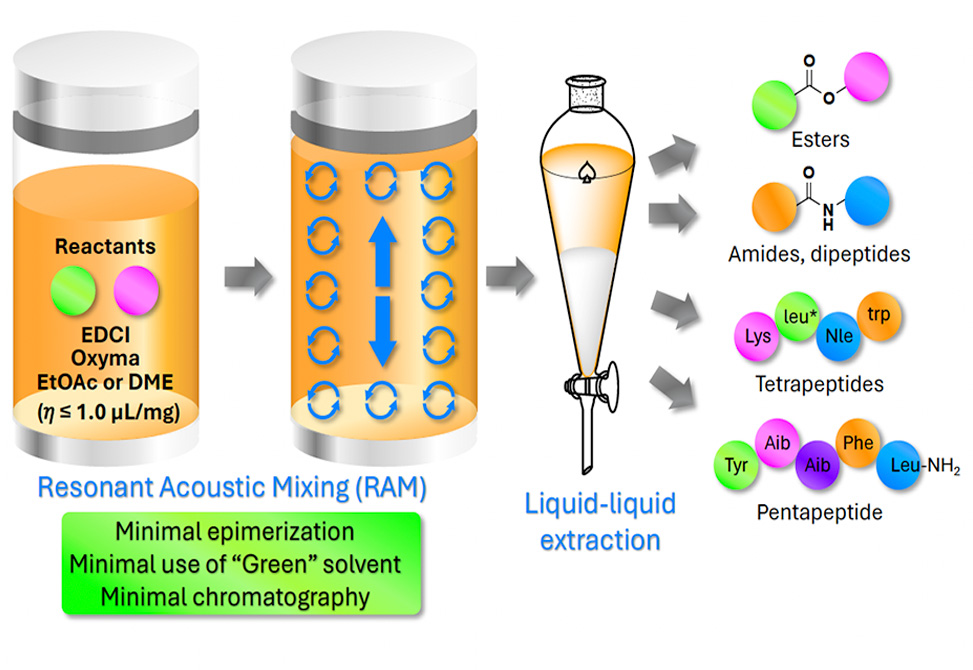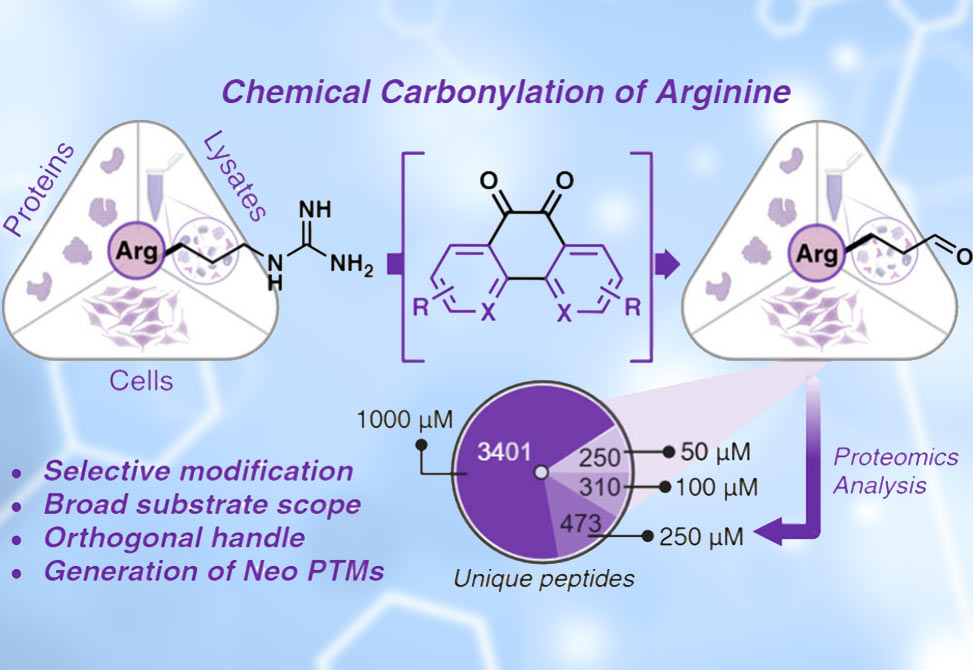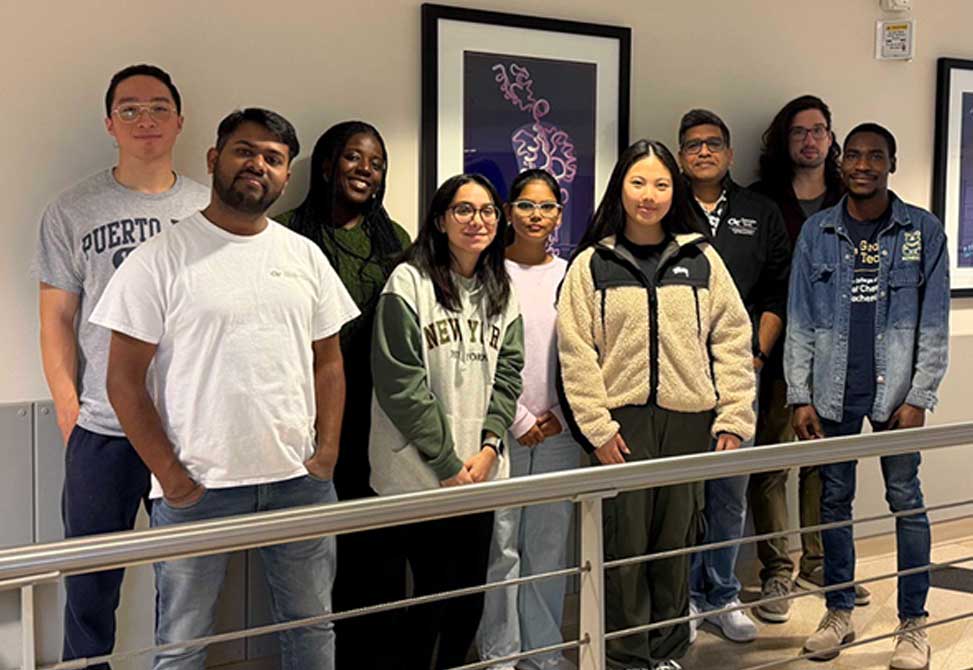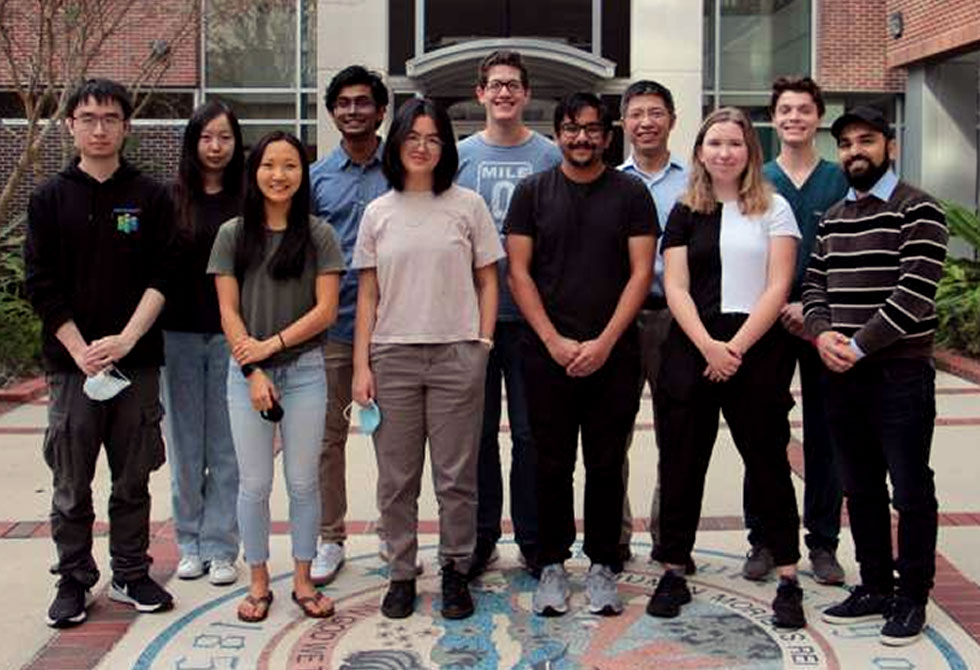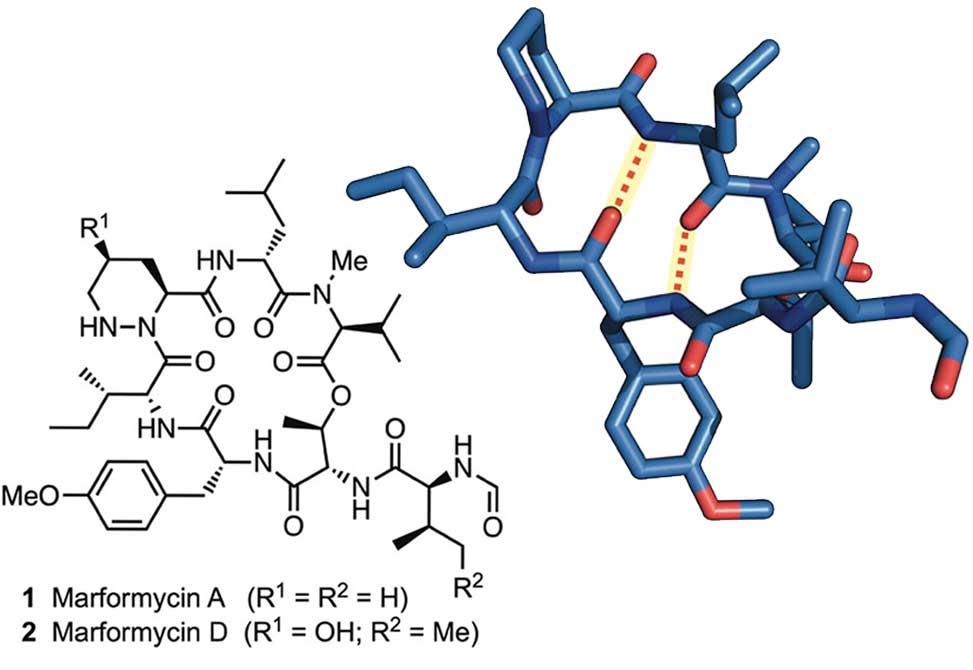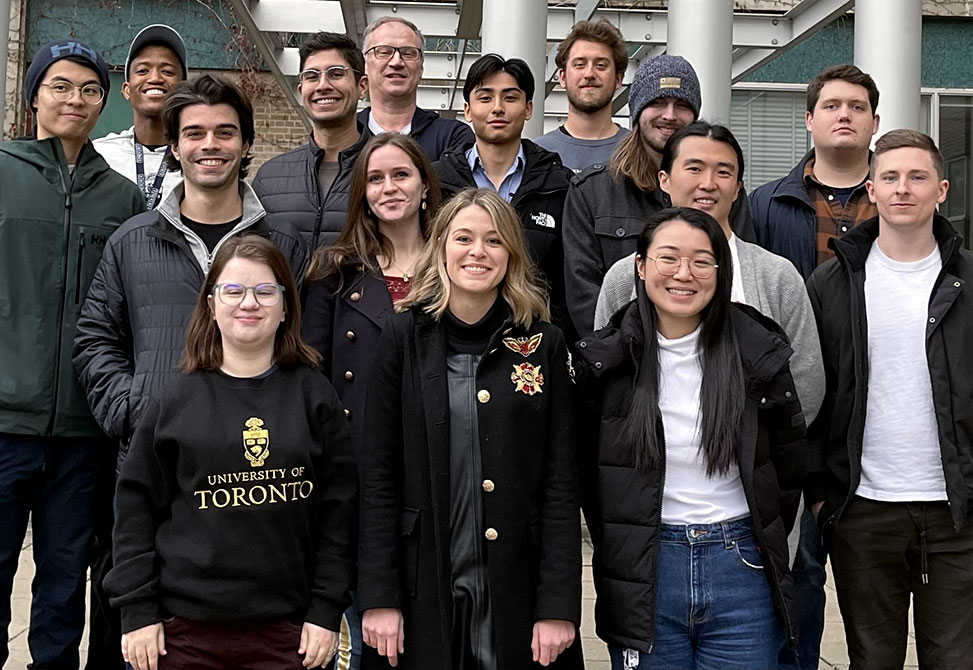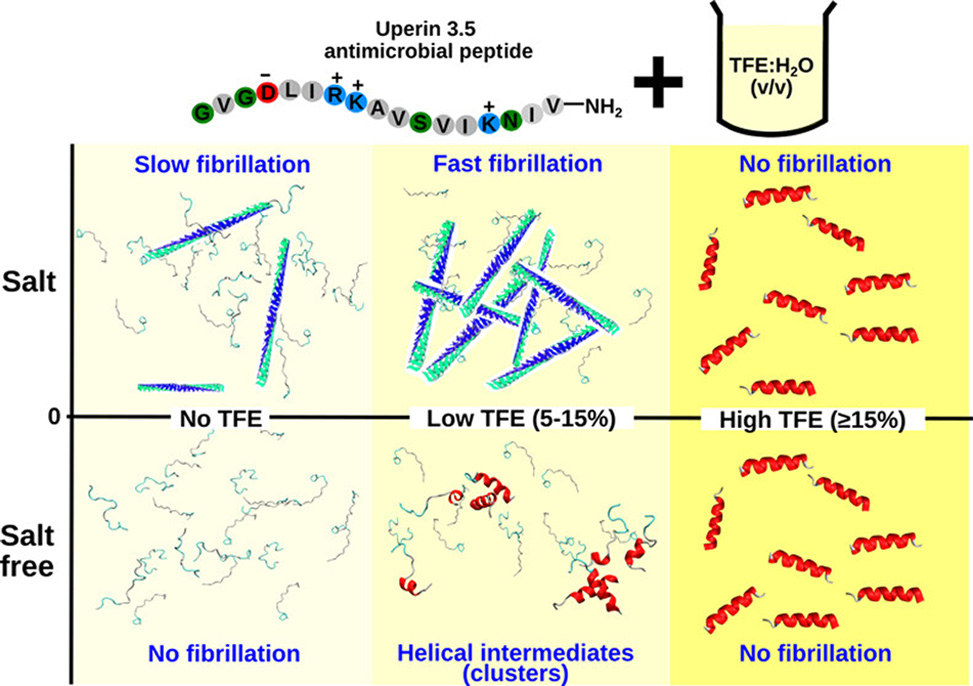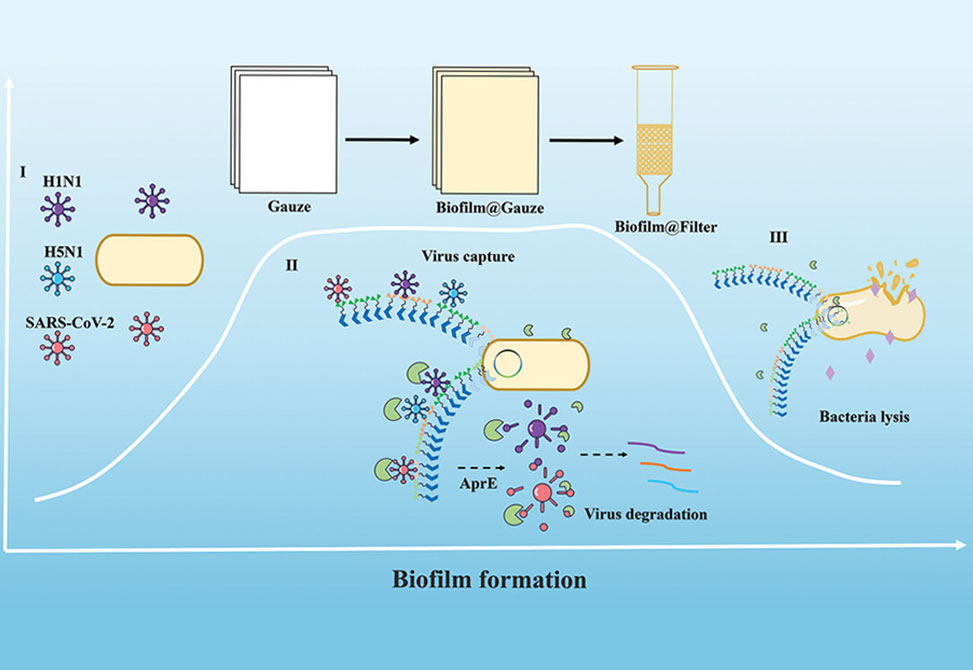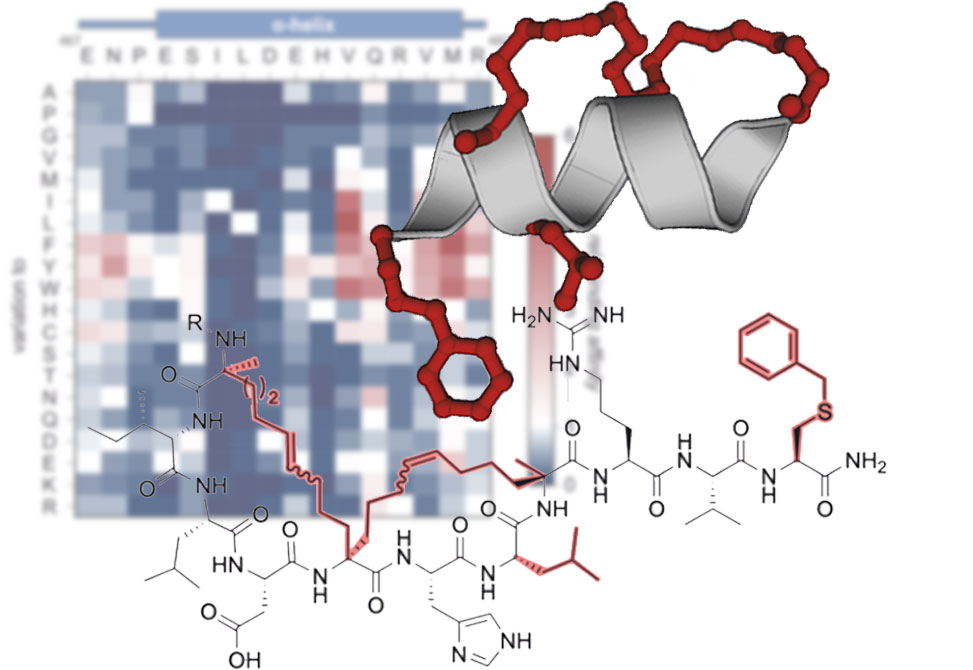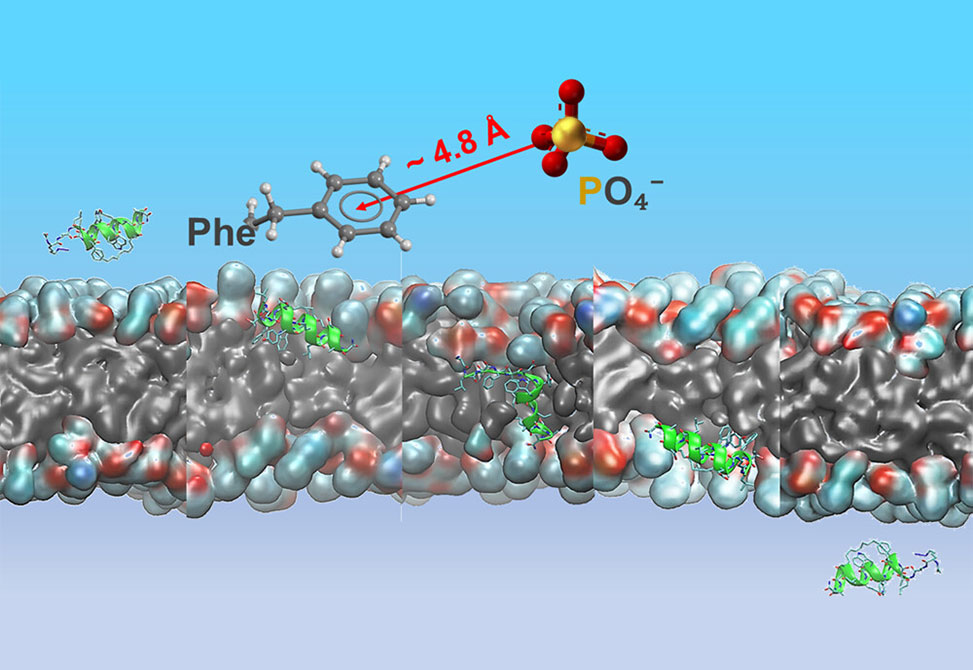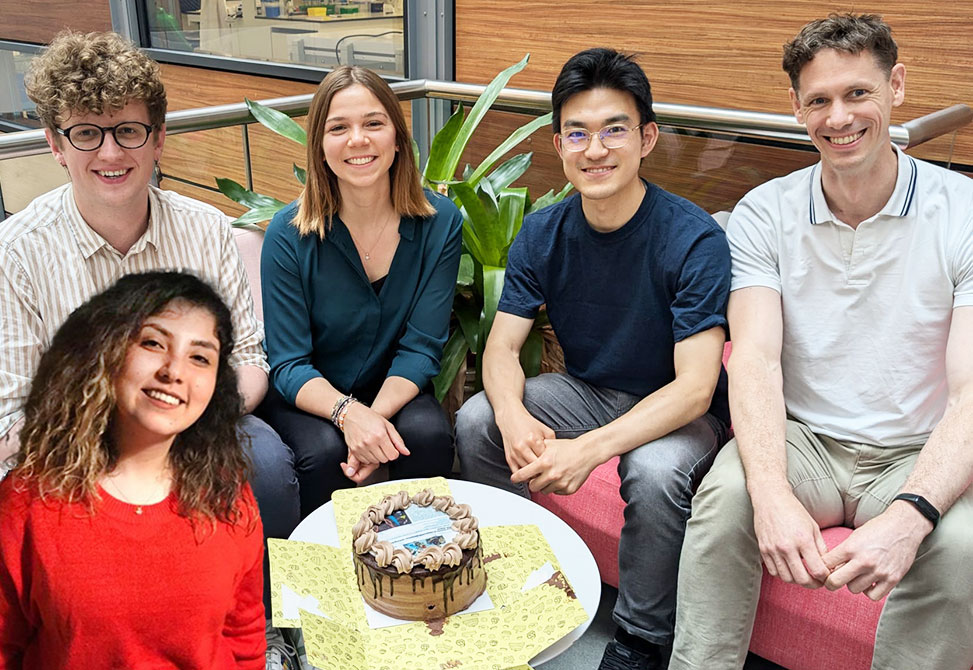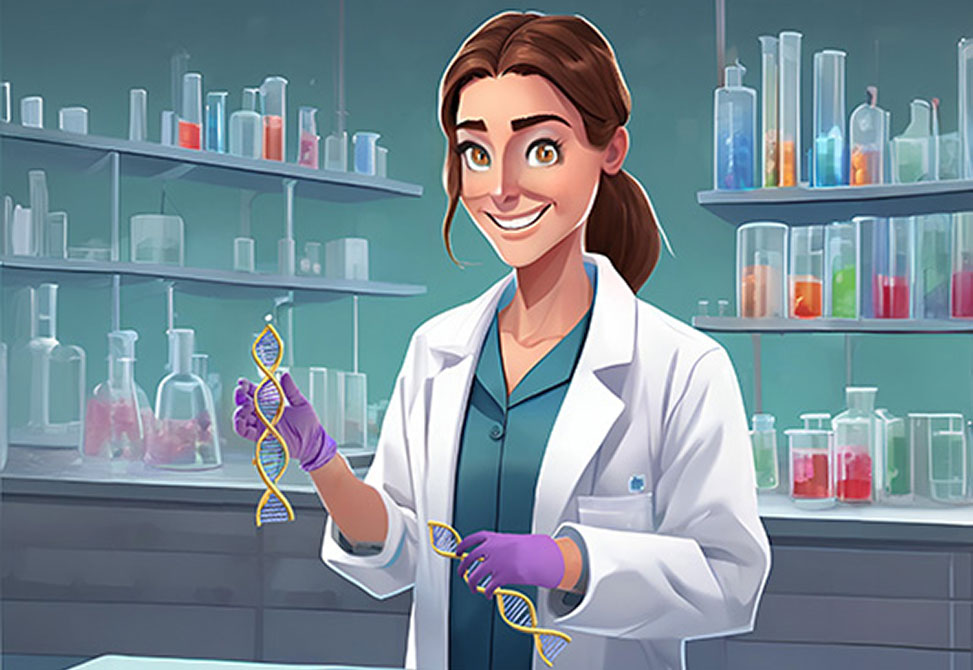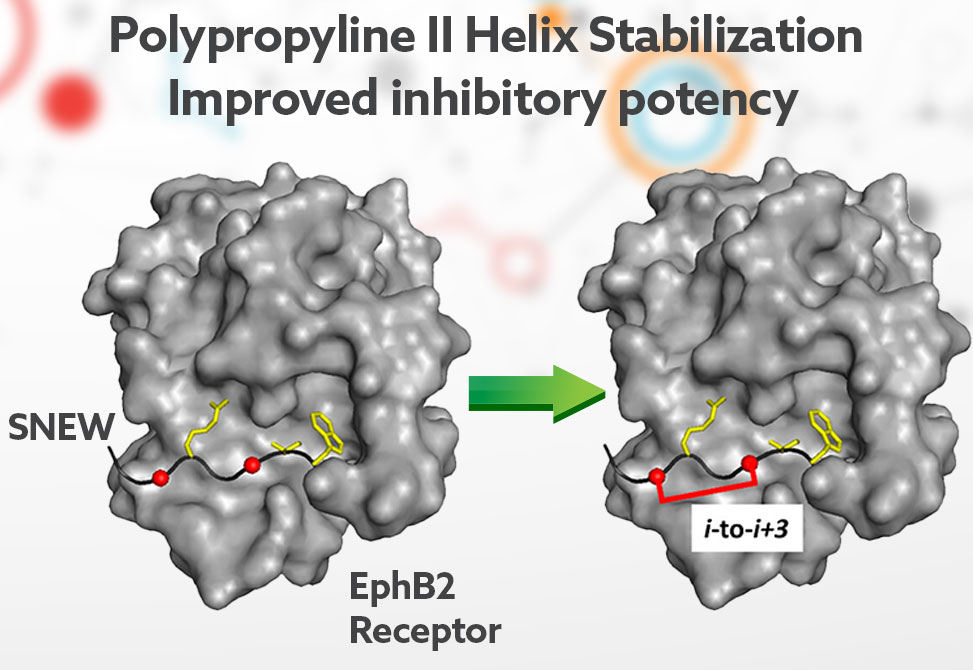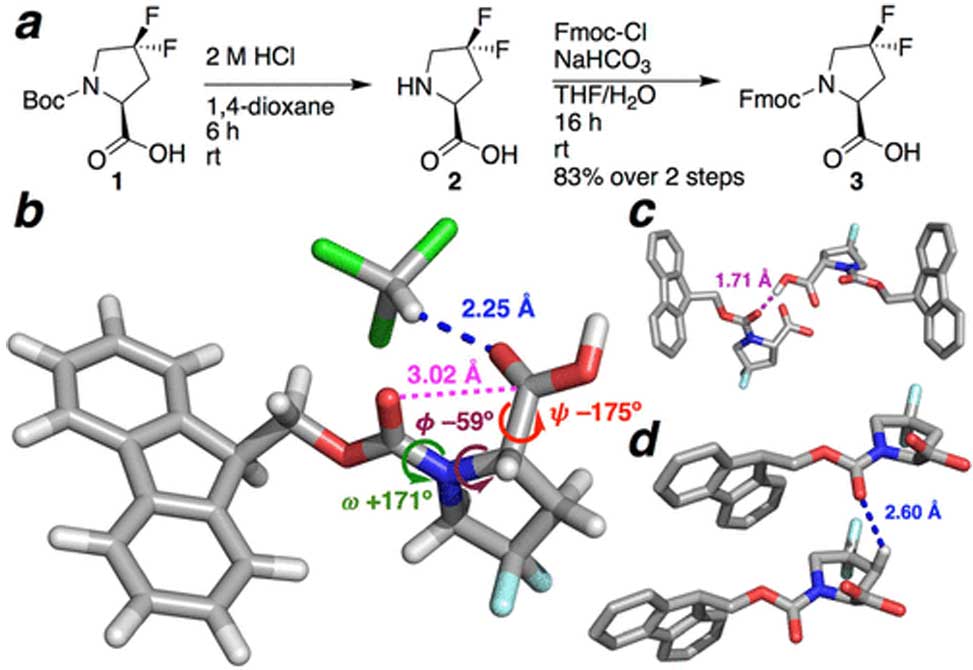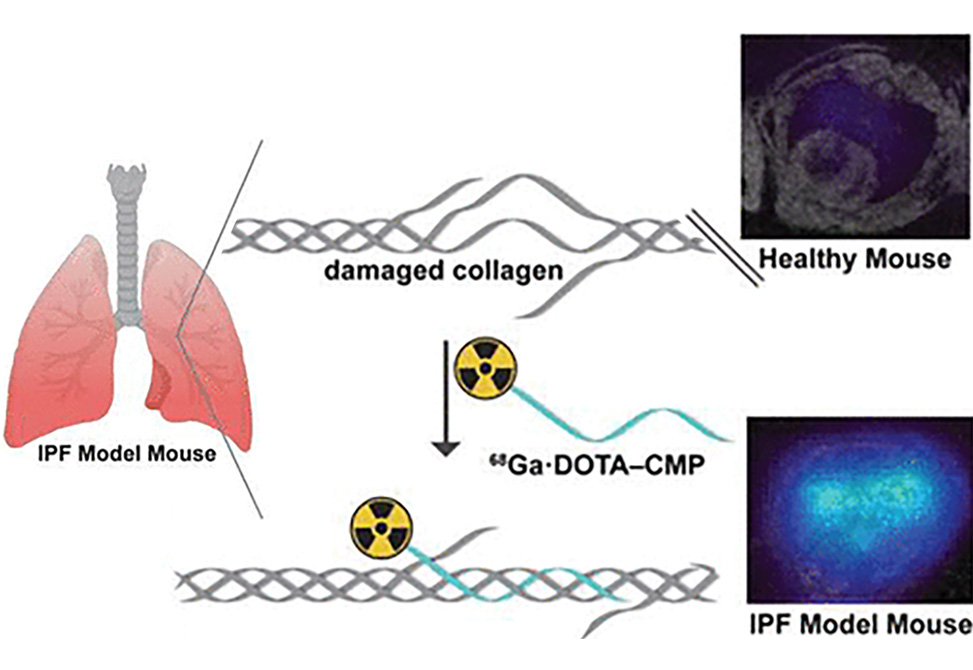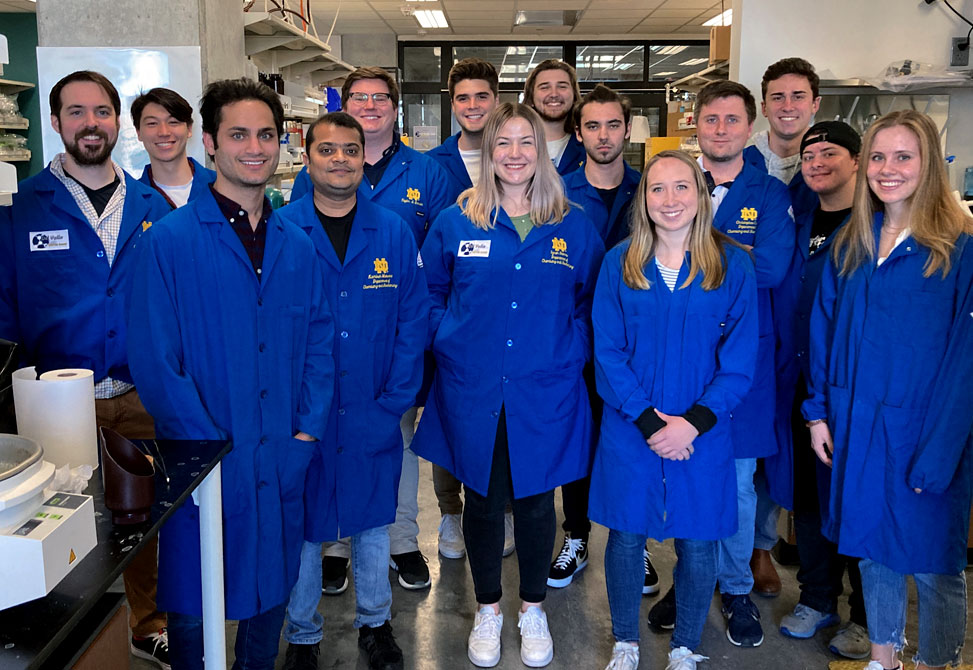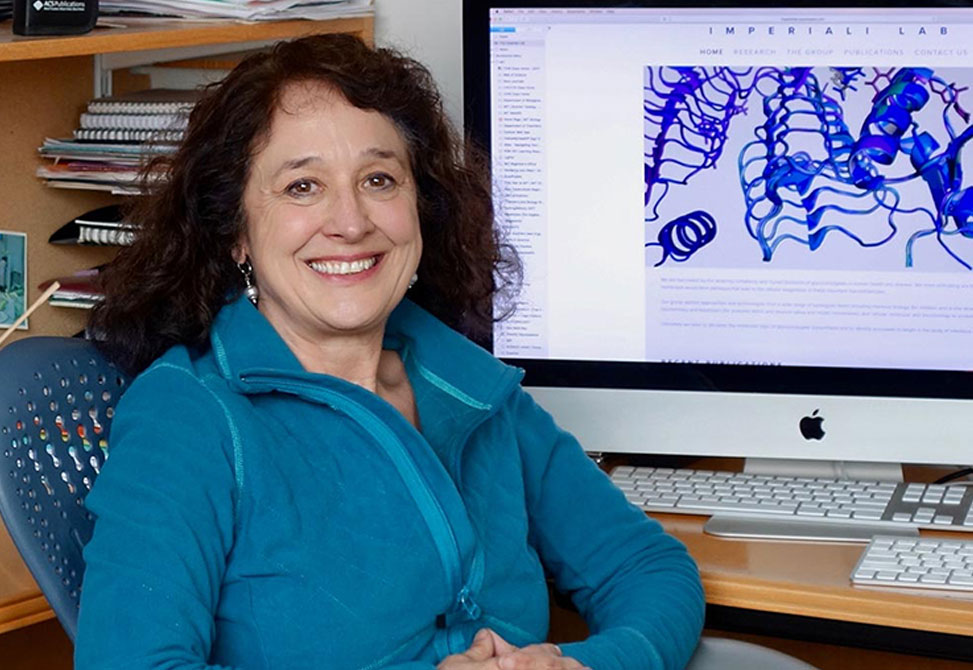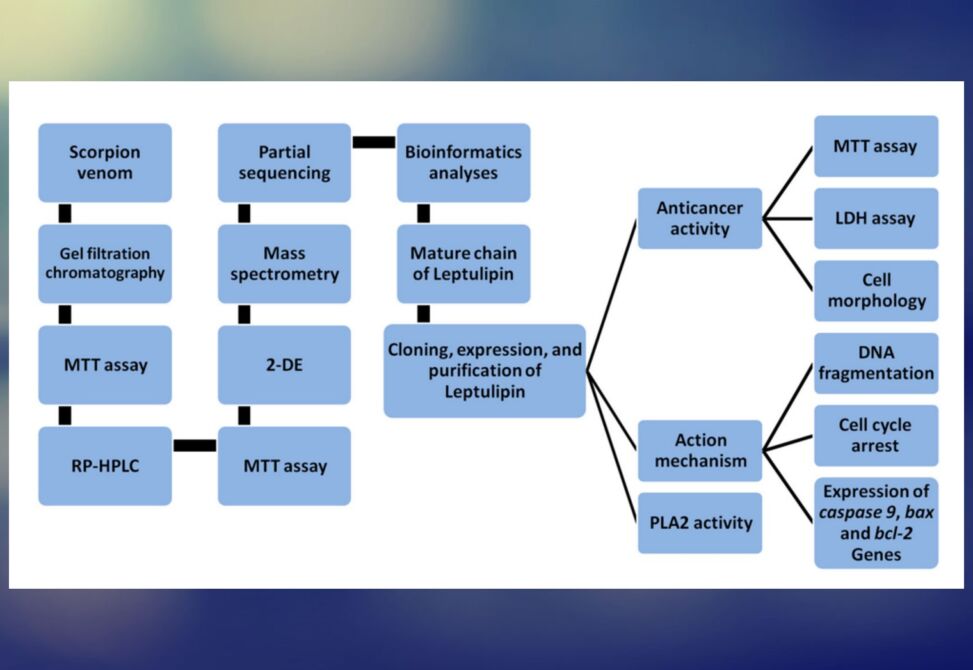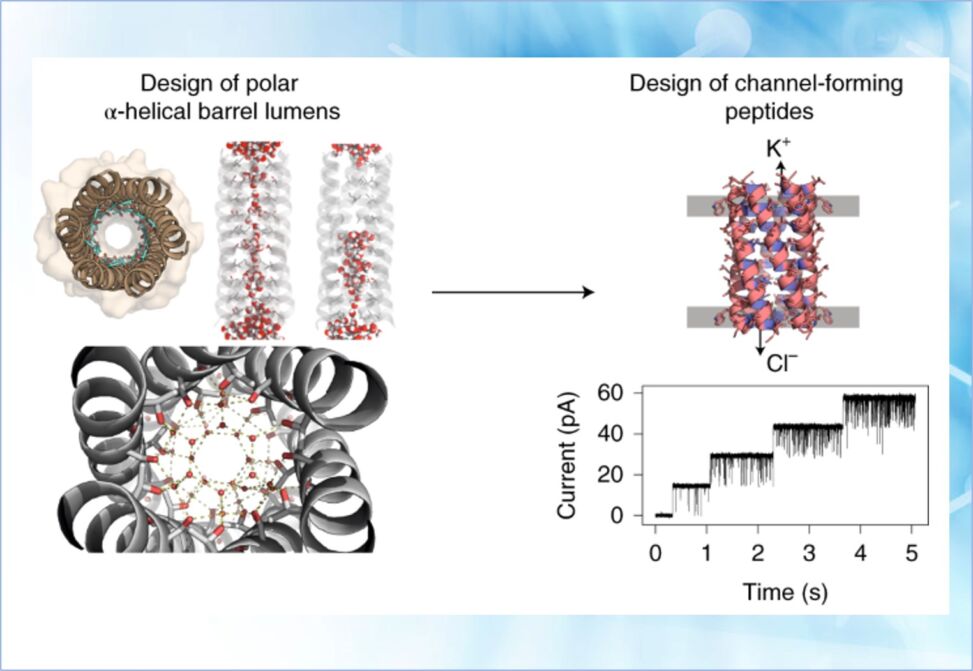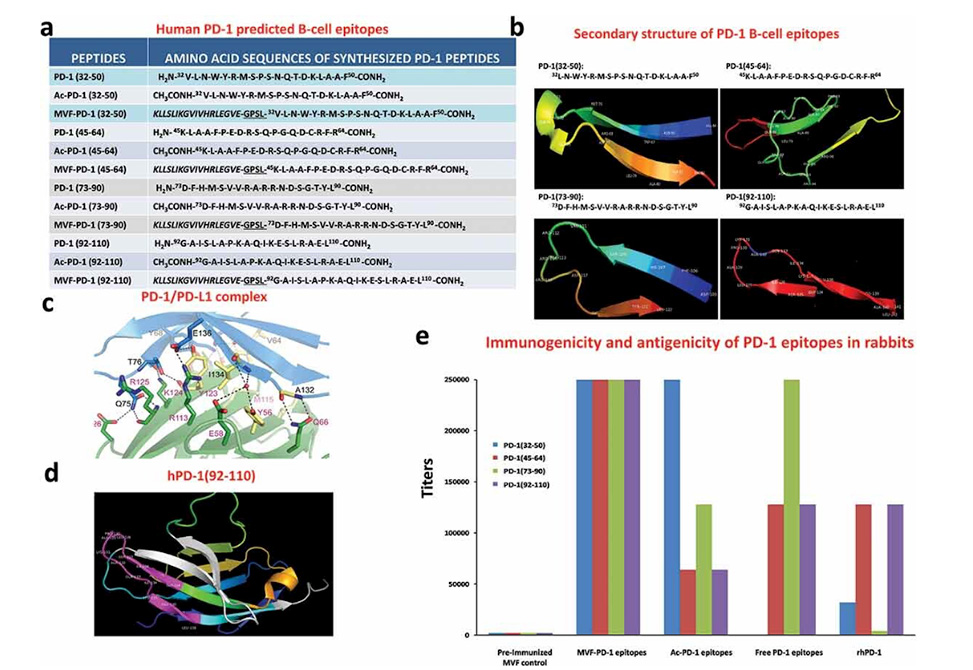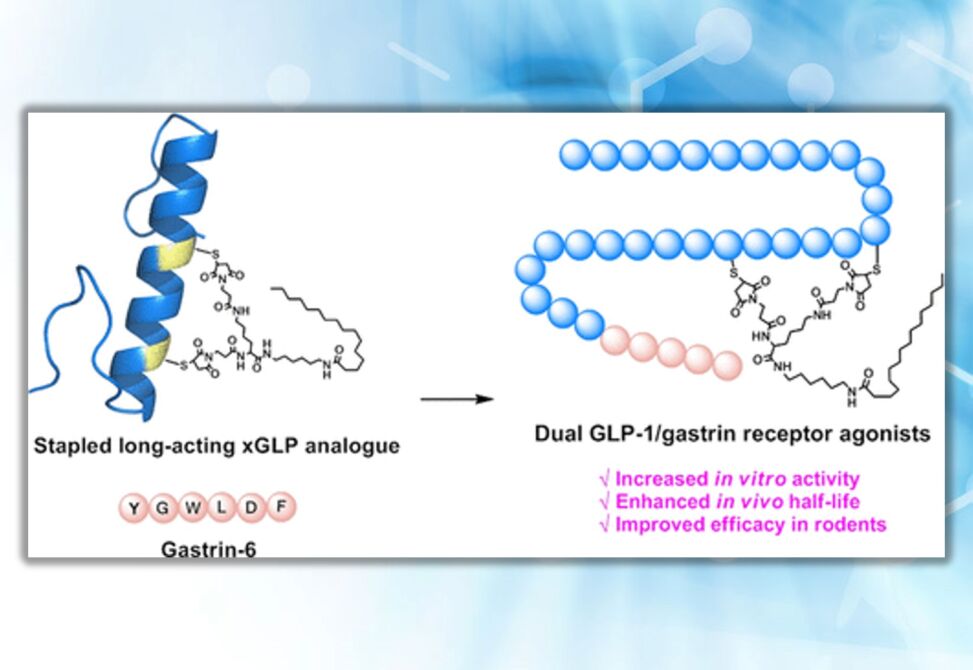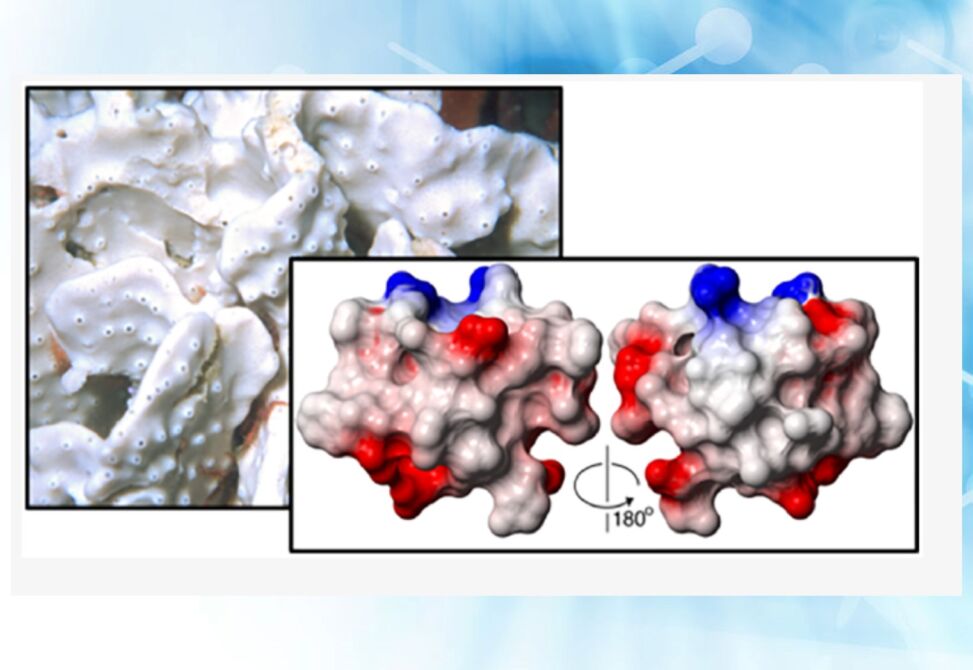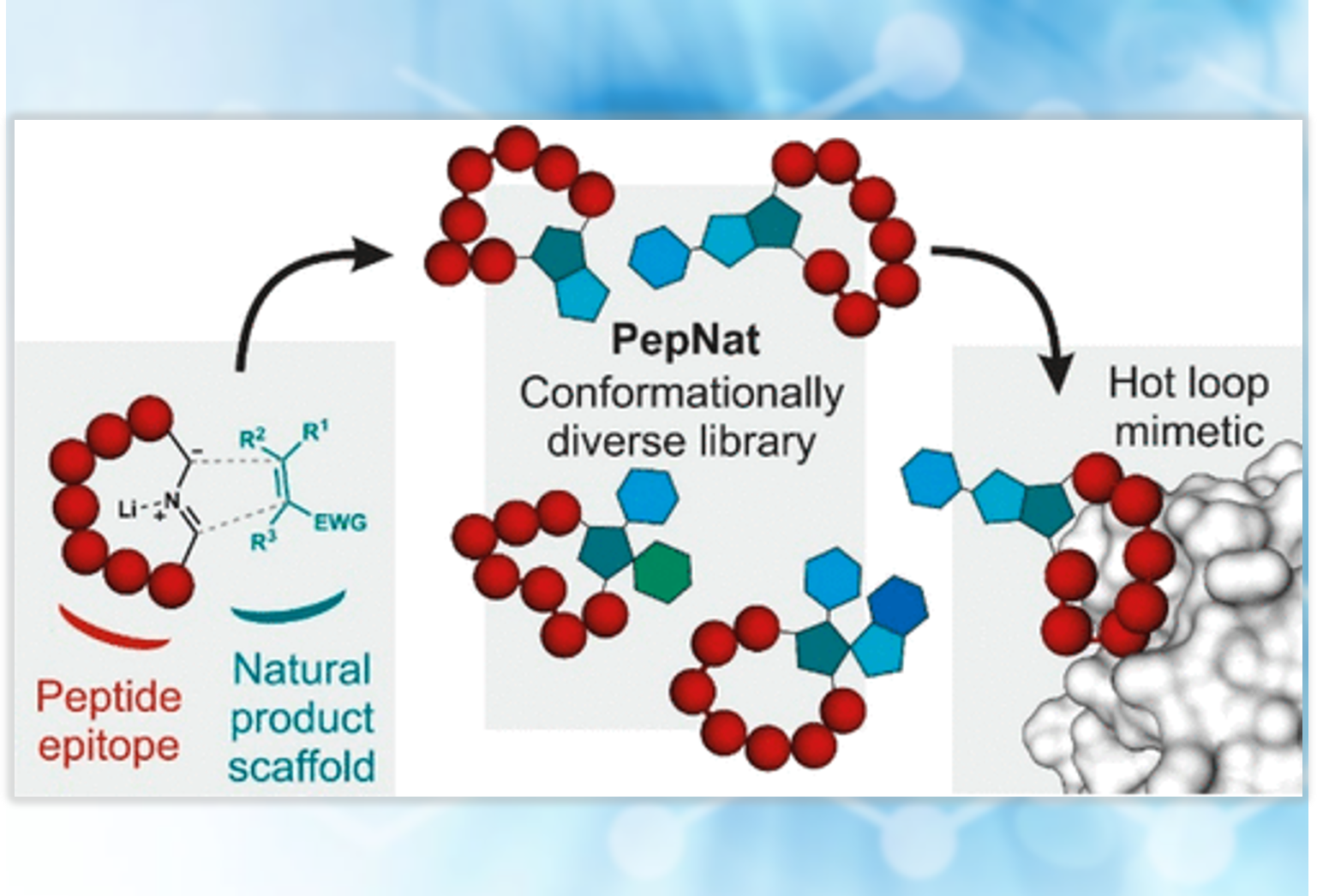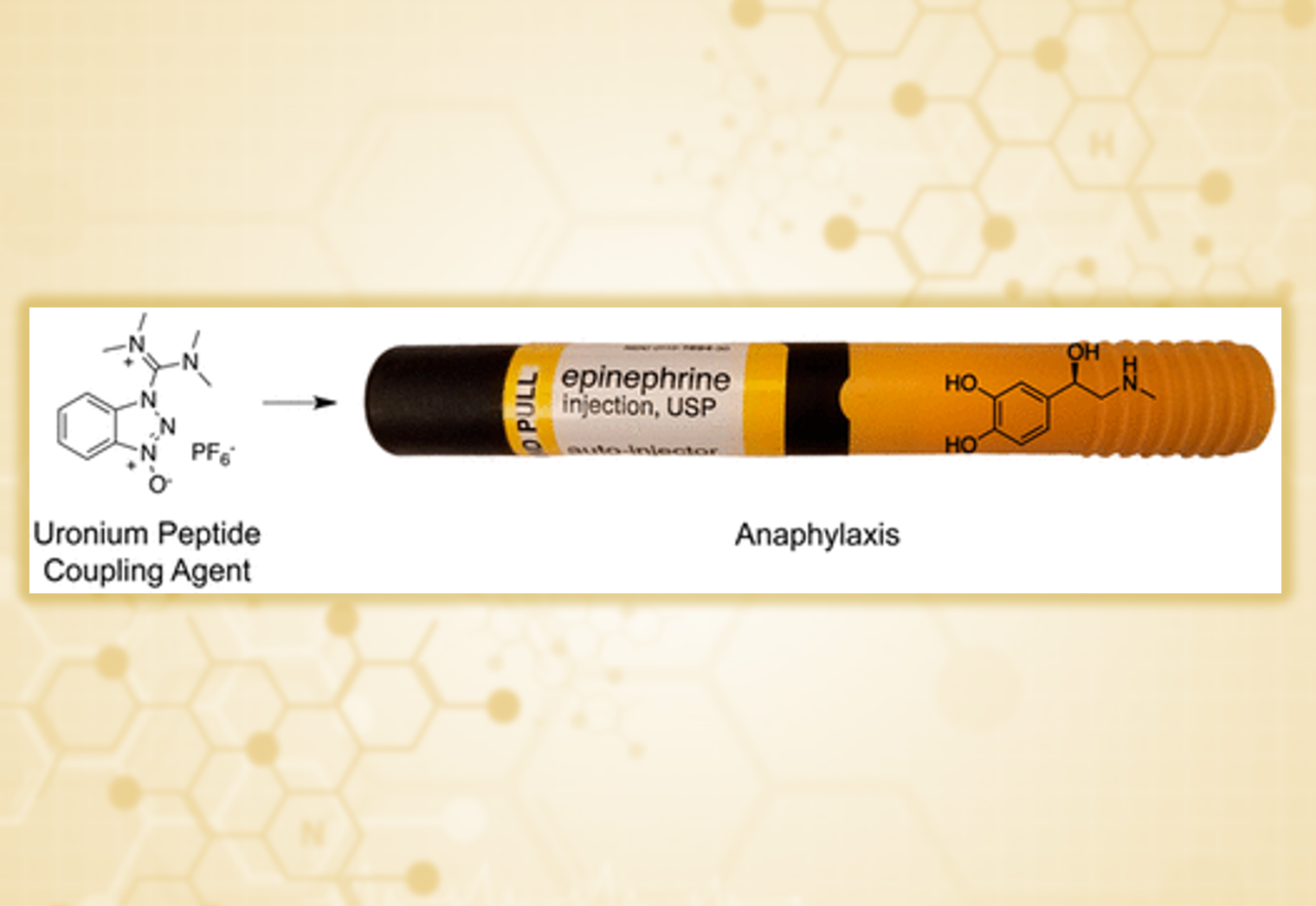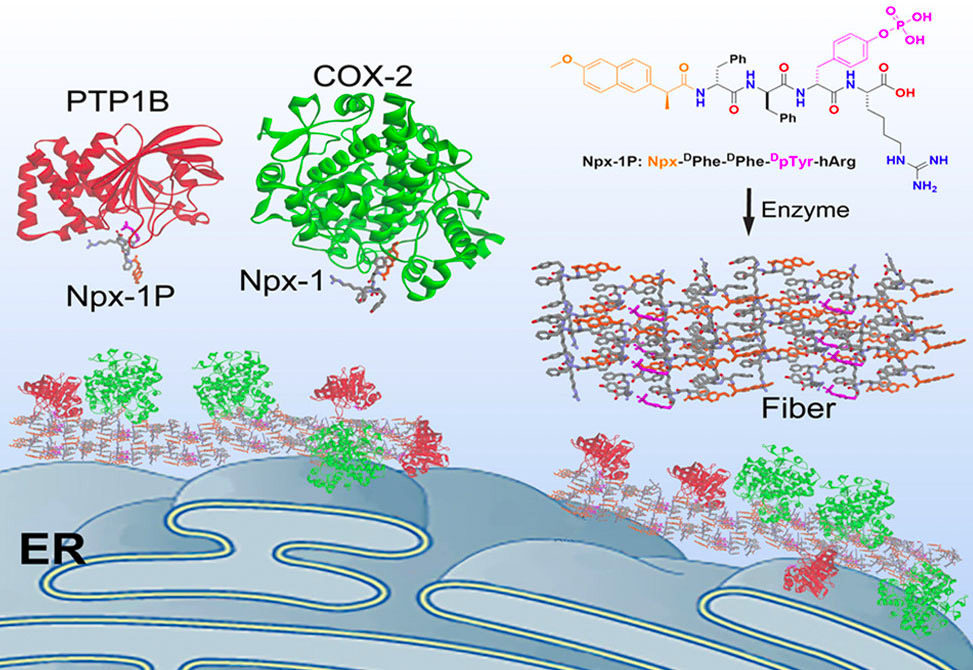News and Research Archive
Nitrogen Walks

Reflecting recent work in the Xiao lab
Noncanonical amino acids have become indispensable tools in chemical biology and drug discovery. By introducing side chains that nature never encoded, researchers can endow peptides and proteins with new functions, improved pharmacokinetics...
Binders by Design

Reflecting recent work in the Pomplun lab
Discovering high-affinity ligands directly from protein structures has long tantalized drug discovery scientists. Virtual screening can explore billions of small molecules computationally, yet hit rates remain low and affinities often modest...
Designing Droplets
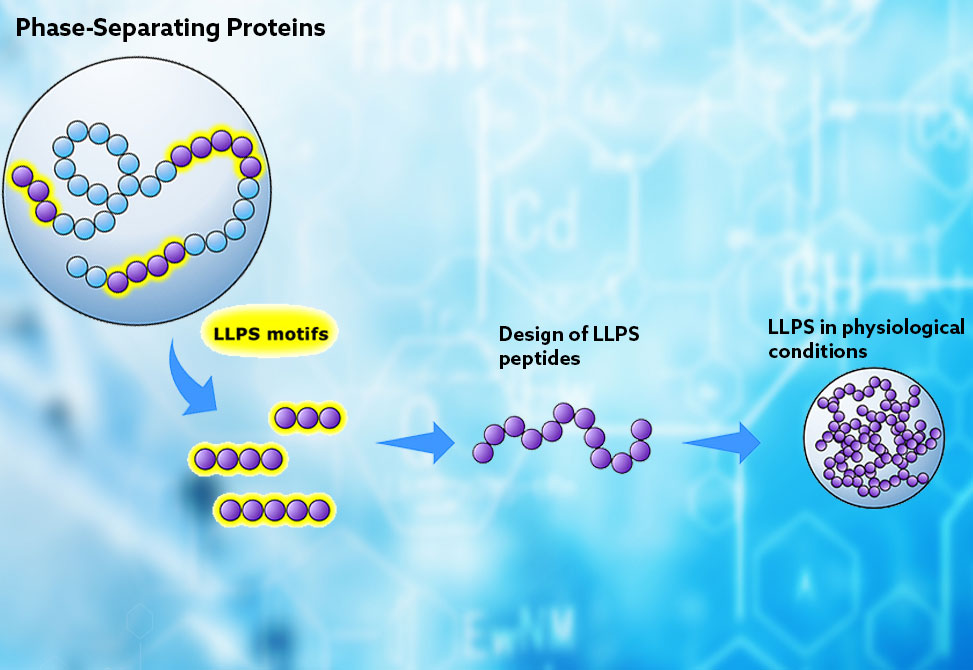
Reflecting recent work in the Pina lab
Cells organize their interiors not only with membranes but also through liquid-liquid phase separation, LLPS, the spontaneous demixing that creates membraneless organelles like nucleoli and stress granules. The stickers-and-spacers...
Catching Lanthanides

Reflecting recent work in the Zeymer lab
Lanthanide ions offer an extraordinary toolkit for biomolecular engineering. Their long-lived luminescence enables sensitive detection, their paramagnetism provides NMR structural probes, their strong anomalous X-ray scattering aids crystallography...
Clicking Safely
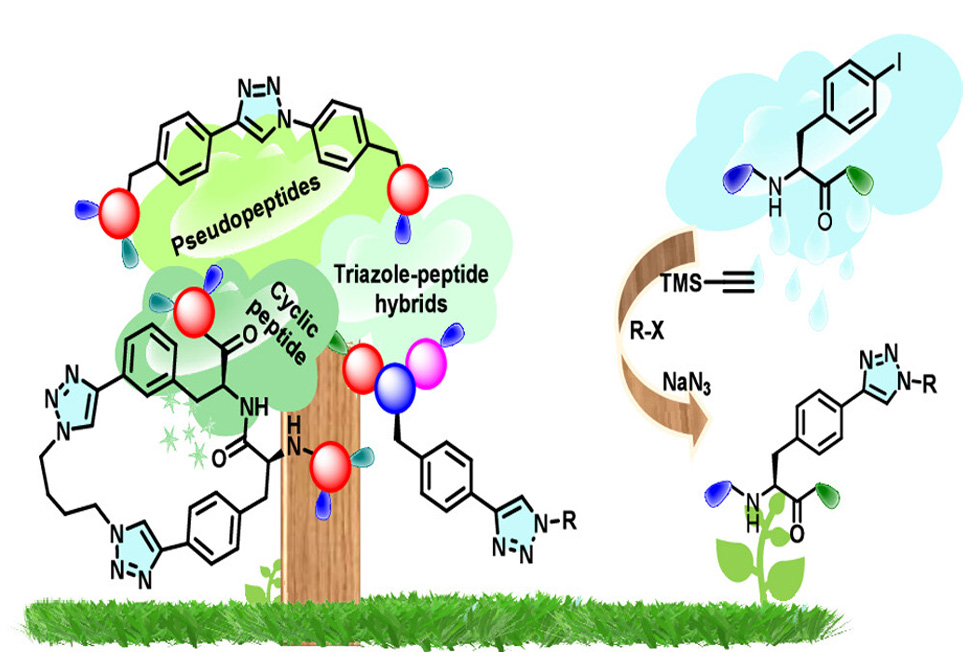
Reflecting recent work in the Rahul lab
The 1,2,3-triazole ring has become indispensable in peptidomimetic design. Its geometry and electronic properties closely mimic the trans-amide bond: similar planarity, comparable dipole moment, and preserved hydrogen-bonding...
Beyond Alpha

Reflecting recent work in the Yazaki lab
Unnatural amino acids have transformed both medicinal chemistry and chemical biology. By introducing side chains that nature never encoded, chemists can enhance metabolic stability, tune biological activity, and create peptide therapeutics with properties their natural counterparts lack. Among these modifications...
Mirror-Image Hunters

Reflecting recent work in the Ingrid lab
Chemokines make frustrating drug targets. These small signaling proteins orchestrate immune cell migration during inflammation, making them attractive therapeutic targets for conditions ranging from atherosclerosis to arthritis. Yet their relatively smooth...
Taming Aggregation

Reflecting recent work in the Hartrampf lab
Peptide chains misbehave. During solid-phase peptide synthesis, growing chains can collapse into sticky β-sheet structures that clog the resin, block coupling reactions, and leave chemists with impure products. This aggregation problem ...
Ribosomal Bicycles
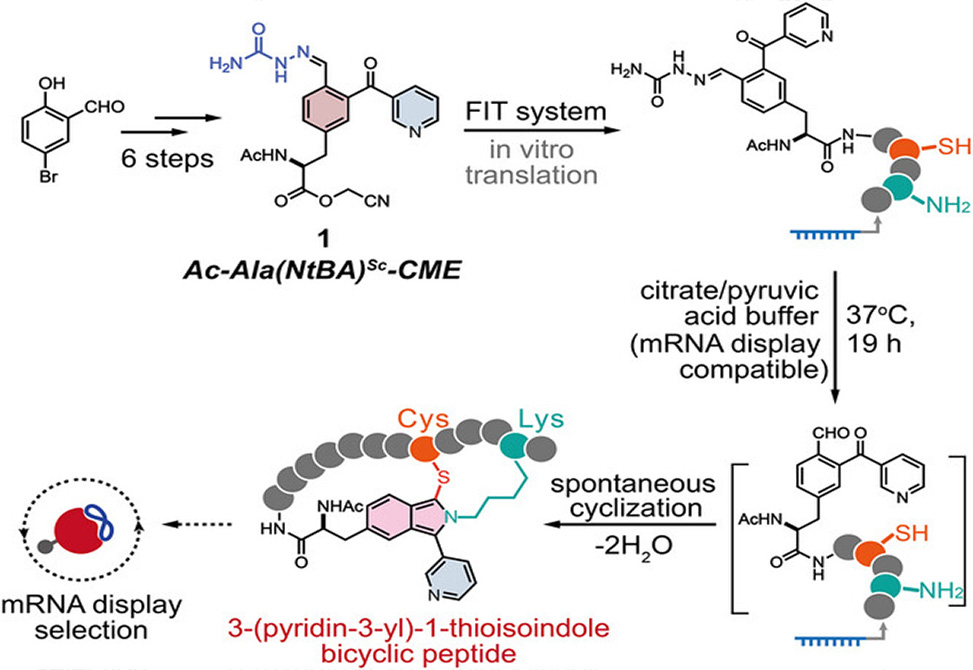
Reflecting recent work in the Suga lab
Bicyclic peptides occupy a sweet spot in drug discovery. Their constrained architectures resist proteolytic degradation and bind targets with antibody-like specificity, yet they remain small enough for potential oral delivery. Building libraries of these...
Luminescent Nanosheets

Reflecting recent work in the Granja lab
Two-dimensional materials have captivated researchers since graphene's isolation in 2004, offering properties unmatched by their bulk counterparts. High surface areas, tunable electronics, and morphological anisotropy make these ultrathin...
Crossing Cell Barriers
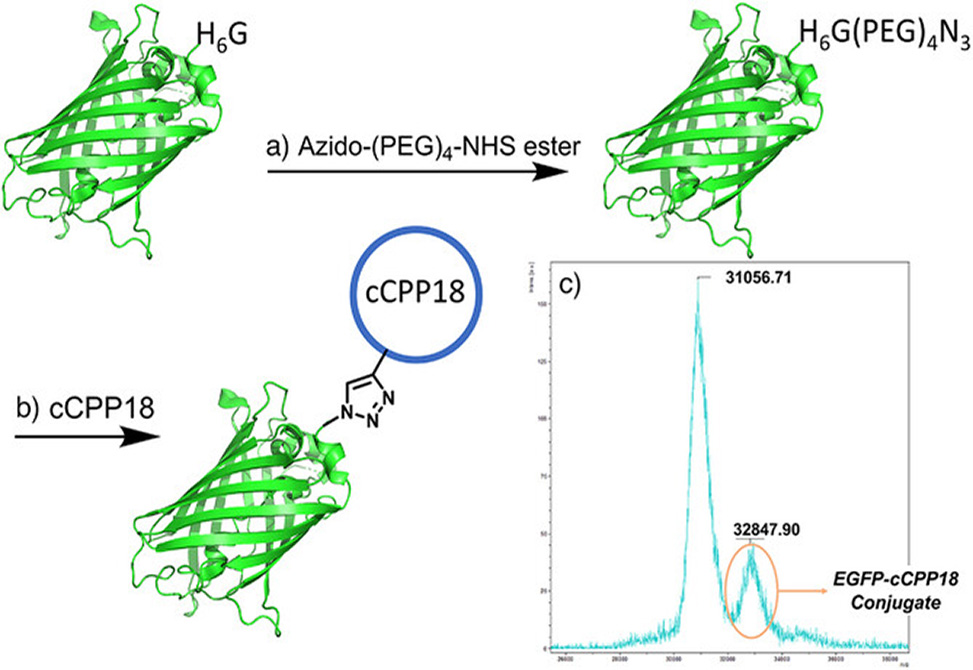
Reflecting recent work in the Meldal lab
The cell membrane stands as biology's most formidable gatekeeper. Large molecules, from therapeutic proteins to diagnostic agents, cannot simply walk through. This barrier has frustrated drug developers for decades, leaving countless intracellular targets, including protein-protein interactions...
Guided Precision
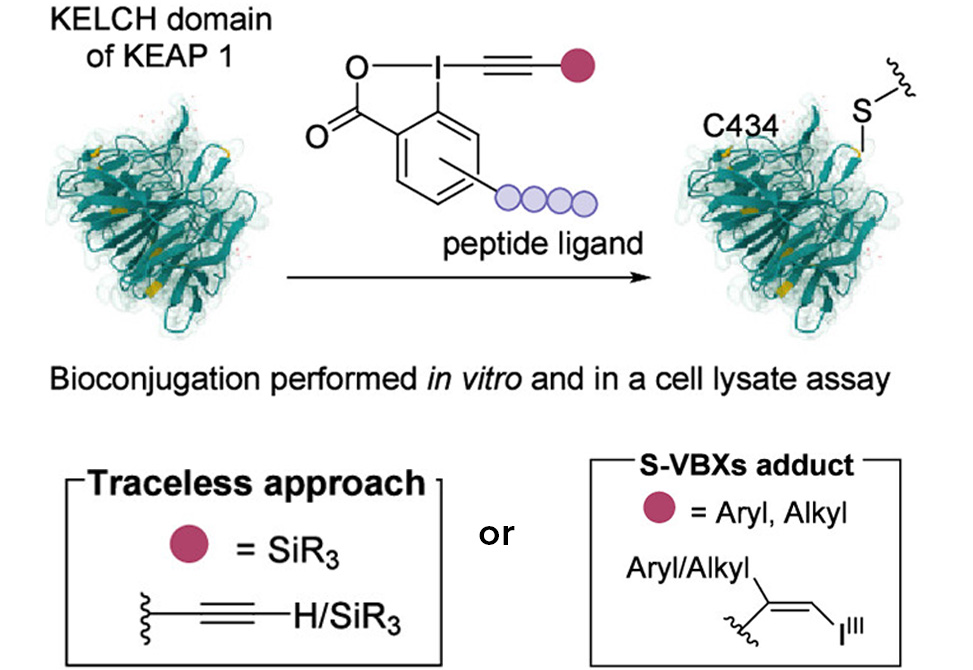
Reflecting recent work in the Waser lab
Cysteine residues attract chemical attention. Their nucleophilic thiol groups react readily with electrophiles, making them popular handles for attaching drugs, fluorophores, and other payloads to proteins. Yet this reactivity creates...
Borrowed Machinery

Reflecting recent work in the Xu lab
N-myristoylation is a common posttranslational modification in which the enzyme N-myristoyltransferase, NMT, attaches a 14-carbon fatty acid to an N-terminal glycine residue. This lipid anchor governs...
Photoclick Bicycles
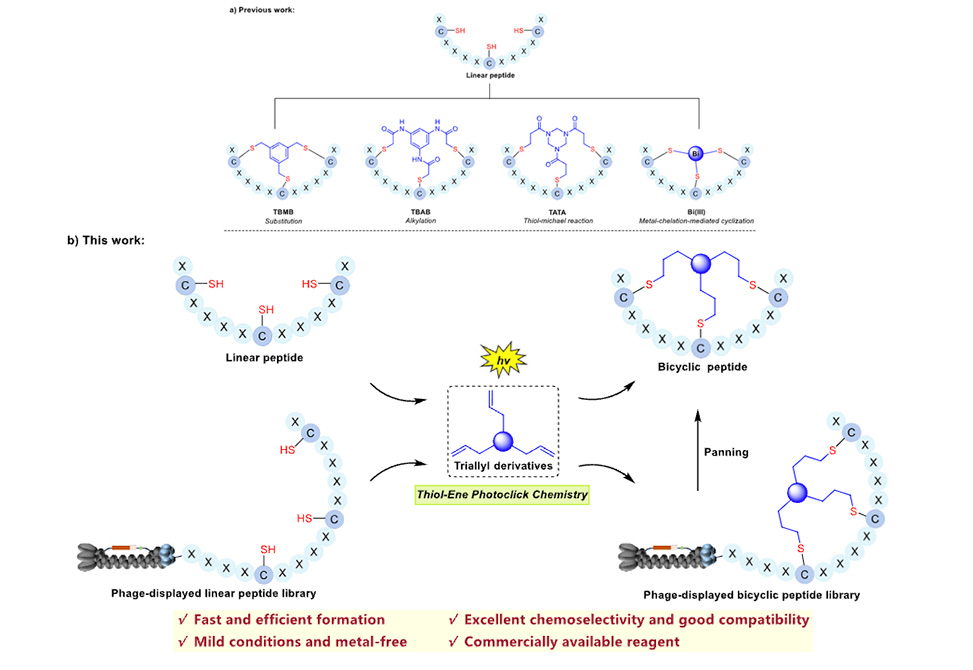
Reflecting recent work in the Lei lab
Bicyclic peptides offer exceptional promise for targeting protein-protein interactions, combining the conformational rigidity needed for high-affinity binding with improved metabolic stability. Yet their construction remains problematic. Conventional crosslinking...
Modeling Selectivity

Reflecting recent work in the Miller lab
Chiral sulfur compounds are gaining traction in drug discovery. Unlike their achiral counterparts, molecules with stereogenic sulfur centers often show improved potency and selectivity. IFM Therapeutics recently demonstrated this principle...
Helical Hijackers
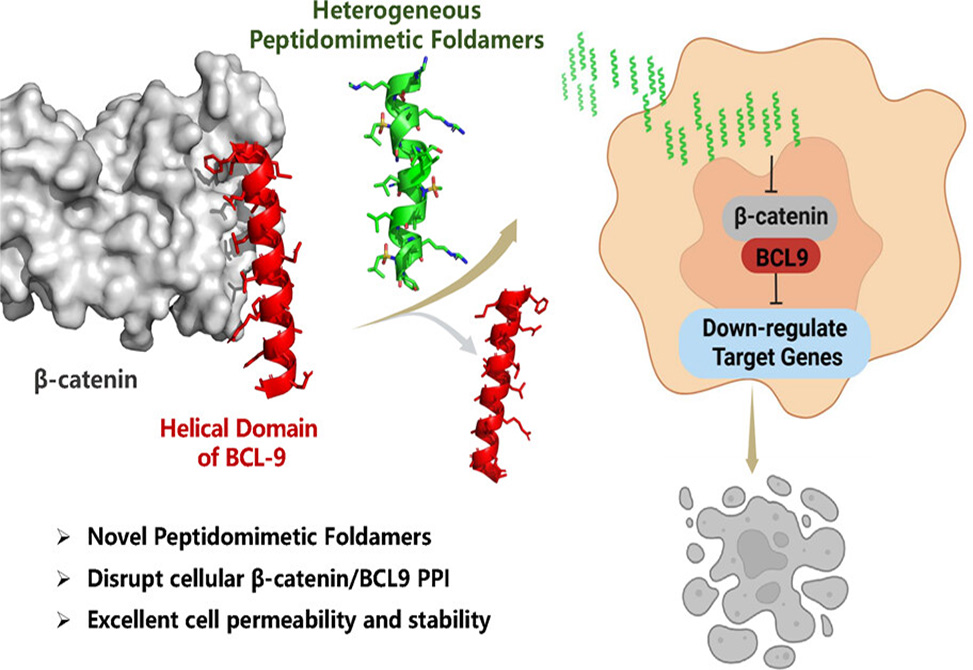
Reflecting recent work in the Cai lab
The Wnt/β-catenin signaling pathway governs embryonic development, stem cell maintenance, and tissue homeostasis. When aberrantly activated, it drives colorectal cancer and other malignancies. Inside the nucleus, β-catenin assembles...
Masked Sugars
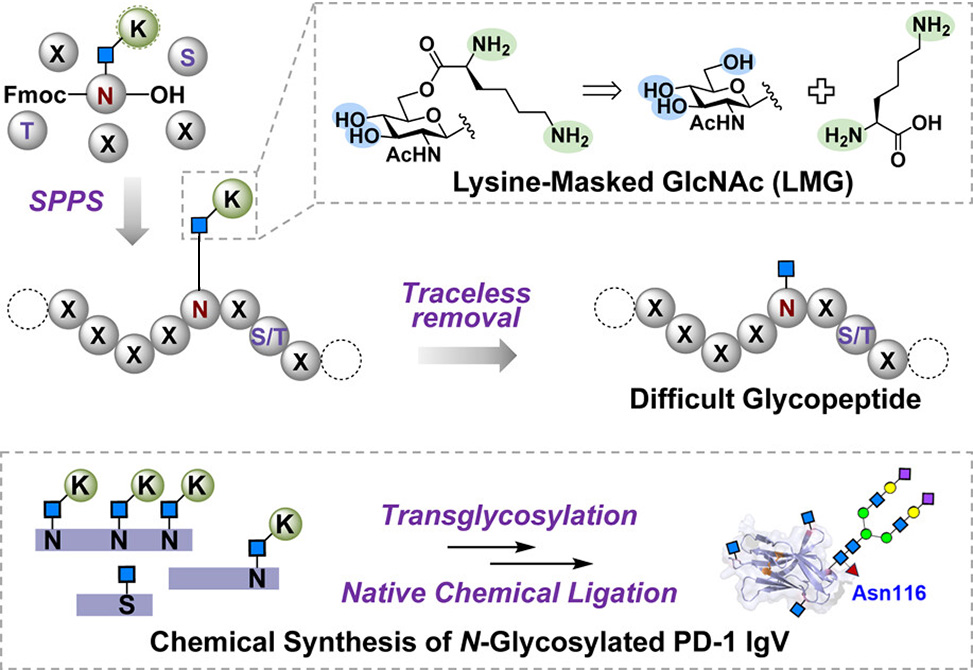
Reflecting recent work in the Dong lab
Chemical synthesis provides atomic-level control over glycoprotein structure, yet hydrophobic sequences often aggregate before chemists can purify or ligate them. This problem may intensify for some sequences bearing ...
Optimizing Peptide Switches
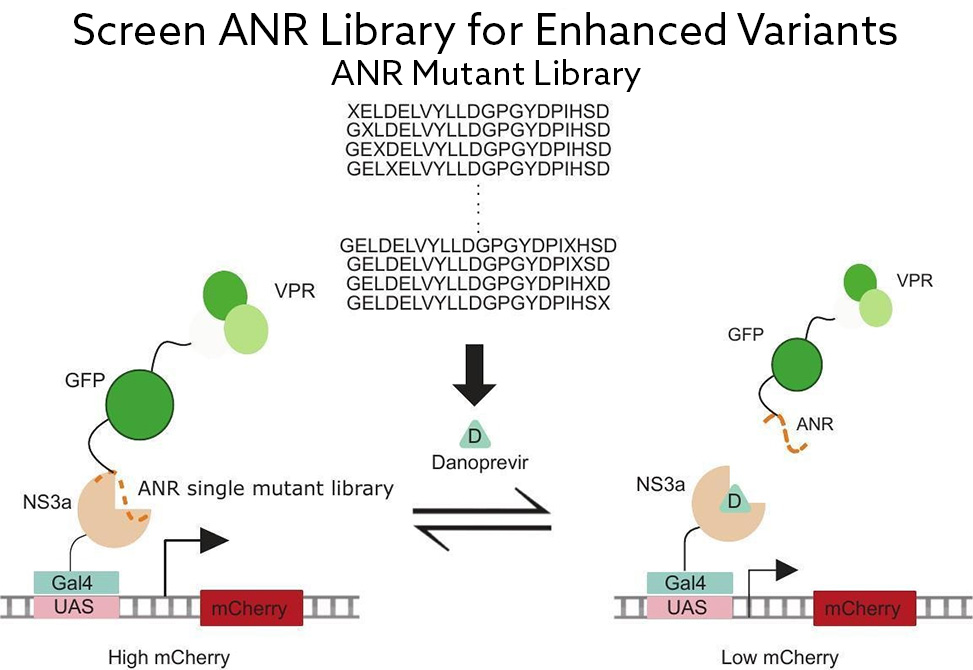
Reflecting recent work in the Maly lab
Chemically-controlled genetic tools allow researchers to switch cellular processes on or off with small molecules, offering precise temporal and dose-dependent control. While chemically-inducible dimerization systems are well established, their conceptual inverse, chemically-disrupted proximity, CDP, systems, remain less developed...
Gelatinase Targeting
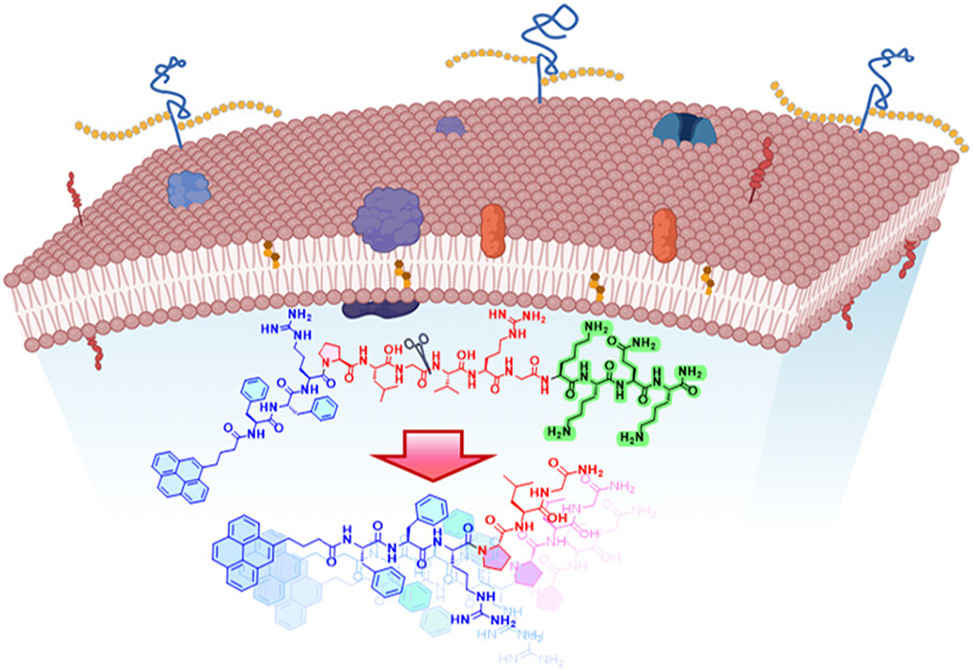
Reflecting recent work in the Amitava lab
Antibiotic resistance in Staphylococcus aureus thrives on biofilm fortifications and membrane resilience, which blunt broad-spectrum drugs and damage commensal flora. A modular short peptide, Py-FGGK, answers that challenge by...
β-Hairpin Oligomers
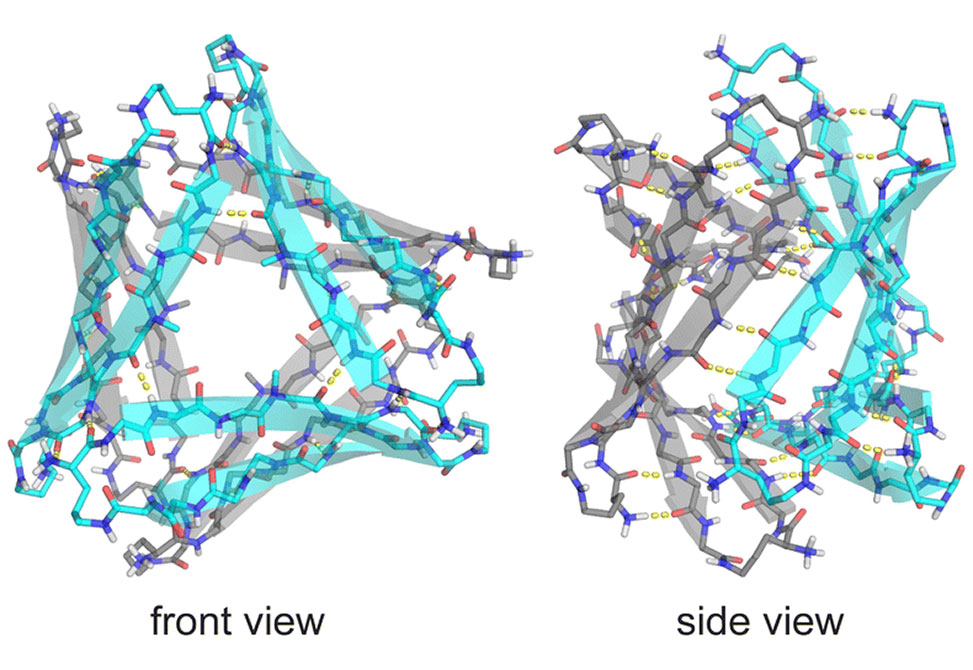
Reflecting recent work in the Nowick lab
Researchers in the Nowick Group at the University of California Irvine, reveal how a designed β-hairpin peptide derived from amyloid-β, Aβ, crosses the boundary from disordered aggregation to a defined asymmetric hexamer–dodecamer assembly, illuminating molecular rules that shape Aβ oligomers in Alzheimer’s disease...
Taming Arginine

Reflecting recent work in the Raj lab
Selective modification of amino acid side chains has become a central strategy for expanding peptide function beyond the limits of ribosomal chemistry. Yet one residue remains notably resistant to this creativity. Arginine, which contributes nearly six percent of residues in proteins...
TCR Peptide Design
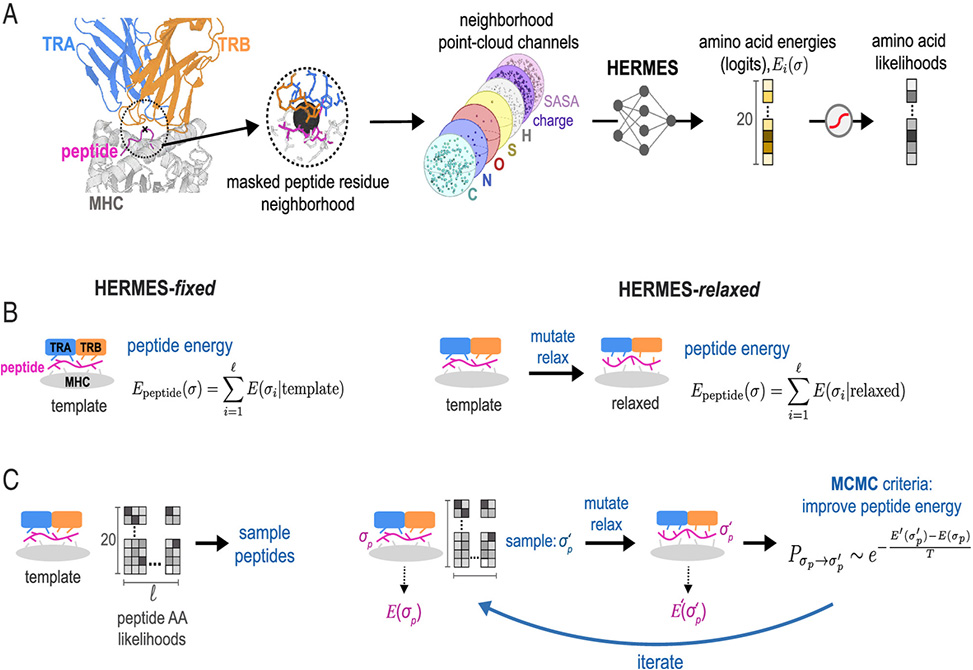
Reflecting recent work in the Nourmohammad lab
In work published in PNAS, Visani and colleagues from the University of Washington, introduce a structure-aware machine learning approach that forecasts TCR–peptide–MHC interactions and designs new immunogenic peptides that trigger T cell responses...
Docking Bias
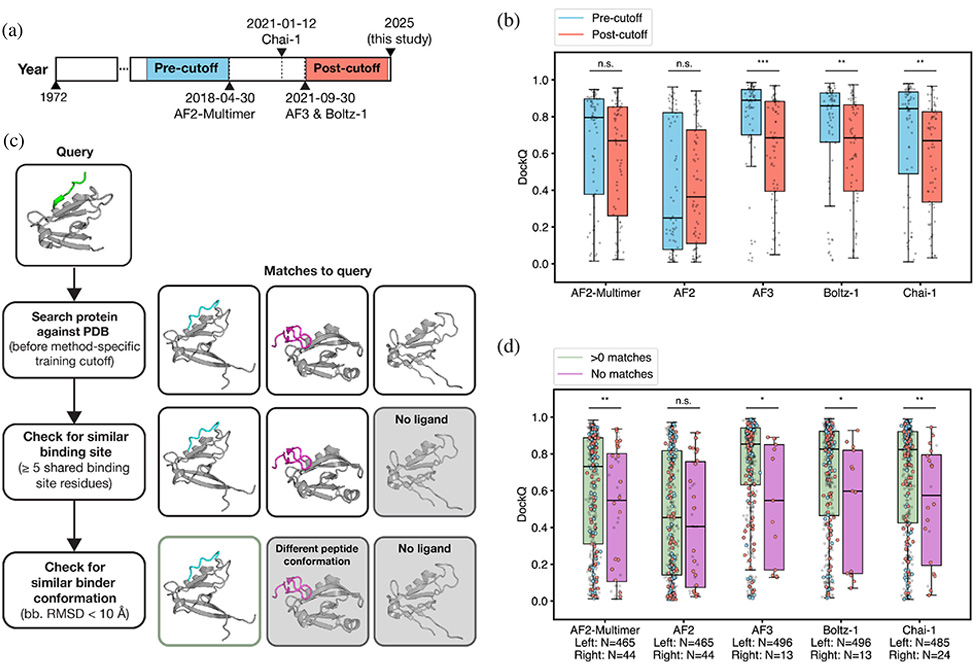
Reflecting recent work in the Keating lab
Deep-learning structure predictors now place many peptides correctly onto their protein partners, and this recent work from Lindsey Guan and Amy Keating at the Massachusetts Institute of Technology, published in Protein Science, explains...
Dilp Divergence
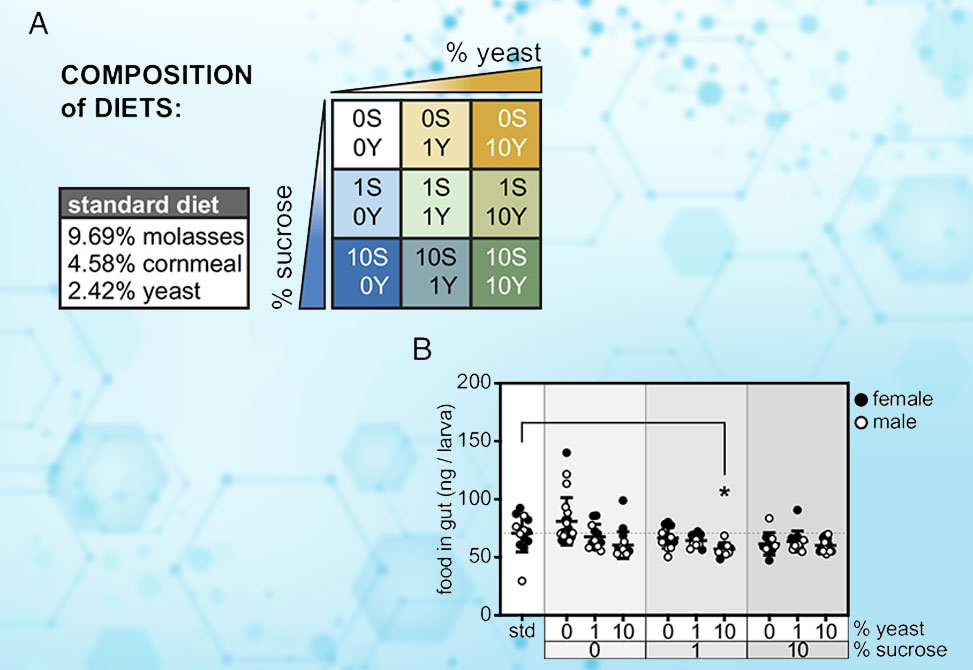
Reflecting recent work in the Bland lab
Insulin-like peptides orchestrate how animals apportion nutrients between storage and growth, yet distinct ligands may encode different cues even when signaling through a single receptor. In this study, researchers in Michelle Bland's Group at the University of Virginia, published in PNAS...
Sequence Hydrophobicity
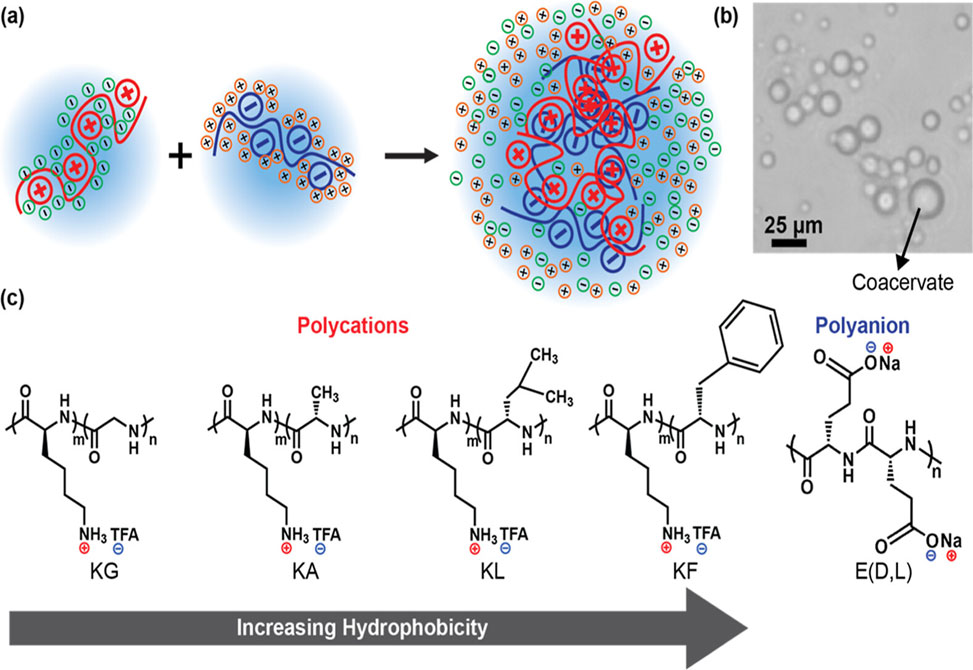
Reflecting recent work in the Perry lab
In this study, published in Biomacromolecules, researchers in Sarah Perry's group at the University of Massachusetts - Amherst, employ sequence-defined polypeptides as minimal models of IDP-like LLPS, using complex coacervation...
Aquaporin Bridge
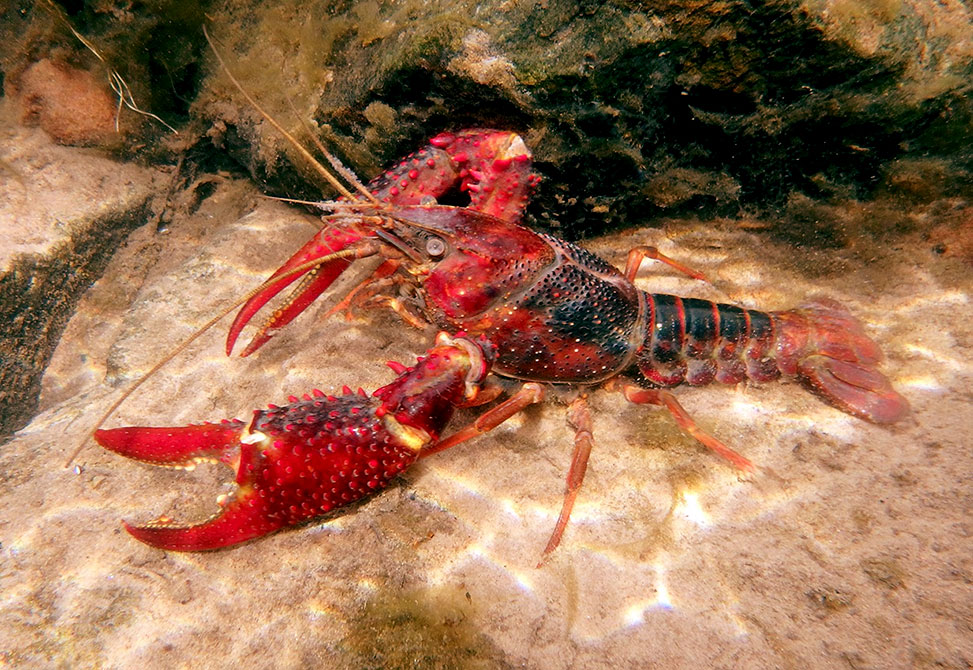
Reflecting recent work in the Wang lab
Researchers from the Wang Group at the School of Life Sciences, Shandong University, China, report in PNAS a mechanistic bridge between two pillars of arthropod antibacterial defense. Their study shows...
Alkyne Grasp
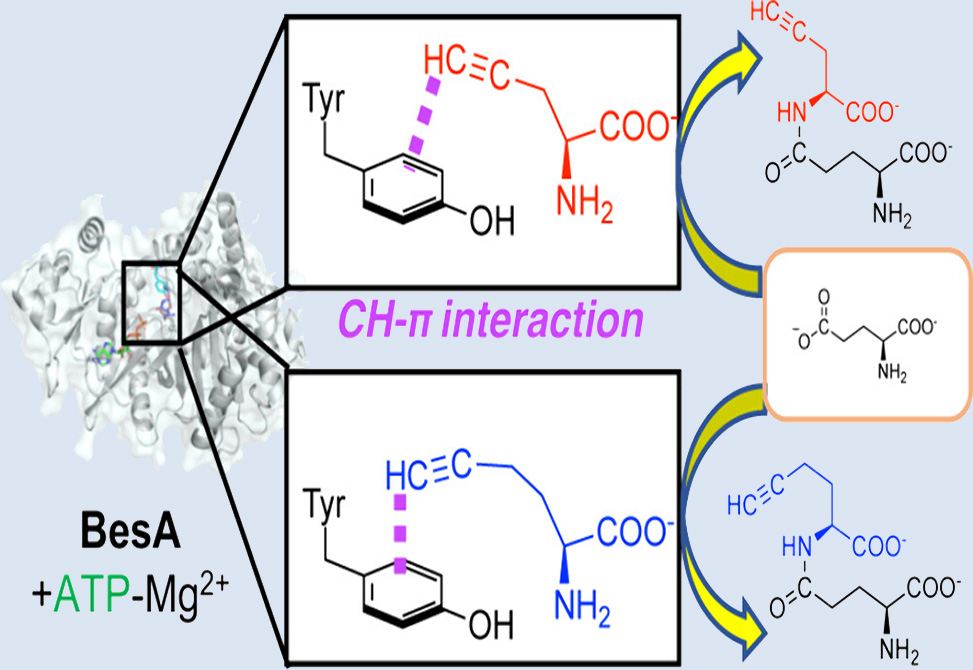
Reflecting recent work in the Fujishiro lab
ATP-grasp ligases offer a powerful route to diversify peptide structures, and BesA stands out for its ability to incorporate terminal alkyne groups into dipeptides with high specificity. By dissecting BesA’s catalytic mechanism and engineering substrate tolerance...
Glycan–Metal Synergy

Reflecting recent work in the Koksch lab
Hydrogels, highly hydrated polymer networks, underpin both natural barriers such as mucus and numerous biomedical applications. Mucins, the glycoprotein constituents of mucus, achieve their viscoelasticity through peptide backbones enriched in proline, threonine...
Phosphine Rebridging

Reflecting recent work in the Hackenberger lab
Published in Angewandte Chemie International Editition, researchers from the Hackenberger Lab at the Humboldt-Universität in Berlin, present a powerful new class of phosphine oxide–based reagents for chemoselective protein modification...
Helical Hydrazides

Reflecting recent work in the Gellman lab
Seeking to understand the relative kinetic benefits of reactive unit connection and preorganization, researchers from the Gellman Lab at the University of Wisconsin–Madison investigated α/β-peptide foldamers containing a preorganized hydrazide diad...
Serine Switch
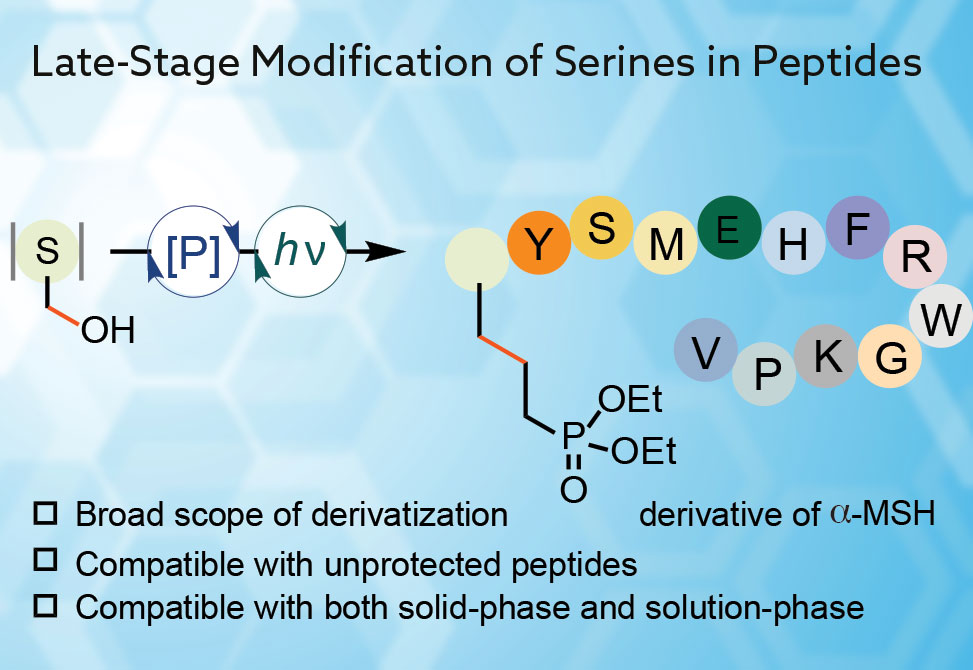
Reflecting recent work in the Diao lab
Published in the Journal of the American Chemical Society, work by first author Zhenyan Guo in the Diao Lab at the New York University, delivers a chemoselective solution to a long-standing gap: late-stage modification of native serine via carbon–carbon...
Mitochondrial Click

Reflecting recent work in the Wennemers lab
In work published in ACS Chemical Biology, Adeline Schmitt, under the guidance of Helma Wennemers at ETH Zürich, investigated rigid polyproline II, PPII, helical scaffolds containing guanidinium-proline, Gup, residues patterned with hydrophobic groups to tune amphipathicity and uptake...
Copper Clicks

Reflecting recent work in the Metanis lab
In a collaborative work between the Metanis and Shimon labs at the Hebrew University of Jerusalem, and the Wang group at the Xiamen University in China, published in the Journal of the American Chemical Society, a copper-mediated approach is introduced...
Photoregulated Catalysis
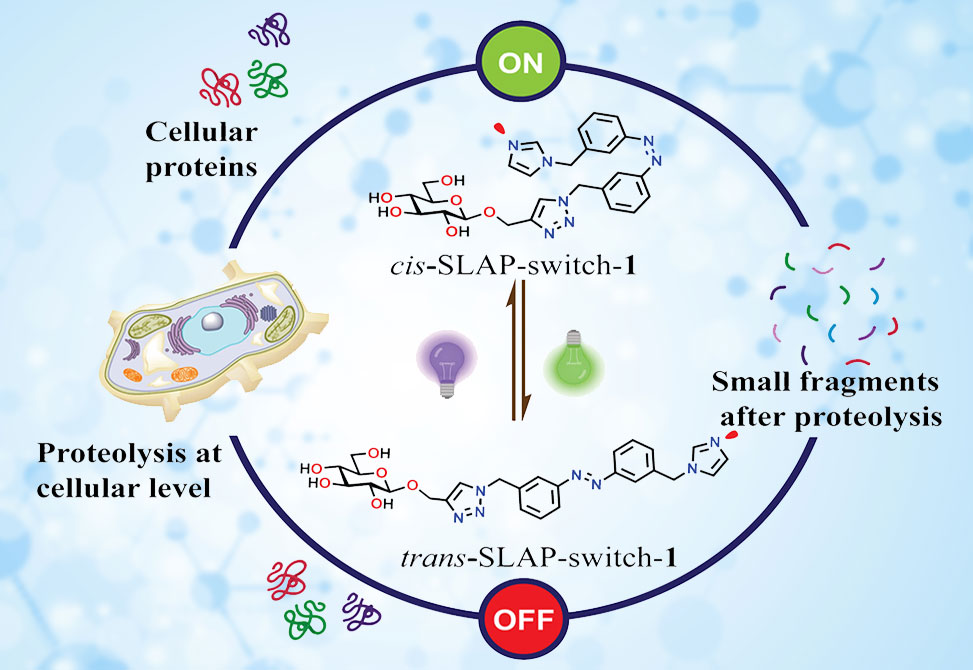
Reflecting recent work in the Bandyopadhyay lab
Precise external regulation of enzymatic activity remains a central goal in chemical biology, with wide-ranging implications for biotechnology, diagnostics, and medicine. Natural proteases govern countless biological processes, yet their lack of...
Lanthipeptide Modeling
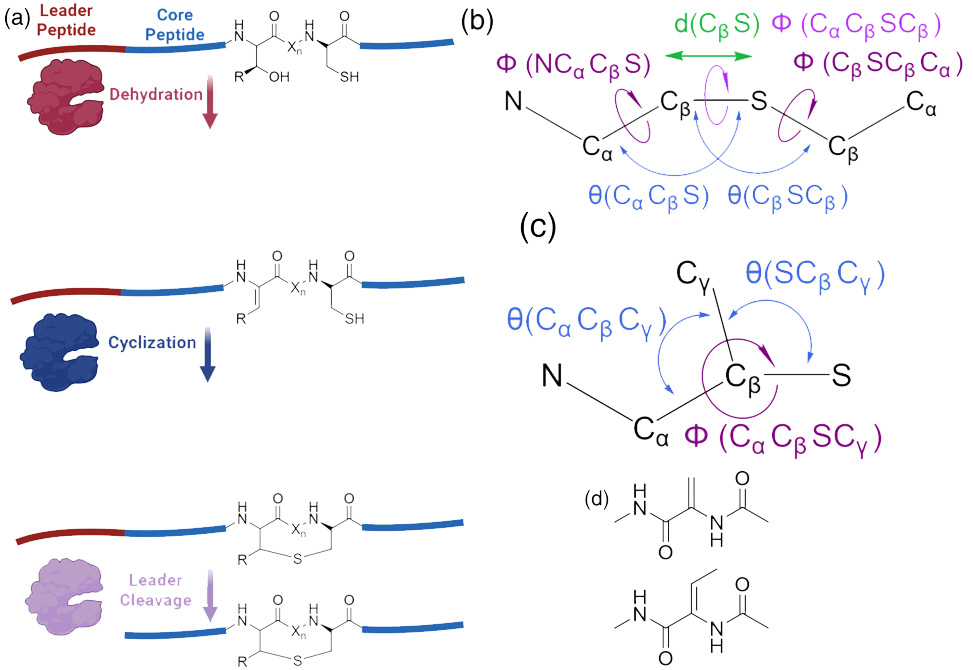
Reflecting recent work in the Walker lab
Lanthipeptides, the thioether-crosslinked members of the RiPP family, are compelling antibiotic scaffolds. Yet, they have remained largely outside the reach of structure-based design. Standard modeling tools, for example, Rosetta...
Covalent Peptide Libraries

Reflecting recent work in the Bode lab
Covalent inhibitors provide potent and durable target engagement, with approved drugs such as ibrutinib and osimertinib validating the approach. These compounds exploit electrophilic warheads to irreversibly or reversibly engage nucleophilic residues, most often...
Spike Peptide Amyloids
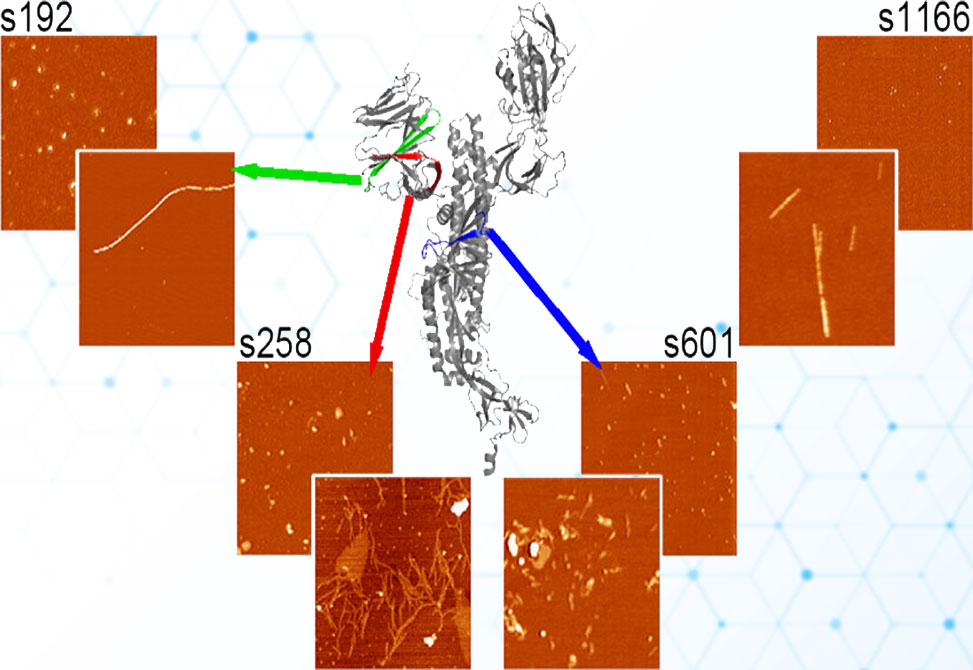
Reflecting recent work in the Legleiter lab
SARS-CoV-2 spike protein fragments are known to form amyloid fibrils, but far less is understood about the prefibrillar states that emerge along the way, or how those intermediates interact with lipid membranes in ways that could drive toxicity. In a study published in Biochemistry, researchers in the Legleiter lab...
Engineered Lasso Peptides
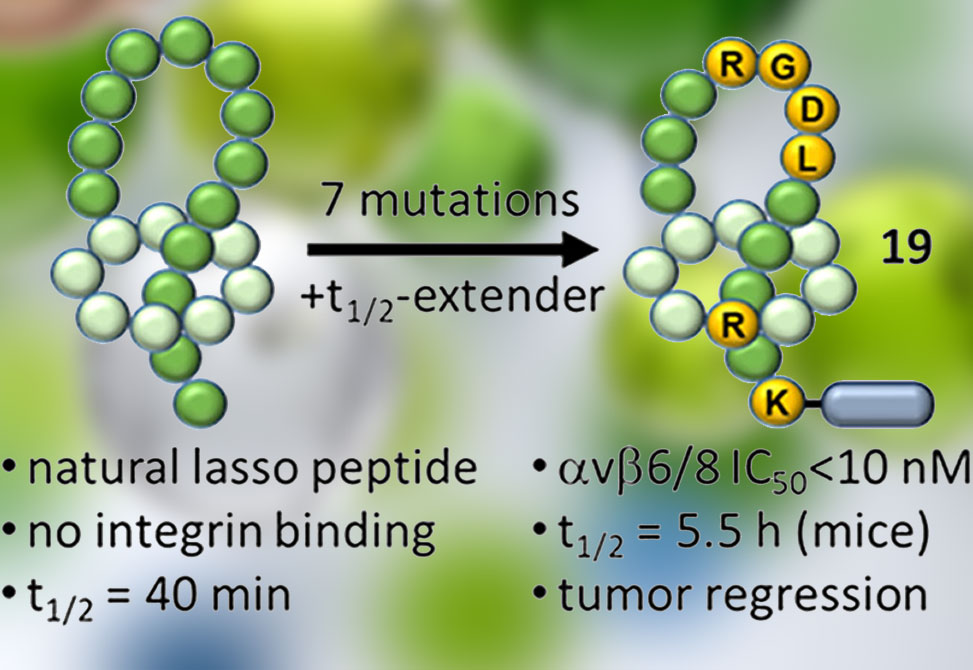
Reflecting recent work in the Burk lab
A major barrier to durable responses with PD-1/PD-L1 checkpoint inhibitors is the activation of immunosuppressive TGF-β within the tumor microenvironment. This immunosuppression is driven in large part by the RGD-binding integrins αvβ6 and αvβ8, which are upregulated across many solid tumors. Direct systemic blockade of TGF-β has proven toxic...
Peptide Aggregation Blockers

Reflecting recent work in the Wright lab
The misfolding and aggregation of transthyretin, TTR, a serum protein responsible for transporting thyroxine and retinol binding protein, underlies a class of amyloid diseases that include TTR cardiomyopathy and polyneuropathy. In these disorders, the native tetrameric structure of TTR becomes destabilized...
HDAC-Mediated Lactylation
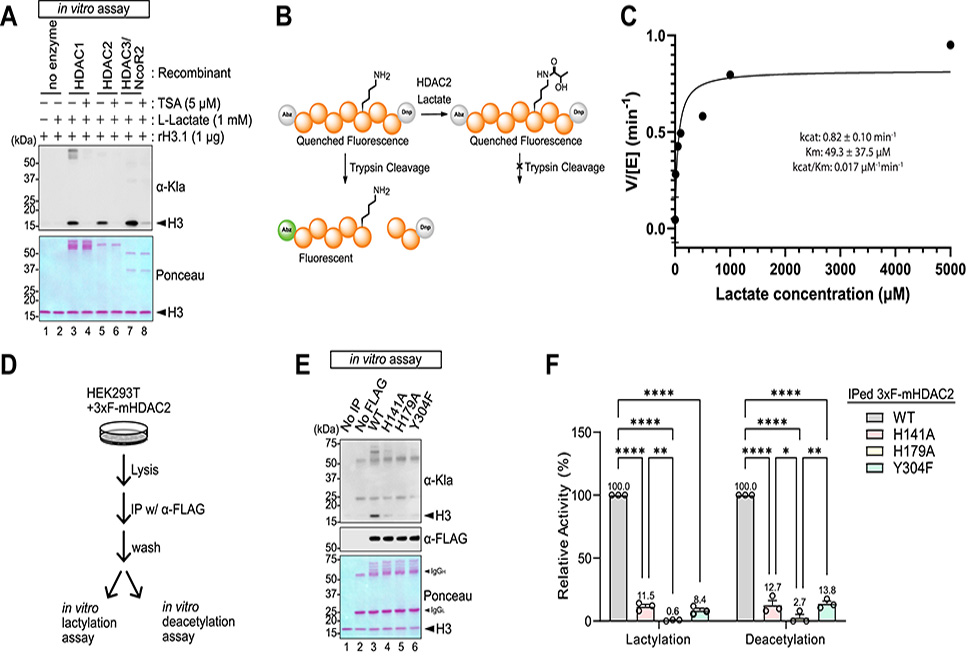
Reflecting recent work in the Goldberg lab
Lysine lactylation, Kla, has emerged as a post-translational modification, PTM, directly linking glycolytic metabolism to protein regulation. While earlier models invoked lactyl-CoA–dependent transfer or non-enzymatic reactions via lactoylglutathione, the enzymatic basis of Kla remained uncertain...
Targeted Conjugates
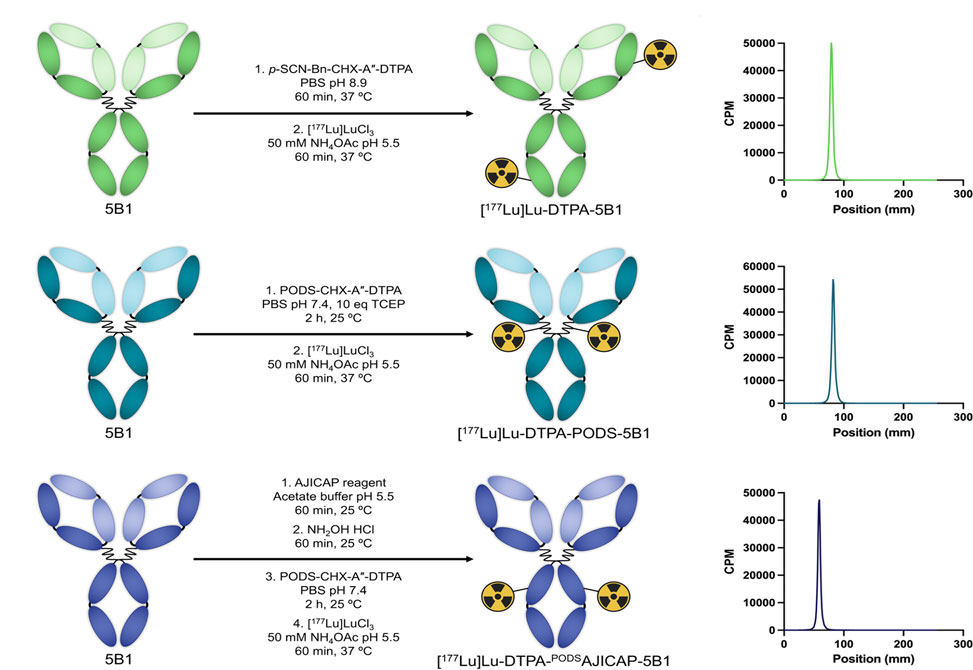
Reflecting recent work in the Zeglis lab
For two decades, immunoconjugates have been a mainstay of targeted oncology, from antibody–drug conjugates to radioimmunotherapy probes. The clinical challenge has never been the underlying concept, but rather the chemistry of conjugation. Conventional strategies, stochastic coupling...
Ultrafast Peptide Cyclization
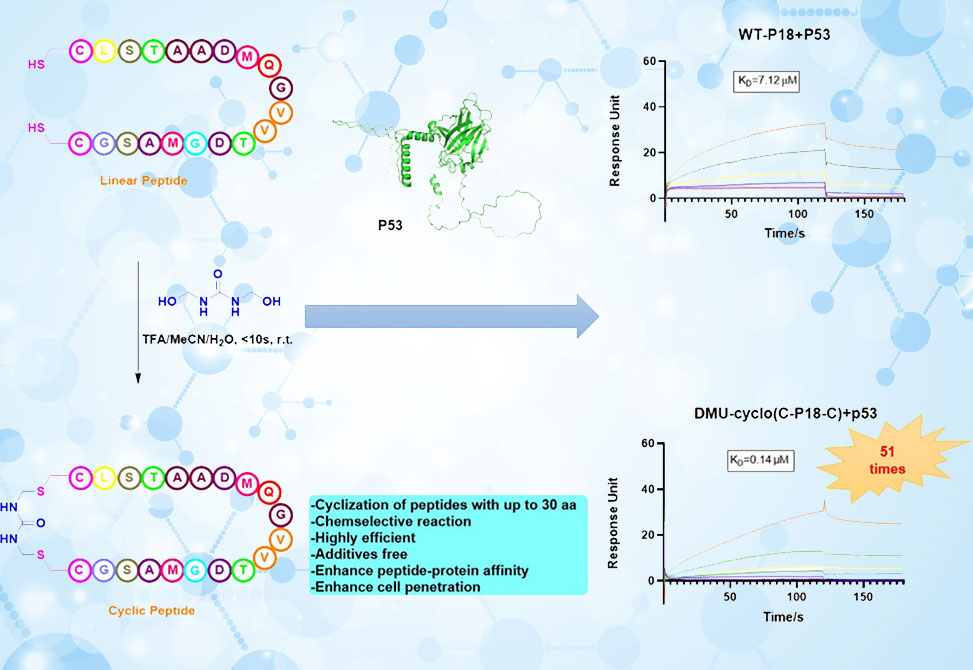
Reflecting recent work in the Sun lab
Cyclic peptides occupy a privileged niche in chemical biology. Their constrained conformations reduce entropic penalties upon binding, impart proteolytic stability, and frequently enable access to protein–protein interaction surfaces that are inaccessible to small molecules...
Coagulation Trigger

Reflecting recent work in the Ruvo lab
Hemostasis begins with a handshake. When vascular damage exposes tissue factor, TF, to the bloodstream, factor VII, FVII, latches on, instantly engaging the extrinsic pathway and accelerating thrombin generation. Because TF is sequestered...
Azapeptoid Collagen
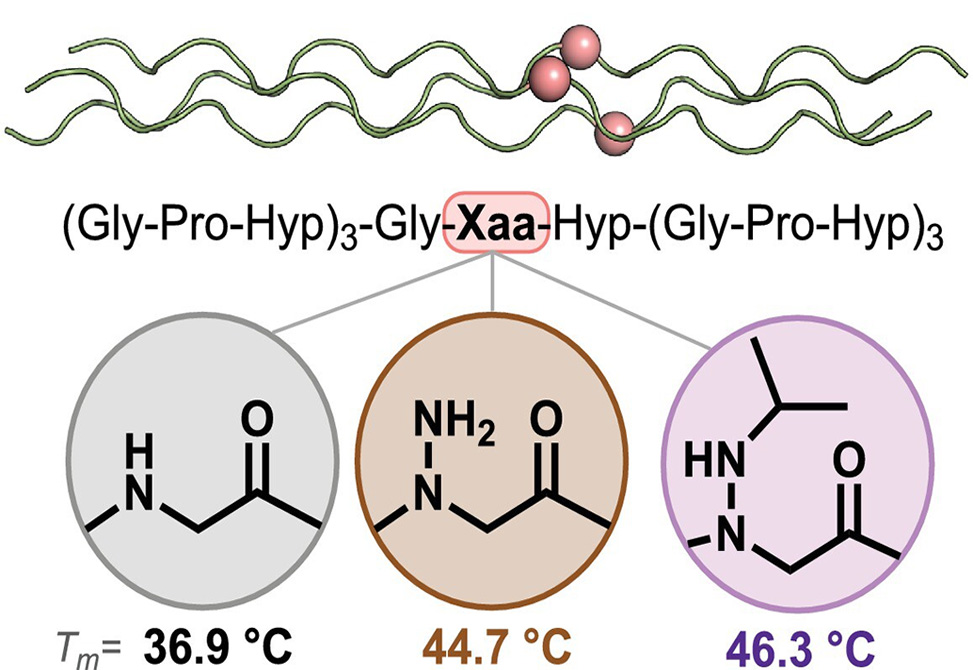
Reflecting recent work in the Del Valle lab
Collagen’s mechanical grace comes from a deceptively simple code: repeating Gly-Xaa-Yaa triplets that assemble into three left-handed PPII chains winding into a right-handed triple helix. Nature’s favorites at Xaa and Yaa—proline...
Cysteine Umpolung
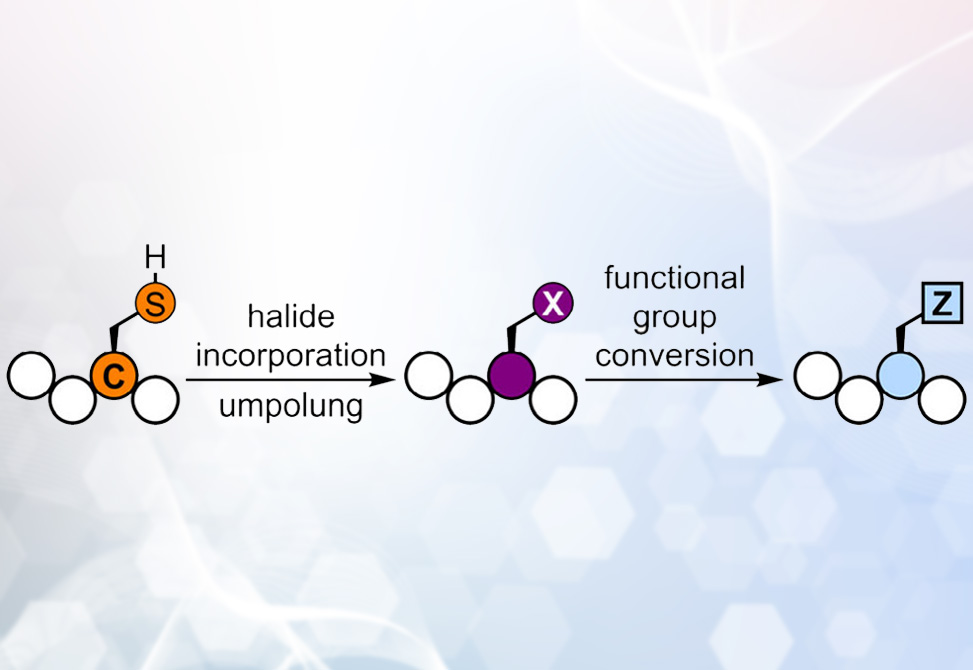
Reflecting recent work in the Wang lab
A longstanding challenge in peptide chemistry has been the restricted reactivity of canonical amino acids, which limits late-stage functionalization strategies. Most side chains are inherently nucleophilic, and thus nearly all peptide modification...
Rewiring the Protein Backbone
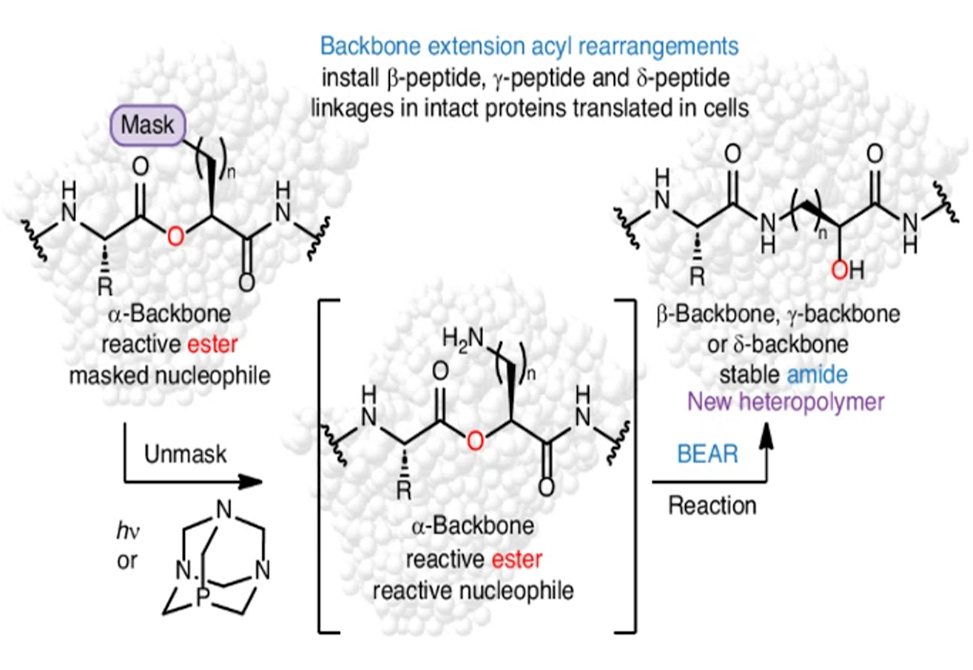
Reflecting recent work in the Schepartz lab
Backbone editing offers a powerful way to expand protein function: by introducing β, γ, or δ linkages, researchers can strengthen folds against proteolysis, reshape ligand dynamics, and unlock new routes to modulate protein–protein interactions…
Barrier Crossing
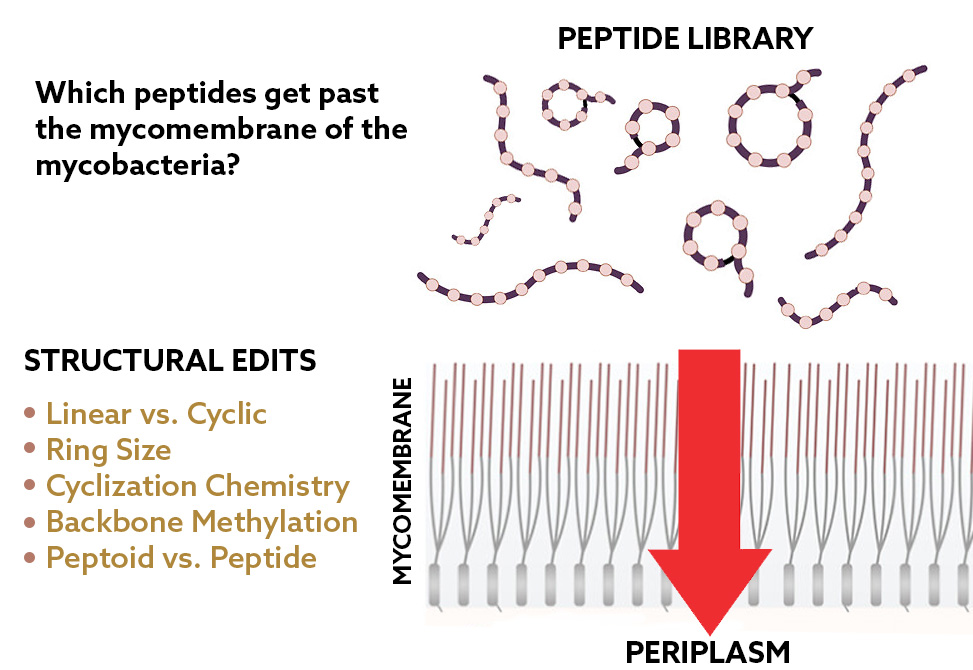
Reflecting recent work in the Pires lab
Tuberculosis, TB, remains one of the most pressing global health threats, with more than ten million cases reported in 2022. Once thought to be in gradual decline, TB incidence has reversed course, fueled by the rise of multidrug-resistant, MDR, and extensively drug-resistant, XDR, strains. The causative...
Blocking Metastasis
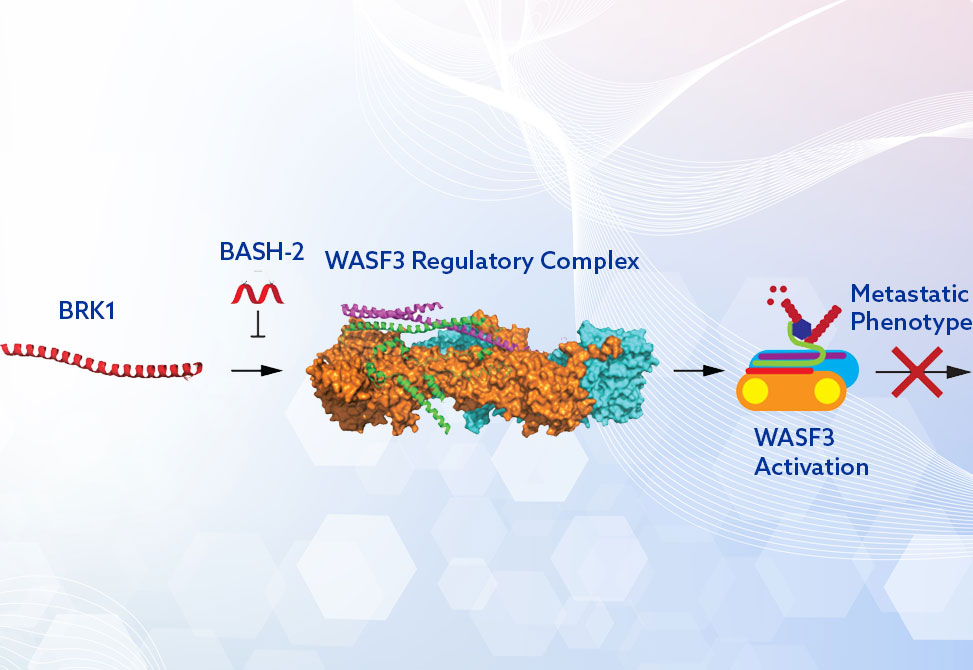
Reflecting recent work in the Kennedy lab
Metastasis remains the leading cause of cancer mortality, and one driver of this process is the actin cytoskeleton remodeling mediated by WASF3, a protein strongly upregulated in aggressive tumor types...
Degrading Light

Reflecting recent work in the Lou lab
Targeted protein degradation has rapidly matured into a transformative drug discovery approach, offering ways to dismantle proteins once deemed undruggable. While classical proteolysis-targeting chimeras, PROTACs, exploit the ubiquitin–proteasome system...
Stapled Sheets

Reflecting recent work in the Del Valle lab
The stabilization of β-sheet structures has long been a challenge in peptide design, despite their central role in mediating protein–protein interactions, PPIs. While side-chain stapling is well-established for constraining α-helical, polyproline II, and loop conformations...
Allosteric Turns
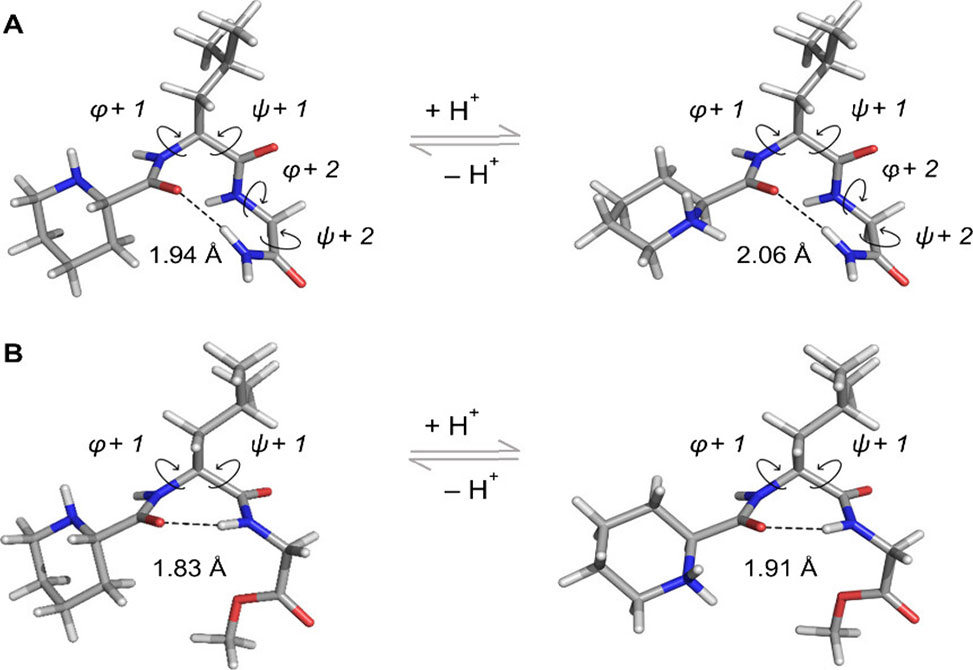
Reflecting recent work in the Sampaio-Dias lab
Disorders of the central nervous system linked to dysregulation of dopamine D2 receptors — including depression, drug addiction, Parkinson’s disease, and movement disorders — remain challenging to treat with selectivity...
Peptide Galanin Binding

Reflecting recent work in the Patnaik lab
In a landmark study, published in ACS Chemical Biology, researchers from the Samarjit Patnaik group at the National Institutes of Health, report the development of a live-cell NanoBRET, Bioluminescence Resonance Energy Transfer, assay...
Protein Phosphorylation
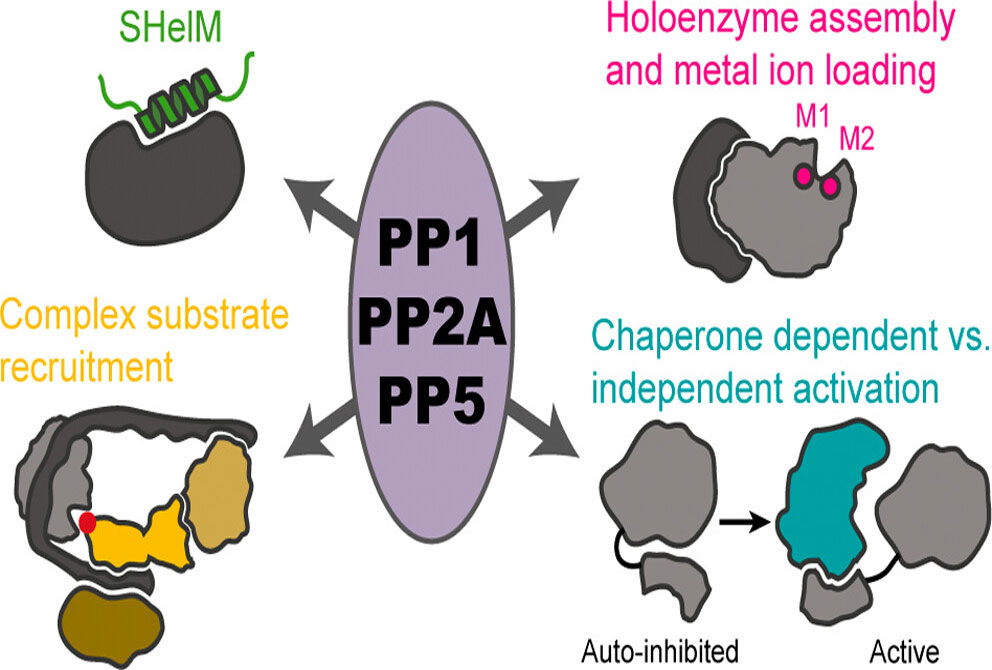
Reflecting recent work in the Köhn lab
Professor Maja Köhn took the stage at the 29th American Peptide Symposium in San Diego, her presentation, "Targeting Phosphatases with Peptides and Phosphomimetics," offered a captivating look into one of the most challenging frontiers in molecular medicine...
Conformational Equilibrium
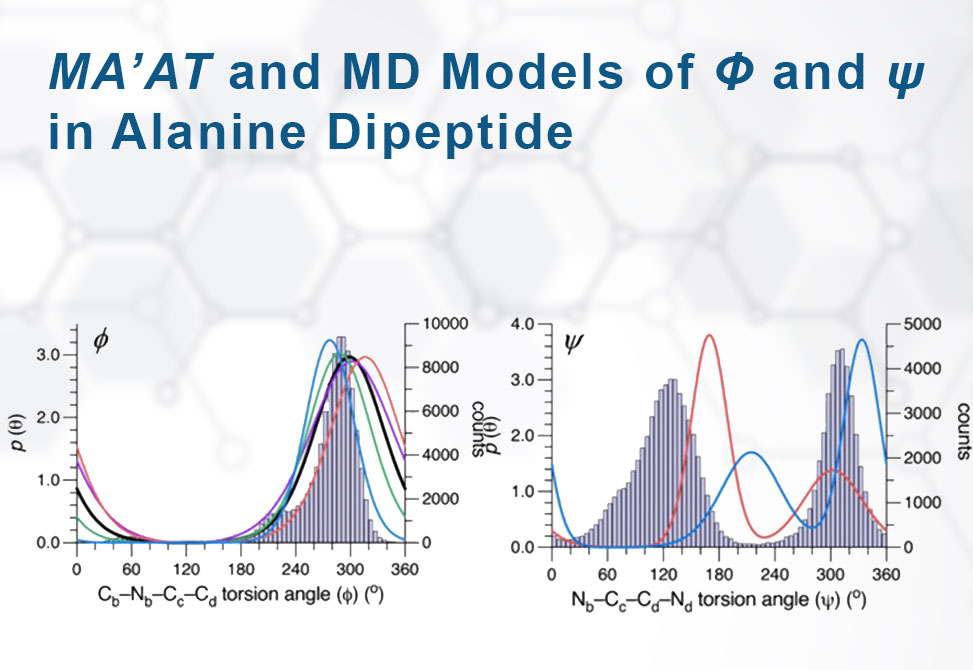
Reflecting recent work in the Serianni lab
The conformational behavior of alanine dipeptide, Ac-L-Ala-NHMe, 1, has long made it a model compound in molecular simulation studies. However, despite numerous investigations using molecular dynamics, MD, and quantum mechanical, QM, calculations, a rigorous...
Peptide Anti Obesity 2.0
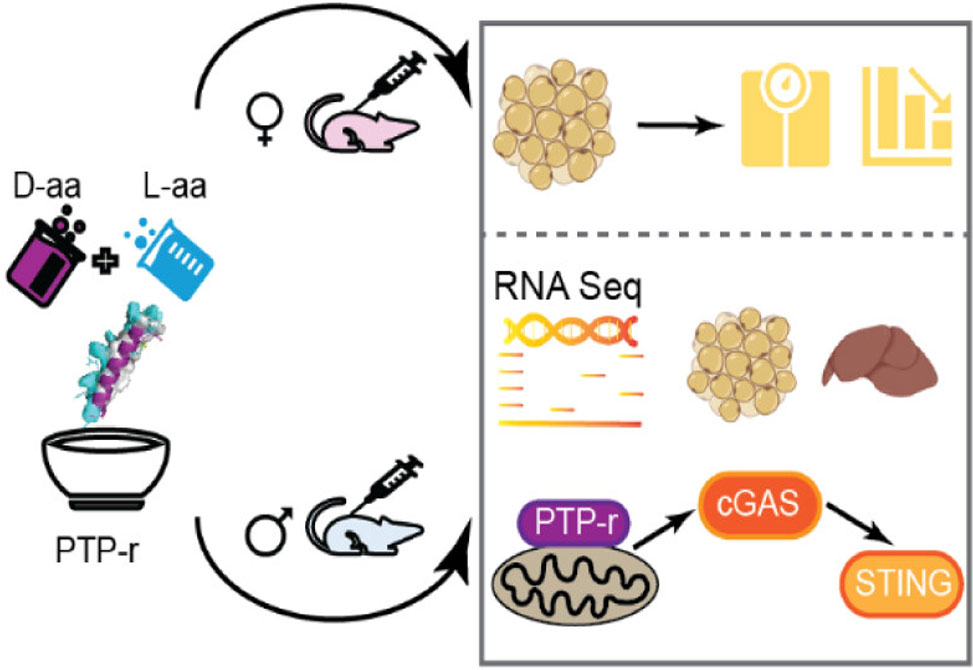
Reflecting recent work in the David lab
Obesity is a leading contributor to global disease burden and a primary risk factor for type 2 diabetes, yet current treatments often lack specificity and long-term efficacy. In a groundbreaking collaborative study, published...
Delivery of Peptide-LYTAC

Reflecting recent work in the Luan lab
While immune checkpoint blockade, ICB, therapies have transformed cancer immunotherapy, tumors such as melanoma frequently exploit the CD47-SIRPα axis to evade macrophage-mediated clearance. Antibody-based CD47 blockade, though...
Shaping Peptide Assemblies

Reflecting recent work in the Jiang lab
Peptides capable of folding into defined secondary structures serve as promising modular building blocks for supramolecular materials. However, conventional approaches to peptide-based self-assembly are often constrained by environmental...
Intracellular Targeting

Reflecting recent work in the Futaki lab
The delivery of biomacromolecules directly into the cytosol remains a central challenge in therapeutic peptide science. Coacervate-based systems offer a promising platform, yet many are hampered by instability in physiological conditions and diminished performance...
Rational Design
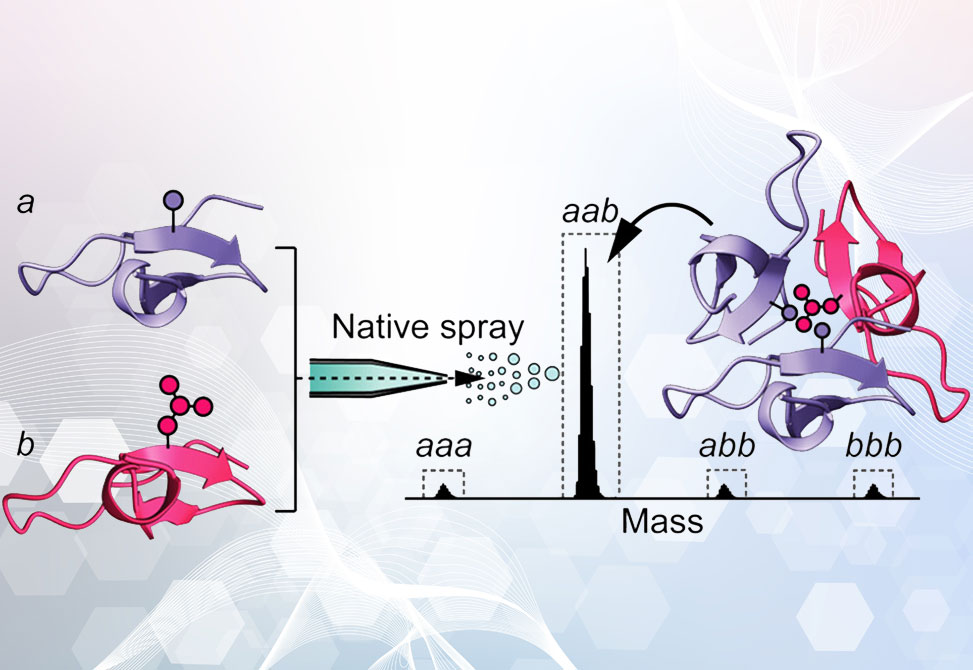
Reflecting recent work in the Gellman lab
The rational construction of stable hetero-oligomeric protein complexes with defined subunit composition is a central challenge in molecular design. In this study, published in the Journal of the American Chemical Society, researchers in the Gellman Lab...
Macrocyclic Peptide Antibiotics

Reflecting recent work in the van der Donk lab
Ribosomally synthesized and posttranslationally modified peptides, RiPPs, represent one of the most structurally diverse classes of natural products, yet many RiPP families remain biosynthetically uncharacterized...
Quorum Sensing Redux
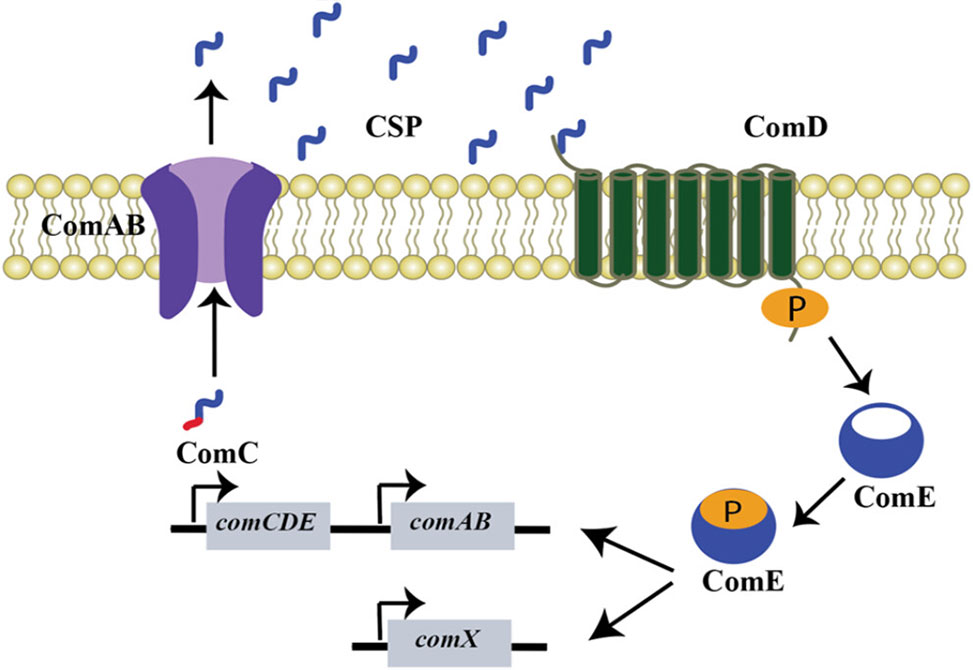
Reflecting recent work in the Tal-Gan lab
Streptococcus constellatus, a member of the Streptococcus anginosus group, SAG, is an opportunistic pathogen commonly found in the human oral and gastrointestinal microbiota. While often commensal, it has increasingly been implicated in severe purulent infections, particularly in immunocompromised individuals. Despite its emerging clinical relevance...
Oxidative Peptide Coupling

Reflecting recent work in the Proulx lab
This study demonstrates that a key determinant of this reactivity is the choice of solvent. By shifting from aqueous buffer to a mixed organic solvent system, MeOH/DCE, the authors observed a pronounced shift in the oxidation pathway, favoring productive...
Potent Antifungal Lipopeptide

Reflecting recent work in the Süssmuth lab
In this study, researchers from the Süssmuth group at the Technische Universität Berlin, published in the Journal of the American Chemical Society, elucidated the structure of AFC-BC11 as an N-acyl tetrapeptide with a distinctive architecture. The molecule is...
Efficient siRNA Delivery
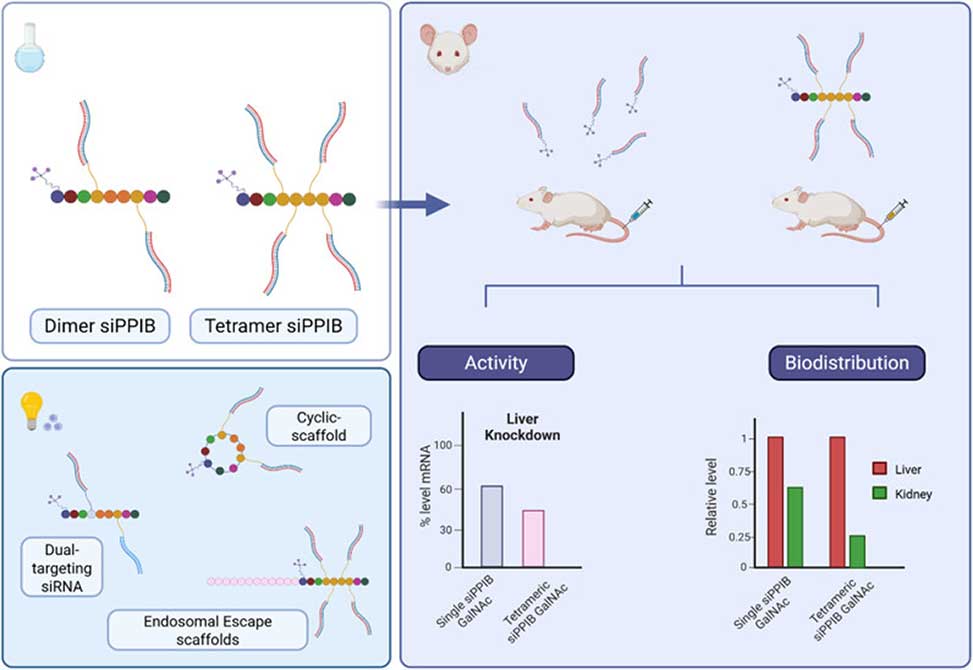
Reflecting recent work in the Anders lab
In this collaborative study, published in Bioconjugate Chemistry by researchers from the Dahlén group at Astra-Zeneca, Gothenburg, Sweden, and the Andaloussi team at the Karolinska Institutet, Stockholm, Sweden, the authors present...
Grafted Coiled Coils

Reflecting recent work in the Andrew J. lab
Protein–protein interactions, PPIs, are fundamental to cellular regulation, yet targeting them therapeutically remains challenging due to their extensive, shallow interfaces. Peptides offer an attractive solution, providing structural fidelity...
Conjugation Chemistry
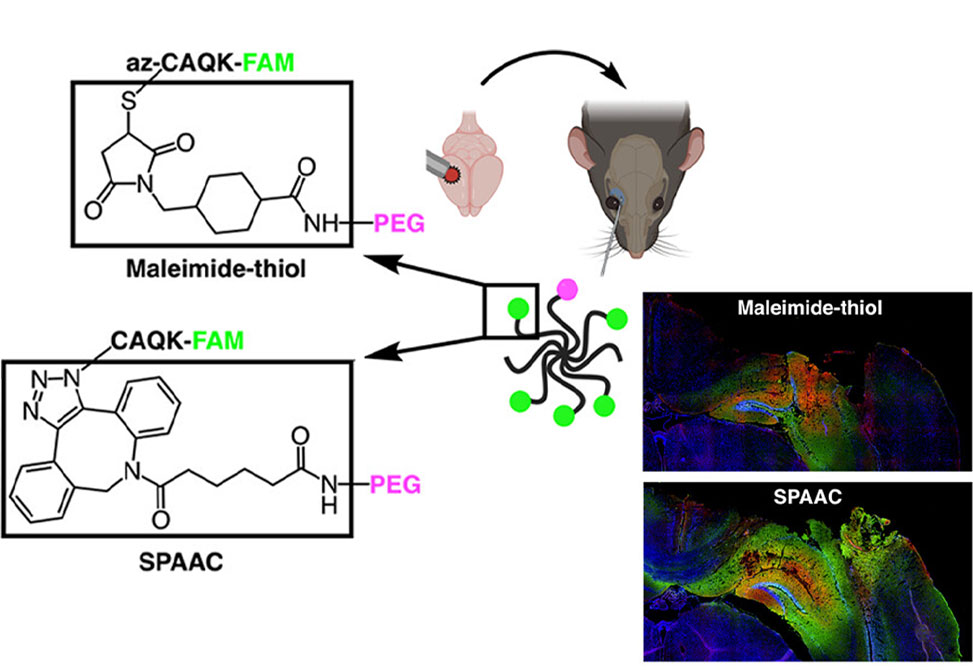
Reflecting recent work in the Kwon lab
Traumatic brain injury, TBI, remains a profound and unresolved clinical challenge, responsible for long-term disability in both civilian and military populations. The lack of effective pharmacological interventions...
Quorum Sensing
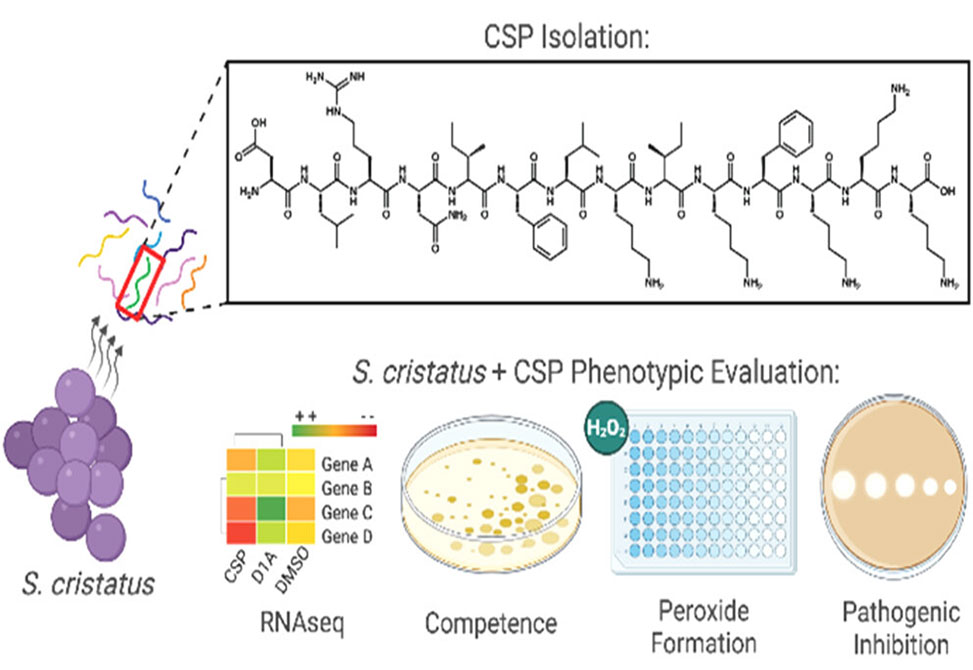
Reflecting recent work in the Tal-Gan lab
Streptococcus cristatus, a commensal member of the oral microbiota and recently reclassified from Streptococcus oligofermentans, has emerged as a promising candidate in the pursuit of biotherapeutics targeting oral pathogens. A comprehensive...
Molecular Scaffolds
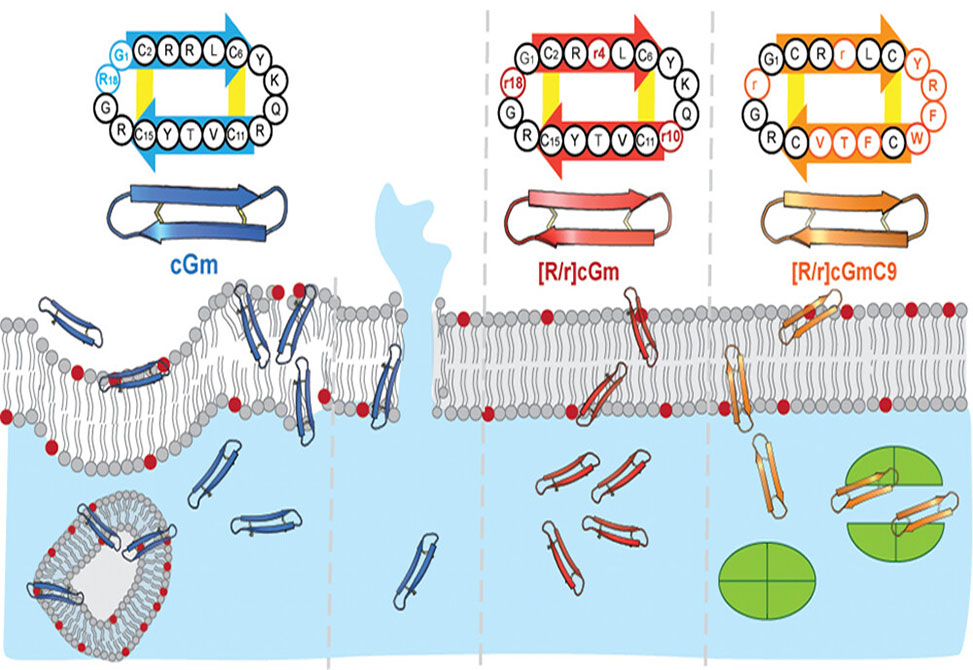
Reflecting recent work in the Craik lab
This comprehensive review from the labs of David Craik and Lara Malins at Australian Research Council Centre of Excellence for Innovations in Peptide and Protein Science, at the University of Queensland, published in Biochemistry, highlights the powerful...
From Hydrogel to Crystal
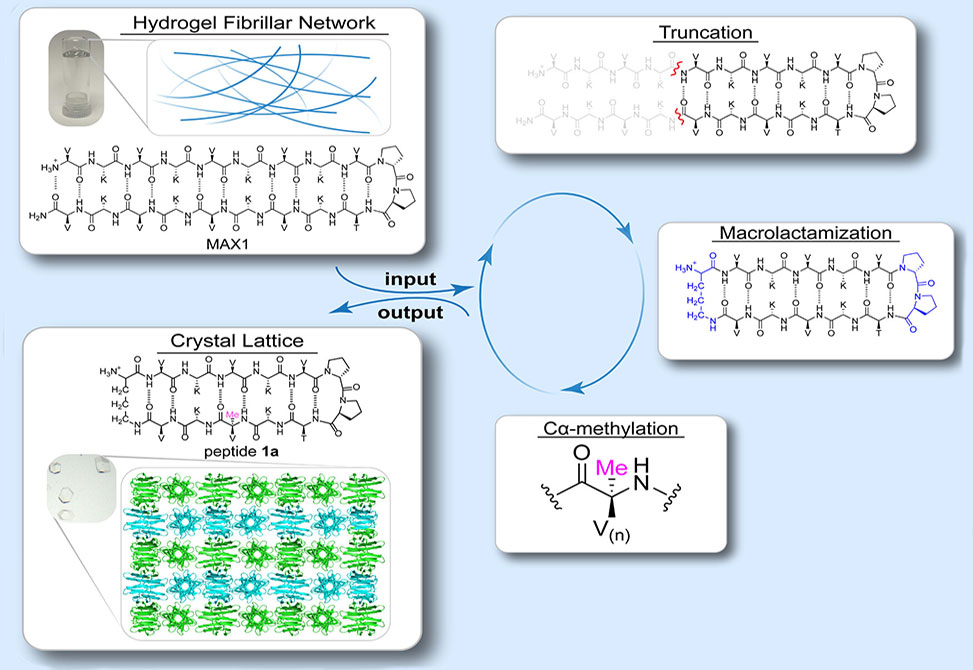
Reflecting recent work in the Schneider lab
Published in the Journal of the American Chemical Society, researchers in the lab of Dr. Joel P. Schneider at NIH, have unveiled a groundbreaking molecular design strategy that shifts gel-forming peptides into the crystalline state...
Capturing the Uncatchable
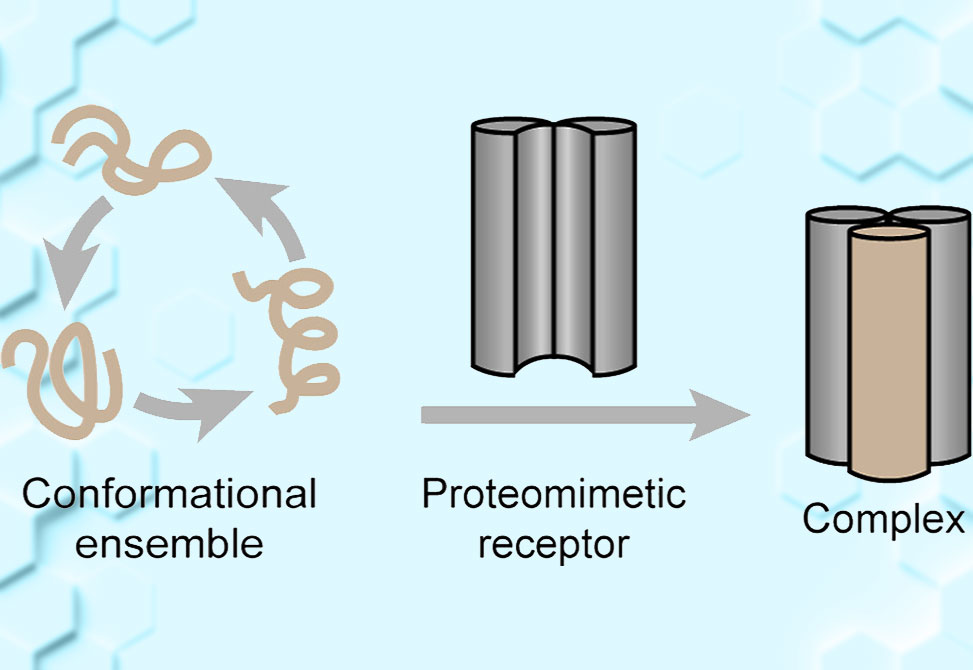
Reflecting recent work in the Arora lab
In a major step forward, researchers in the Arora Group at the New York University, have now developed a rationally designed proteomimetic receptor capable of selectively trapping MYC in its biologically active conformation...
Ubiquitin Azapeptide Esters
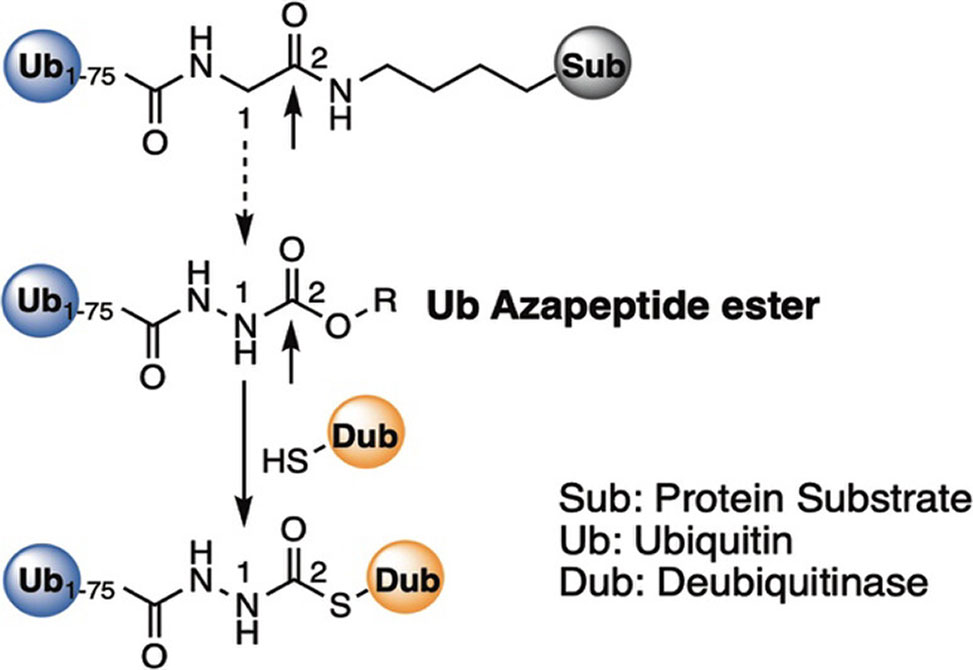
Reflecting recent work in the Liu lab
Published as an ASAP article in the Journal of the American Chemical Society, researchers from the Wenshe Liu Lab at Texas A&M, currenly our "Lab of the Month," present the development...
Versatile Precursors
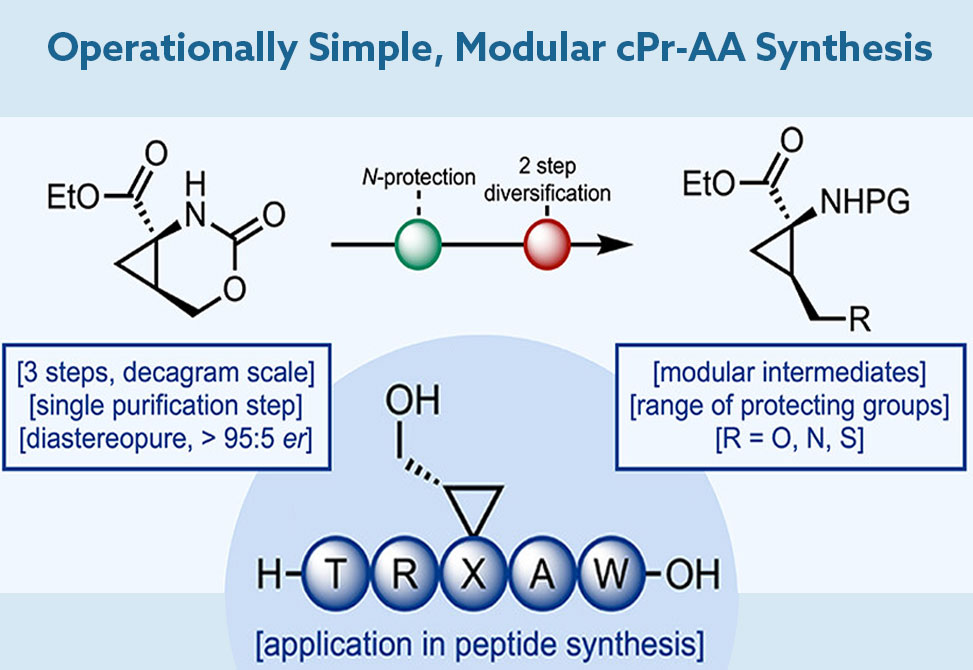
Reflecting recent work in the Mitchell lab
Cyclopropane-containing amino acids, prized for their conformational rigidity and stability, are of increasing interest in therapeutic peptide development and antimicrobial drug discovery. A recent study from Nicholas Mitchell’s group at the University of Nottingham...
Sequence Architecture

Reflecting recent work in the Woolfson lab
The Woolfson Lab continues to break new ground in de novo protein design with the successful creation of mixed-charge A3B3 heterohexameric α-helical barrels, αHBs, assembled from distinct acidic, A, and basic, B, peptide chains. Drawing on...
Dynamic Ion Channels
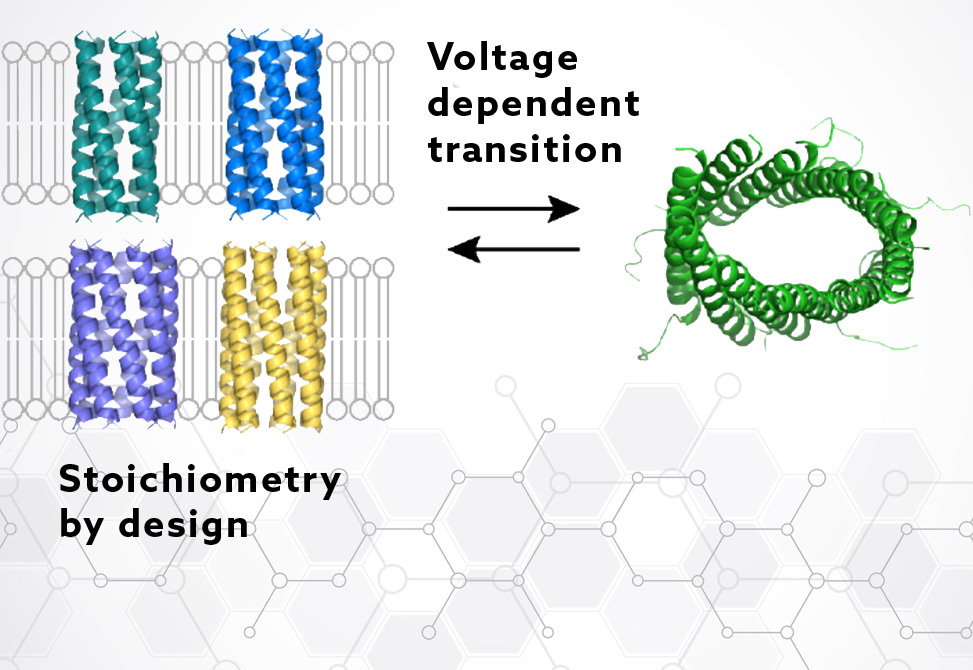
Reflecting recent work in the Niitsu lab
Membrane-spanning peptides that form ion-conductive channels remain a challenging frontier in de novo protein design. While strides have been made in creating water-soluble peptide assemblies, translating that precision to transmembrane systems...
Antimicrobial Peptide

Reflecting recent work in the D'Amelio lab
As antibiotic resistance surges worldwide, the search for effective new therapeutics has led scientists to a surprising source: the venom of Bungarus fasciatus, the banded krait. From this venom, researchers have isolated Cathelicidin-BF...
Enlicitide Decanoate
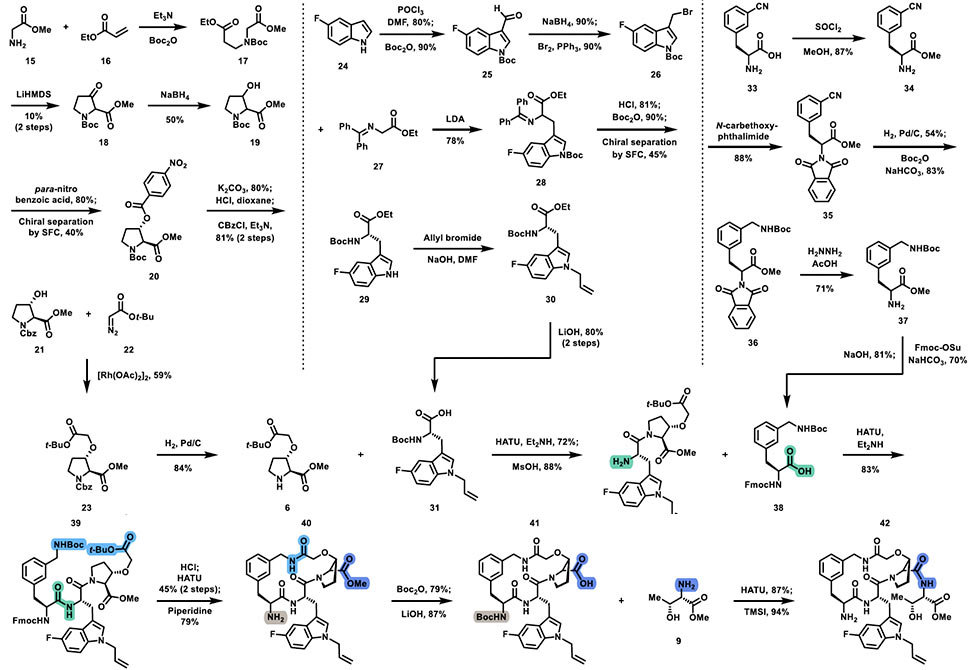
Reflecting recent work in the Thaisrivongs lab
The total synthesis and process development of enlicitide decanoate, MK-0616, an orally bioavailable inhibitor of proprotein convertase subtilisin/kexin type 9, PCSK9, represents a major breakthrough in macrocyclic peptide...
Electrophilic Warheads
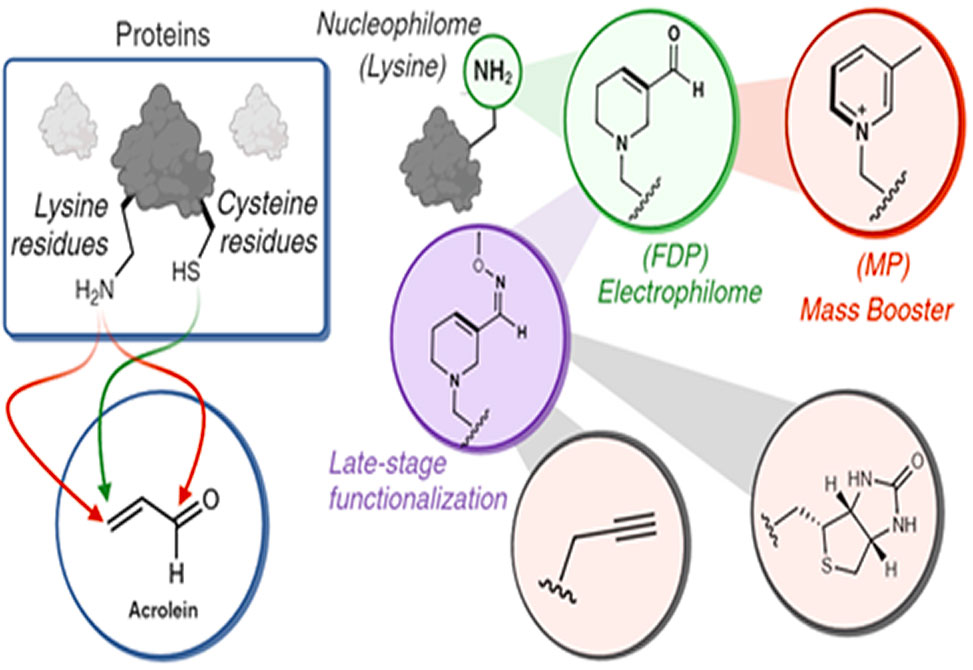
Reflecting recent work in the lab
Understanding how proteins interact with biological metabolites is crucial for deciphering biological processes and advancing therapeutic strategies. This study focuses on a specific class of metabolites—α,β-unsaturated carbonyls, particularly acrolein-derived...
Peptide Modifications
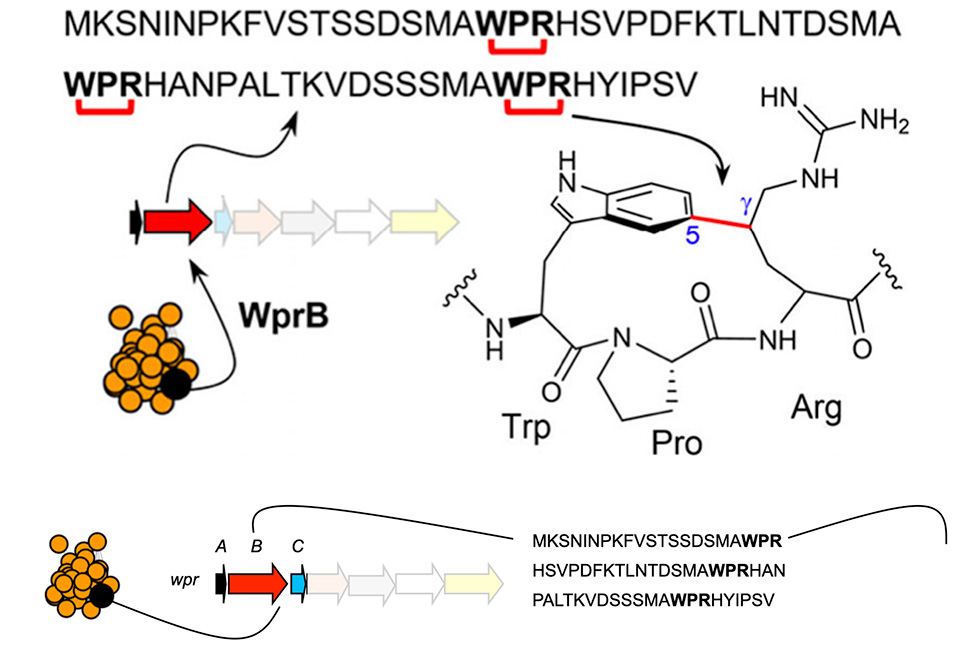
Reflecting recent work in the Phan lab
Ribosomally synthesized and post-translationally modified peptides, RiPPs, represent an expanding class of natural products distinguished by their extensive post-translational modifications. Among the enzymatic systems...
Synthesis Tag
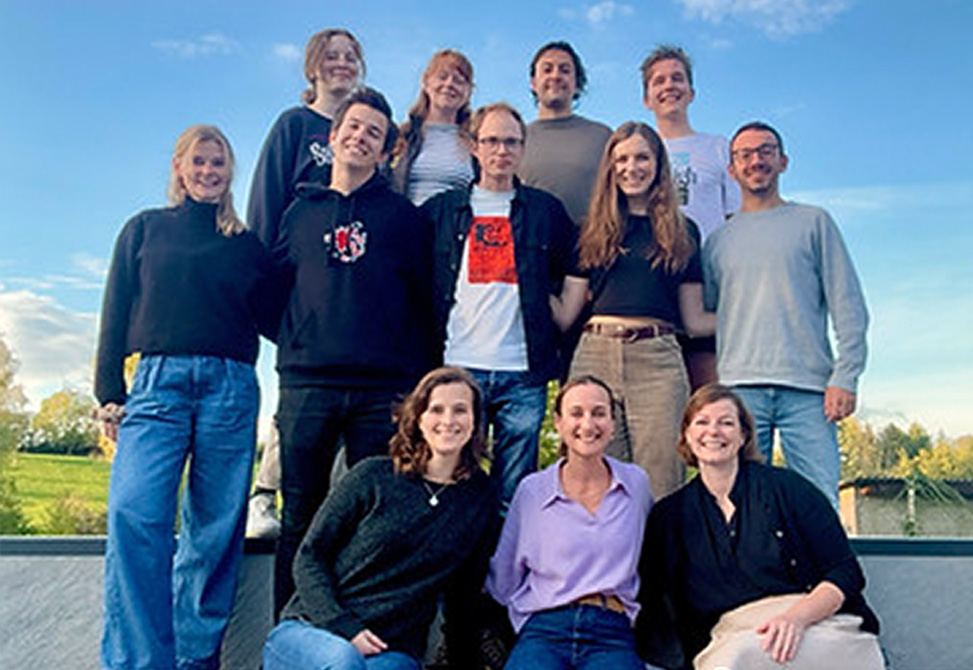
Reflecting recent work in the Hartrampf lab
Solid-phase peptide synthesis, SPPS, and native chemical ligation, NCL, are powerful methods for obtaining peptides and proteins that are otherwise inaccessible...
Backbone Editing

Reflecting recent work in the Schepartz lab
The ability to precisely manipulate the peptide backbone remains one of the fundamental challenges in biomolecular engineering. While ribosomal translation and peptide synthesis methods allow for modifications...
Super-Res Microscopy

Reflecting recent work in the Guha lab
Researchers in the Samit Guha Group at Jadavpur University, Kolkata, India, published in Bioconjugate Chemistry, report a groundbreaking approach to cancer imaging...
Yeast CICLOPPS

Reflecting recent work in the Knudsen lab
Researchers in the Knudsen Group at the University of Aarhus, Denmark, published in Biochemistry, report the construction of a Saccharomyces cerevisiae-specific SICLOPPS library of 80 million members...
Metallo-Azapeptides

Reflecting recent work in the Proulx lab
Published in the Journal of the American Chemical Society, researchers in the Proulx group at the North Carolina State University at Raleigh, present the first approach to controlled metal chelation of peptide backbones...
Genetical Encoding

Reflecting recent work in the Schultz lab
Nicotinamide-containing cofactors play an essential role in many enzymes that catalyze two-electron redox reactions. However, it is difficult to engineer nicotinamide binding sites into proteins due to the extended nature...
Biomolecular Condensates
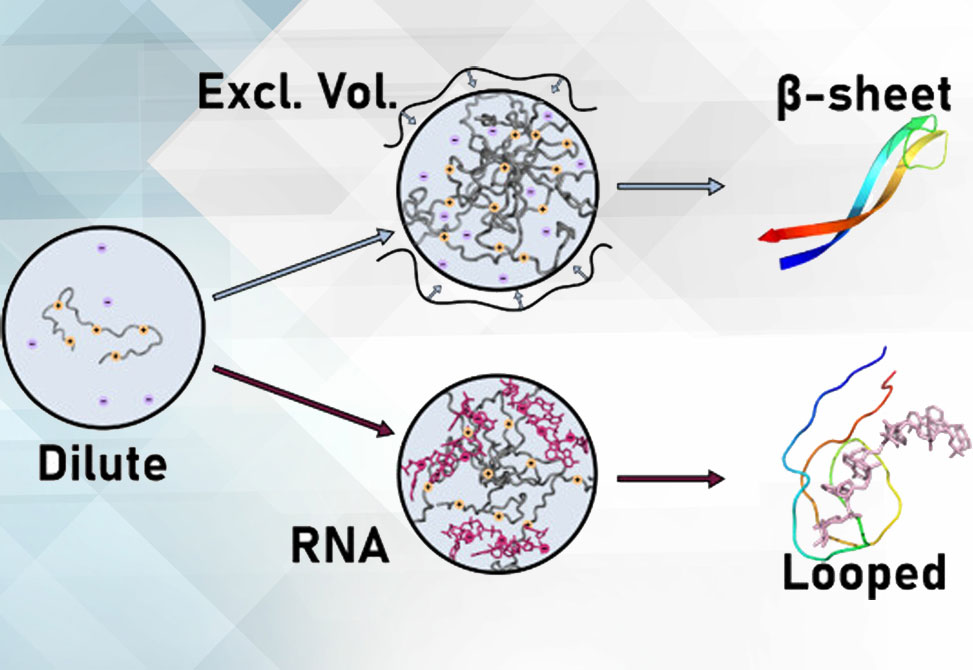
Reflecting recent work in the Baiz lab
Biomolecular condensates provide a mechanism for compartmentalization of biomolecules in eukaryotic cells. These liquid-like condensates are formed via liquid–liquid phase separation
Mammalian Esterase Activity

Reflecting recent work in the Raines lab
As a traceless, bioreversible modification, the esterification of carboxyl groups in peptides and proteins has the potential to increase their clinical utility. An impediment is the lack of strategies to quantify...
Anorexia and Weight Loss

Reflecting recent work in the Mapp lab
The melanocortin-3 receptor, MC3R, is a G-protein coupled receptor that regulates appetite and is a potential therapeutic target for anorexia and weight loss treatments...
Controlling Stereoselectivity
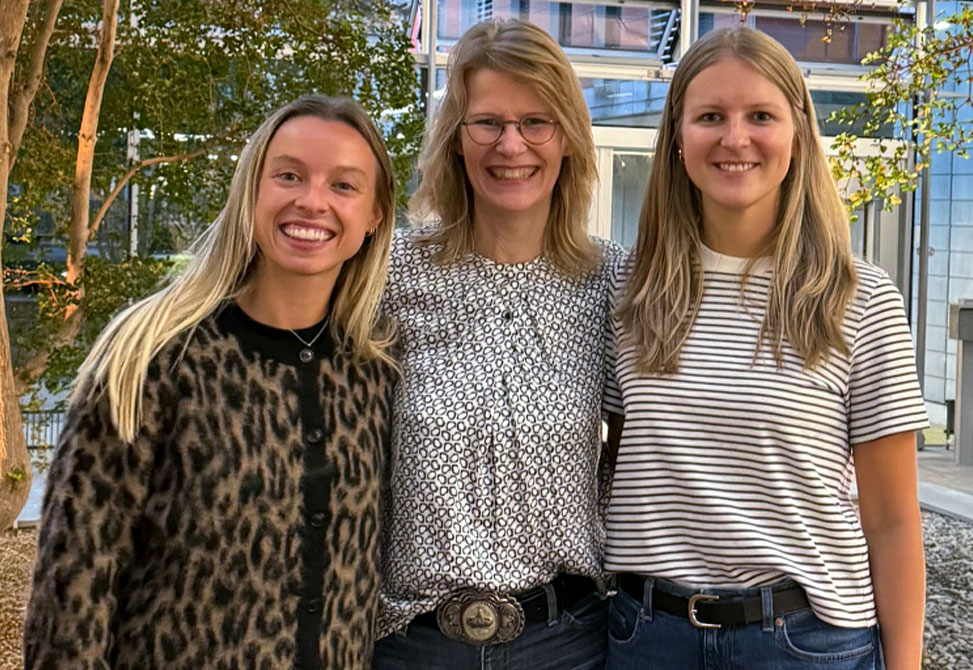
Reflecting recent work in the Wennemers lab
In a study from the Wennemers Lab at ETH, Zūrich, published in JACS, group members present an organocatalytic kinetic resolution to yield enantiomerically enriched β-branched aldehydes and γ-nitroaldehydes with three...
Highly Active & Stable Peptides
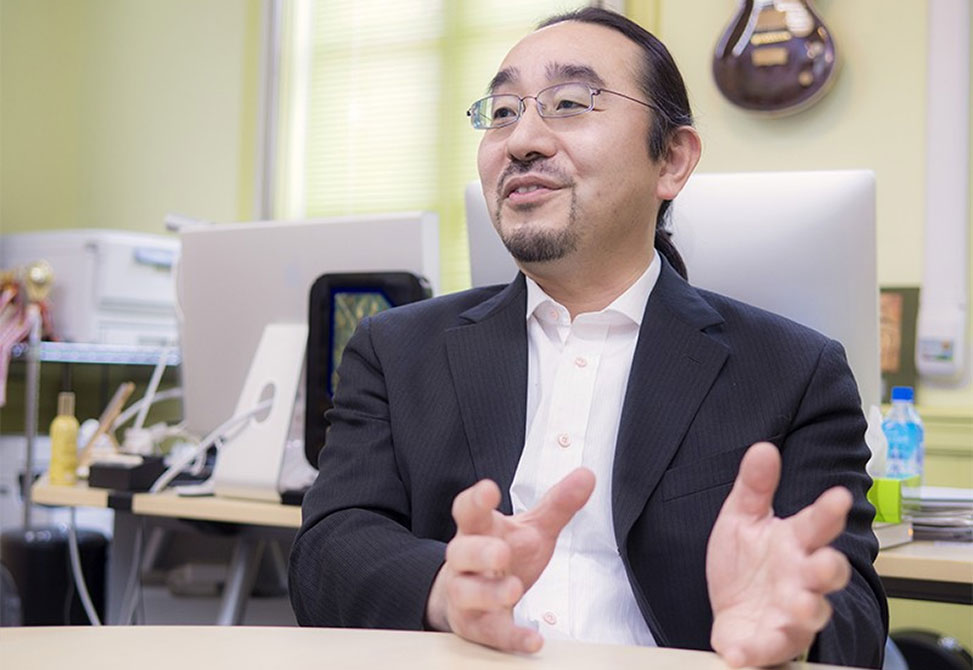
Reflecting recent work in the Suga lab
Nonproteinogenic amino acids, including D-α-, β-, and γ-amino acids, present in bioactive peptides play pivotal roles in their biochemical activities and proteolytic stabilities...
Antimicrobial Lipopeptides
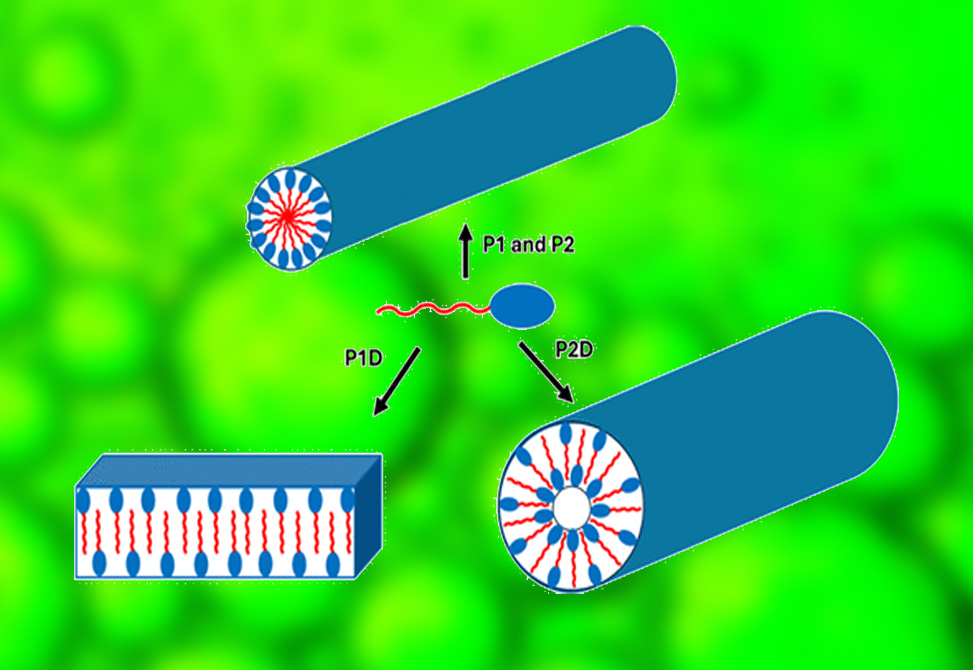
Reflecting recent work in the Hamley lab
Chirality plays a crucial role in the self-assembly of biomolecules in nature. Peptides show chirality-dependent conformation and self-assembly. Lipidation of peptides occurs in vivo...
"PickaPep" Application

Reflecting recent work in the Steuer lab
Published in Peptide Science, the Steuer Group at ETH, Zūrich, presents "PICKAPEP," an application developed for Mac and Windows, enabling the virtual construction...
Non Classical Crystallization

Reflecting recent work from BASF
In a recent study, published in Advanced Functional Materials, researchers in the Kellermeier Lab at BASF, have used phage display screening to identify peptide motifs...
Polarized Luminescence
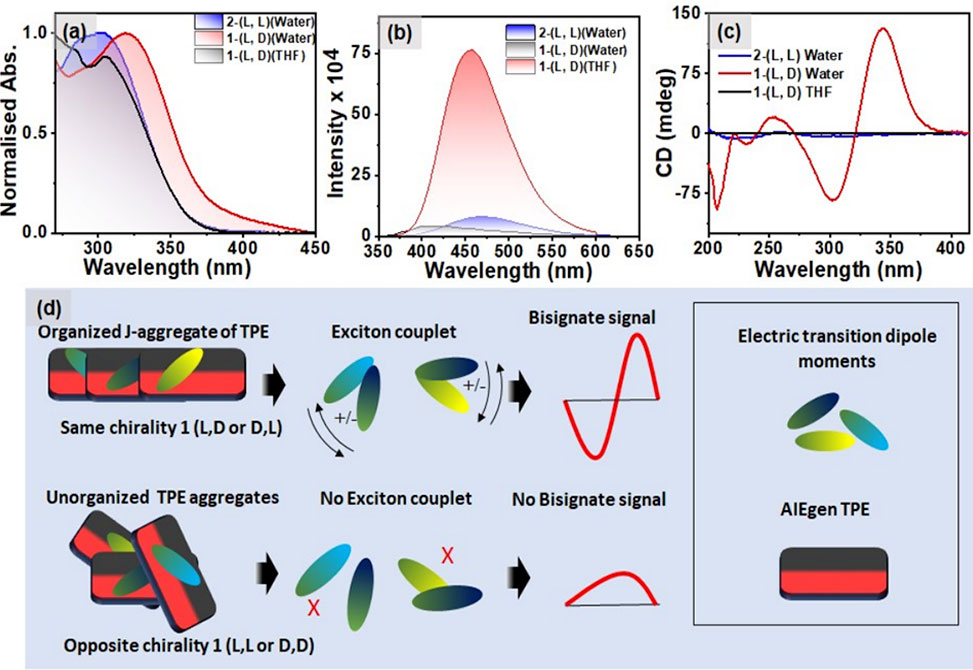
Reflecting recent work in the Bhattacharya lab
Circularly polarized luminescence, CPL, is gaining interest across various disciplines, including materials science, pharmaceuticals, and sensing technologies. Organic molecules...
Macroscopic Dipoles
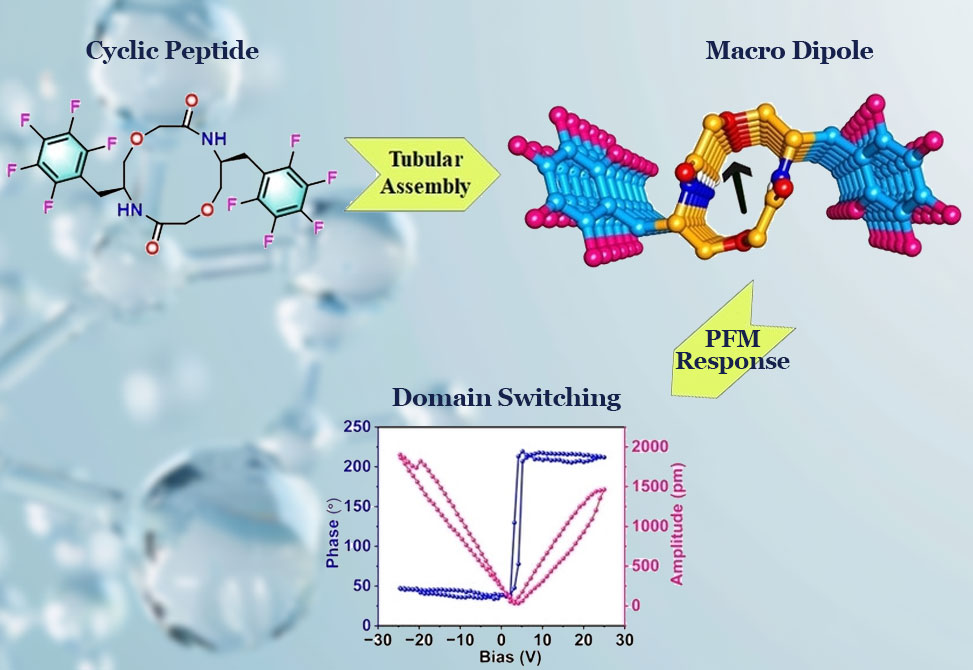
Reflecting recent work in the Gopi lab
Crystalline materials exhibiting non-centrosymmetry and possessing substantial surface dipole moments play a critical role in piezoelectricity. Designing biocompatible self-assembled materials...
Solid-Phase Synthesis

Reflecting recent work in the Kodadek lab
Many disease-causing proteins lack deep, readily ligandable pockets. Macrocyclic peptides and peptidomimetic compounds are one class of molecules that have shown promise in engaging these...
Lipopeptidomimetics Tool
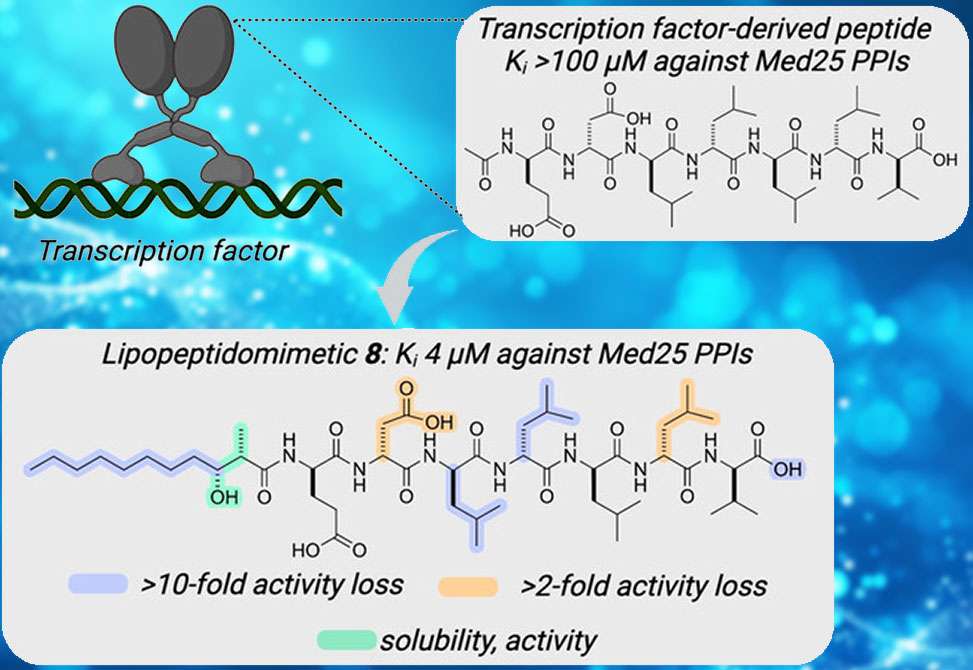
Reflecting recent work in the Mapp lab
A short, amphipathic peptide derived from transcriptional activators is transformed from a weak inhibitor of transcriptional protein–protein interactions (PPIs) to an effective inhibitor...
Antihapten Antibodies

Reflecting recent work in the Compton lab
Eliciting an antihapten antibody response to vaccination typically requires the use of constructs where multiple copies of the hapten are covalently attached to a larger carrier molecule...
Backbone N-Methylation

Reflecting recent work in the Wilson lab
A significant challenge in chemical biology is to understand and modulate protein–protein interactions, PPIs. Given that many PPIs involve a...
Macrocyclic Peptides
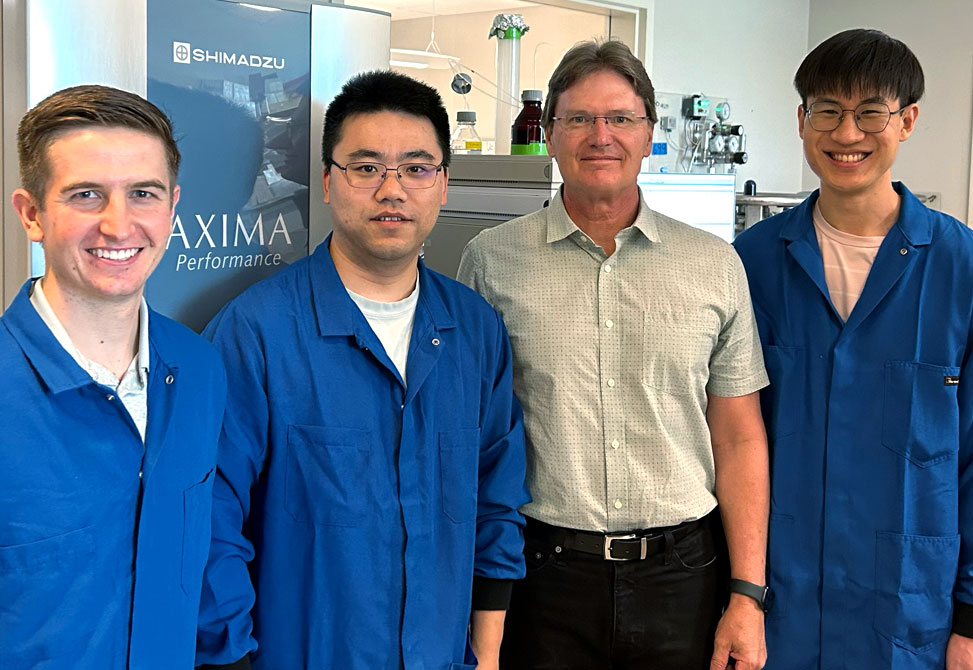
Reflecting recent work in the Kodadek lab
Macrocyclic peptides, MPs, are a class of compounds that have been shown to be particularly well suited for engaging difficult protein targets. However, their utility...
Site-Specific Probes
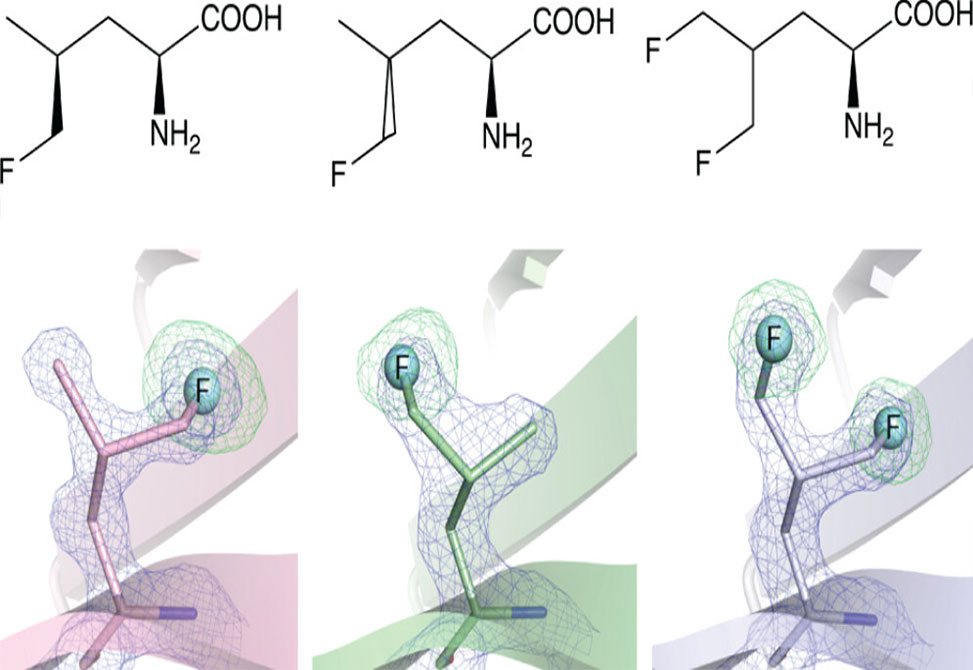
Reflecting recent work in the Jackson lab
Proteins produced with leucine analogues, where CH2F groups substitute specific methyl groups, can readily be probed by 19F NMR spectroscopy...
Triceptide Biocatalysts

Reflecting recent work in the Morinaka lab
Triceptides are a class of ribosomally synthesized and post-translationally modified peptides defined by an aromatic C(sp2) to Cβ(sp3) bond...
Antifungal Resistance
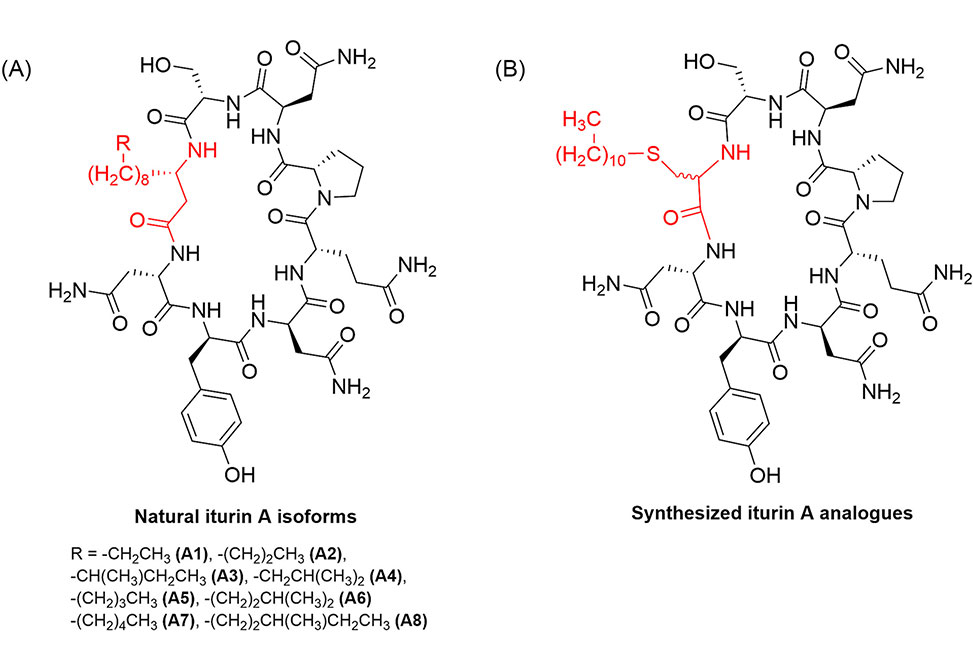
Reflecting recent work in the Rubini lab
The pursuit of novel antifungal agents is imperative to tackle the threat of antifungal resistance, which poses major risks to both human health and to food security...
Custom Click Biochemistry
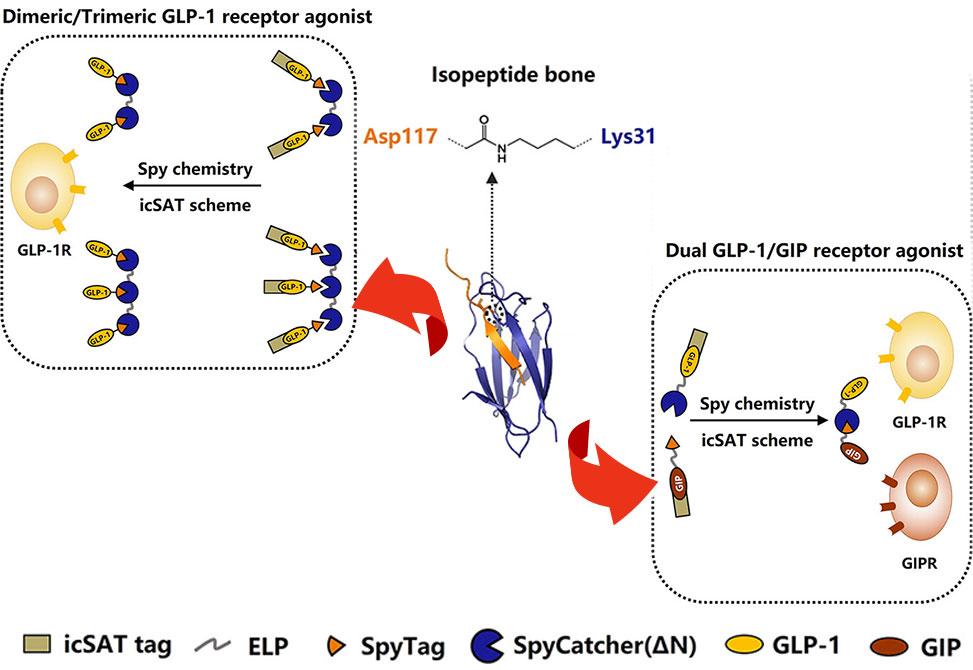
Reflecting recent work in the Yang lab
The development of oligomeric glucagon-like peptide-1, GLP-1, and GLP-1-containing coagonists holds promise for enhancing the therapeutic potential of the GLP-1-based drugs...
Graspetide Biosynthesis

Reflecting recent work in the Link lab
The ribosomally synthesized and post-translationally modified peptide, RiPP, superfamily of natural products includes many examples of cyclic peptides with diverse...
Peptide Imidazolones

Reflecting recent work in the VanVeller lab
Published in JACS, researchers in the VanVeller Group at Iowa State University, present a tandem amidine installation and cyclization with an...
Self-Assembled Nanofibers

Reflecting recent work in the Sabatino lab
Amphiphilic peptide sequences are conducive to secondary structures that self-assemble into higher-ordered peptide nanostructures. A select set...
Novel Substrate Prediction
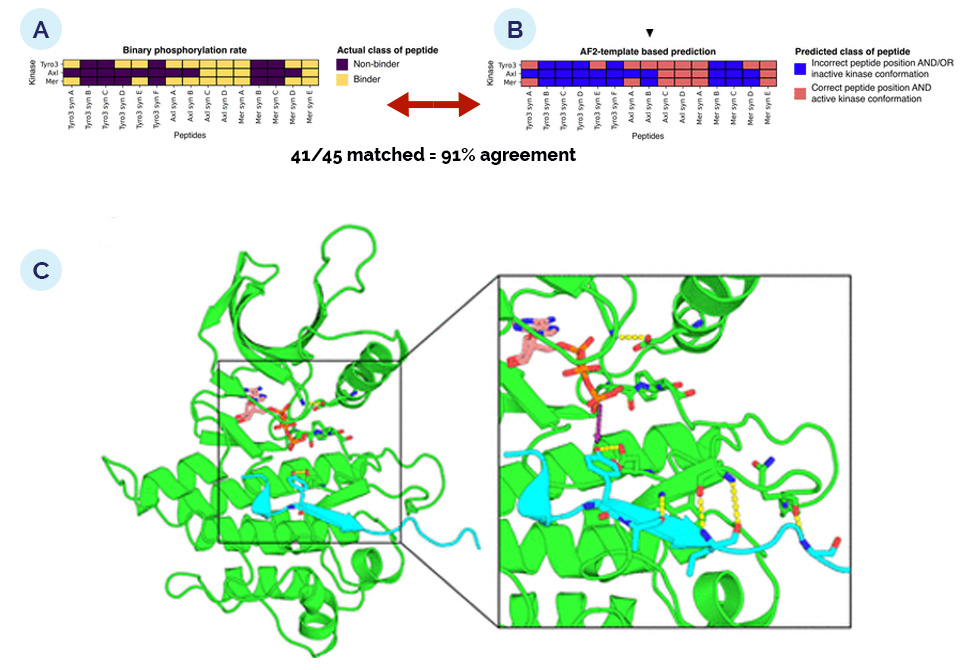
Reflecting recent work in the Parker lab
The TAM family of receptor tyrosine kinases is implicated in multiple distinct oncogenic signaling pathways. However, to date, there are no...
Azobenzene Moiety
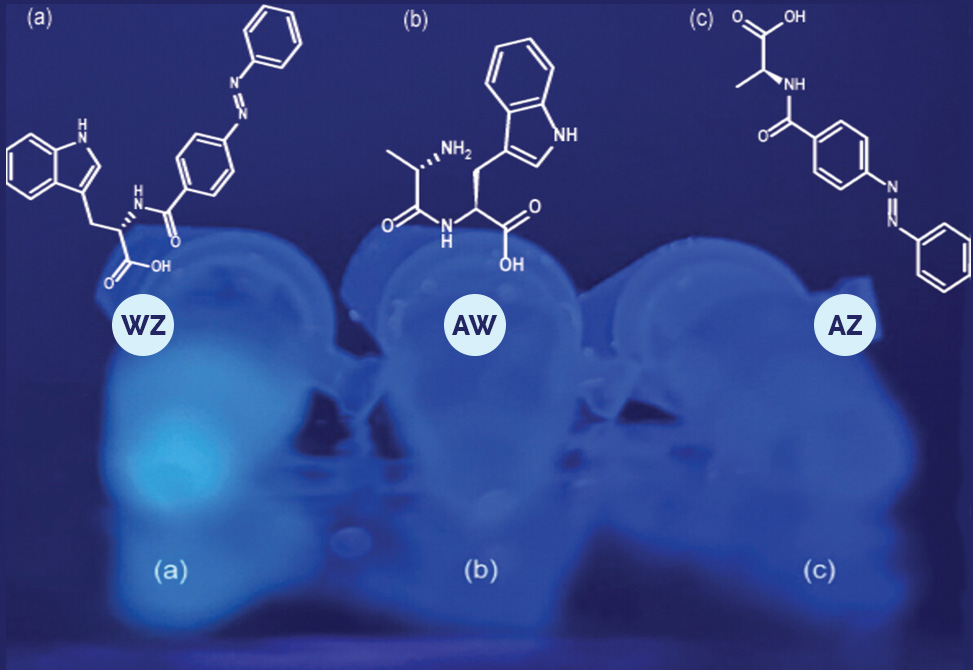
Reflecting recent work in the Wiedman lab
Azobenzenes are a series of compounds that can be isomerized upon irradiation with light. These molecules can...
Monoclonal Antibodies
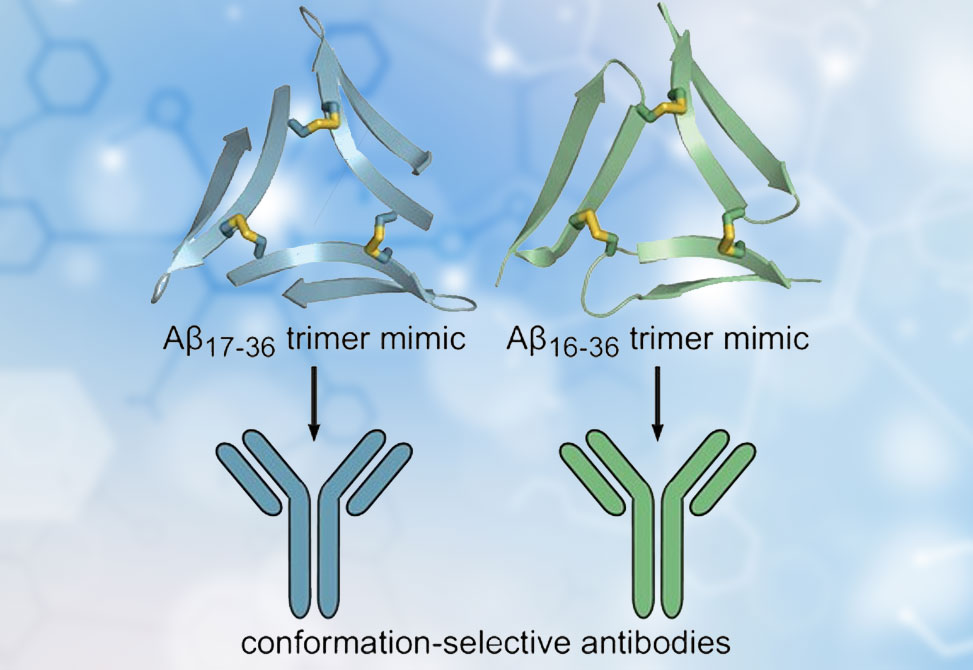
Reflecting recent work in the Nowick lab
Monoclonal antibodies, mAbs, that target the β-amyloid peptide, Aβ, are important Alzheimer's disease research tools and are now being...
Novel, Rational Drug Design

Reflecting recent work in the Deber lab
As an alternative approach to conventional antibiotics, members of the Charles Deber laboratory, published in Peptide Science, explore a novel...
Self-Sorting Collagen

Reflecting recent work in the Wennemers lab
Nature uses elaborate methods to control protein assembly, including that of heterotrimeric collagen....
Lasso Peptides

Reflecting recent work in the Swanson lab
Lasso peptides make up a class of natural products characterized by a threaded structure. Given their small size and stability, chemical synthesis would offer tremendous potential...
N-Terminal Acetylation
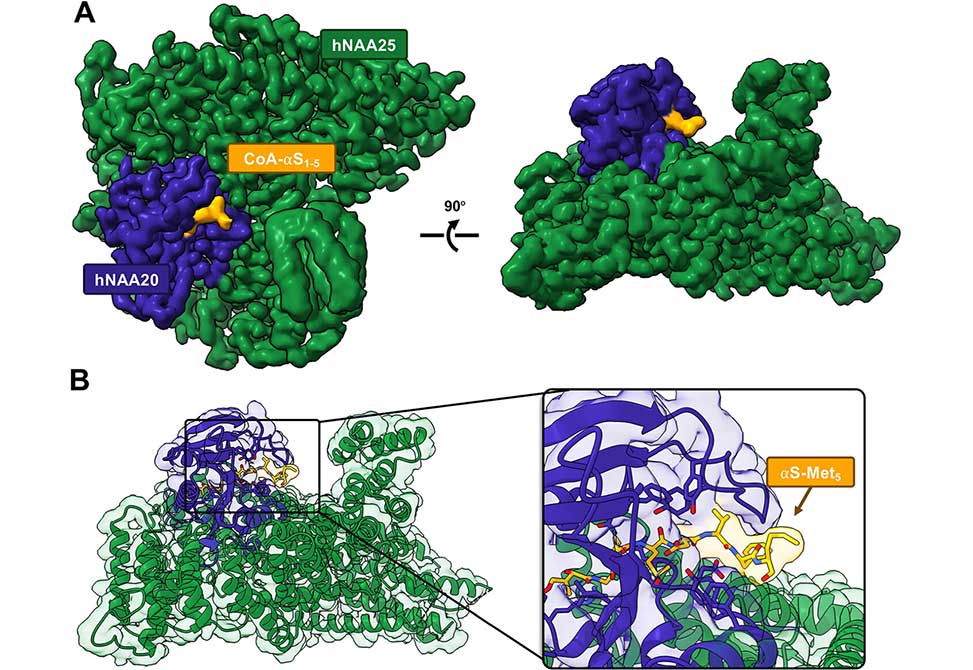
Reflecting recent work in the Petersson lab
N-terminal acetylation is a chemical modification carried out by N-terminal acetyltransferases. A major member of this enzyme family, NatB, acts on much of the human proteome...
C–H Radiocyanation
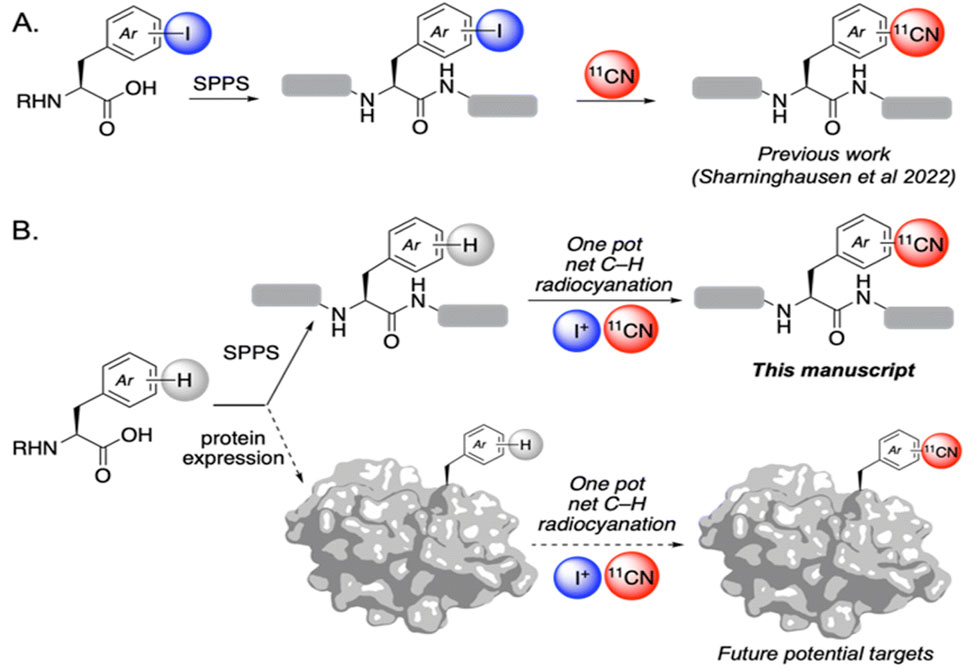
Reflecting recent work in the Mapp and Sanford labs
In a collaborative work, published in Chemical Science, between the Mapp and Sanford groups, and researchers at the Department of Radiology, all at the University of Michigan, authors describe...
Max Phosphorylation

Reflecting recent work in the Jbara lab
The chemical synthesis of site-specifically modified transcription factors, TFs, is a powerful method to investigate how post-translational modifications influence TF-DNA...
Mechanistic Studies of CyClick Chemistry
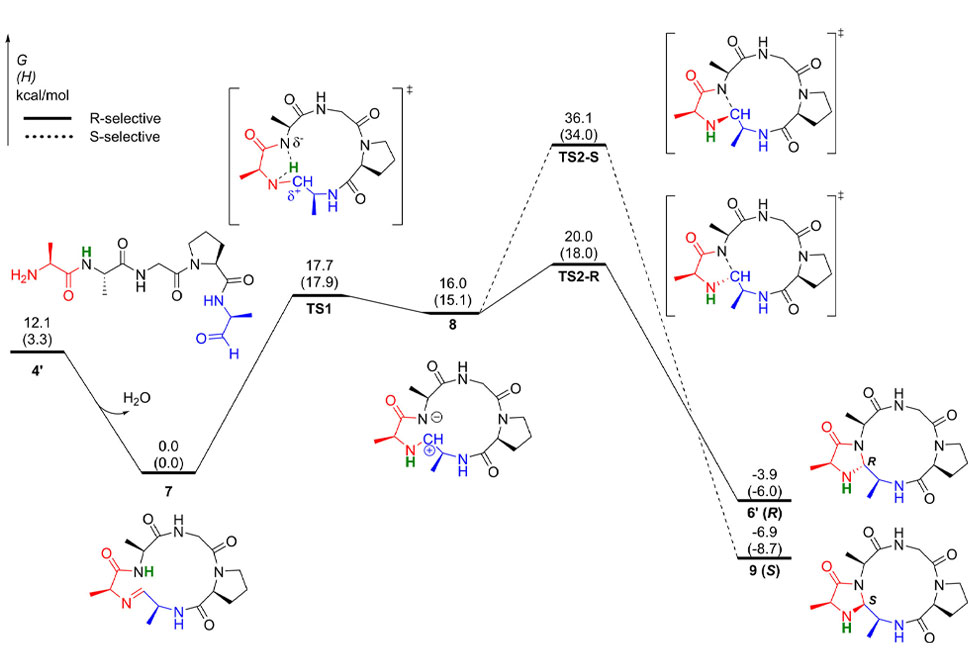
Reflecting recent work in the Raj and Houk labs
Macrocyclic peptides have become increasingly important in the pharmaceutical industry. In collaborative work between the groups of Kendall N. Houk and Monika Raj, published in...
Human Serum Albumin

Reflecting recent work in the Lam lab
Human serum albumin, HSA, is the most abundant protein in human blood plasma. It plays a critical role in the native transportation of numerous drugs, metabolites, nutrients, and small molecules...
Tyrosine Phosphorylation
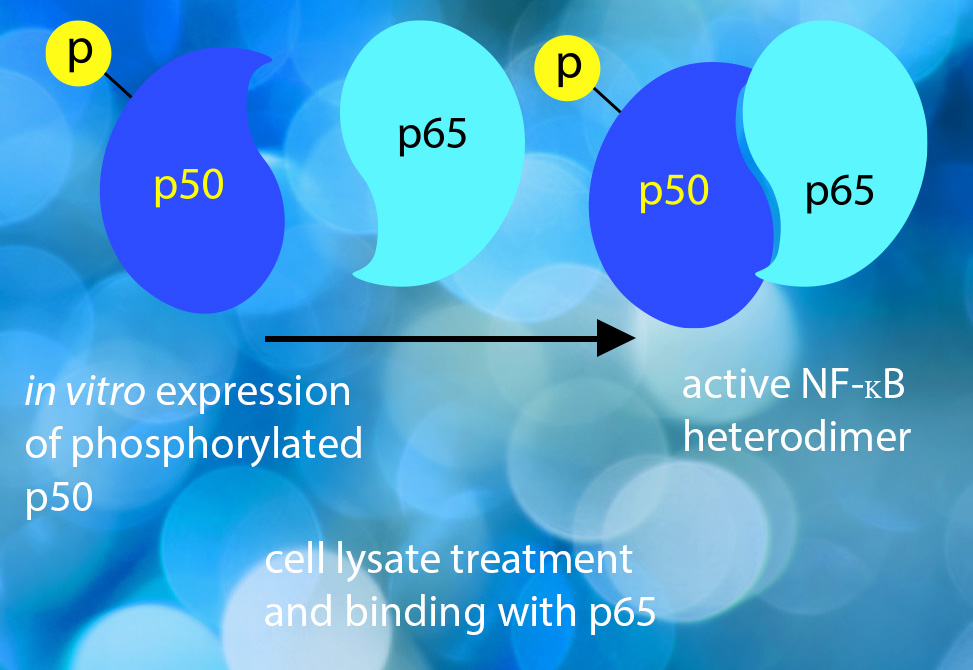
Reflecting recent work in the Hecht lab
The family of NF-κB transcriptional activators controls the expression of many genes, including those involved in cell survival and development. The family consists of...
Drug Candidate
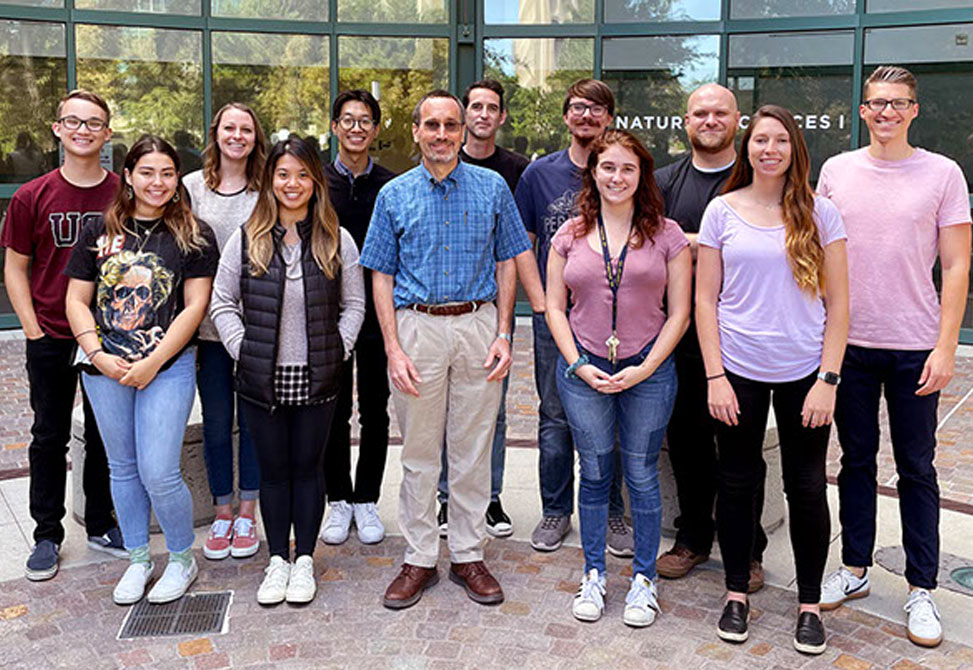
Reflecting recent work in the Nowick lab
In this article, published in Chemical Science, members of the James S. Nowick group show that the antibiotic teixobactin is a promising drug candidate...
Stereoselectivity

Reflecting recent work in the Wennemers lab
In this article we show that stereoselective peptide catalysis is feasible in complex environments, including cell lysates...
Cyclic Peptides

Reflecting recent work in the Heinis lab
The synthesis of large numbers of cyclic peptides─required, for example, in screens for drug development─is currently limited by the need of chromatographic...
Ribosomal synthesis
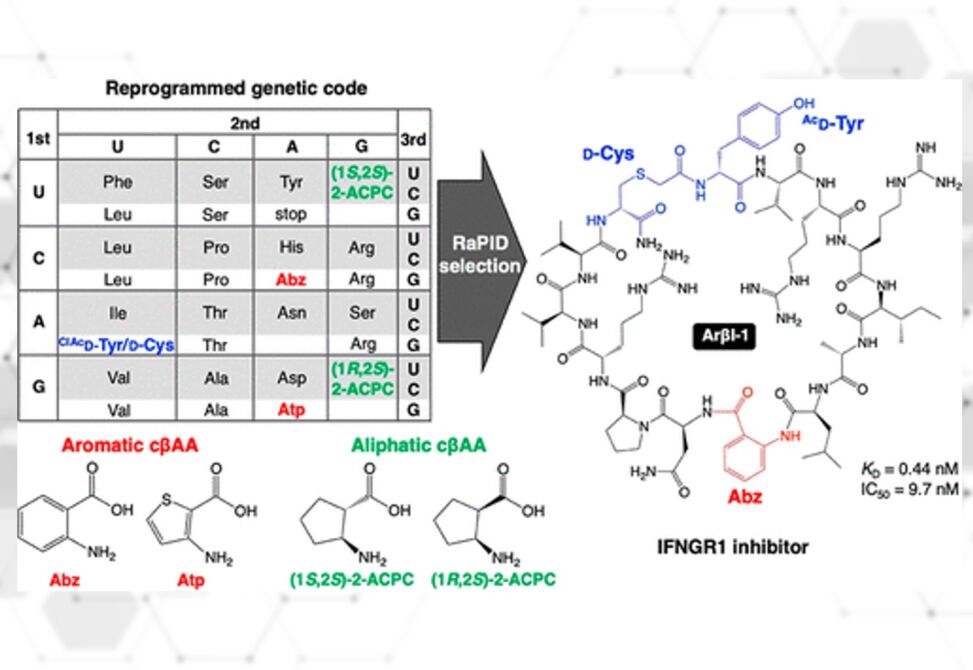
Reflecting recent work in the Suga lab
Aromatic cyclic β2,3-amino acids (cβAAs), such as 2-aminobenzoic acid and 3-aminothiophene-2-carboxylic acid, are building blocks that can induce unique folding...
Kinase inhibitors

Reflecting recent work in the Kennedy lab
Leucine-Rich Repeat Kinase 2 (LRRK2) is a large, multidomain protein with dual kinase and GTPase function that is commonly mutated in both familial and idiopathic...
Protease Inhibitors
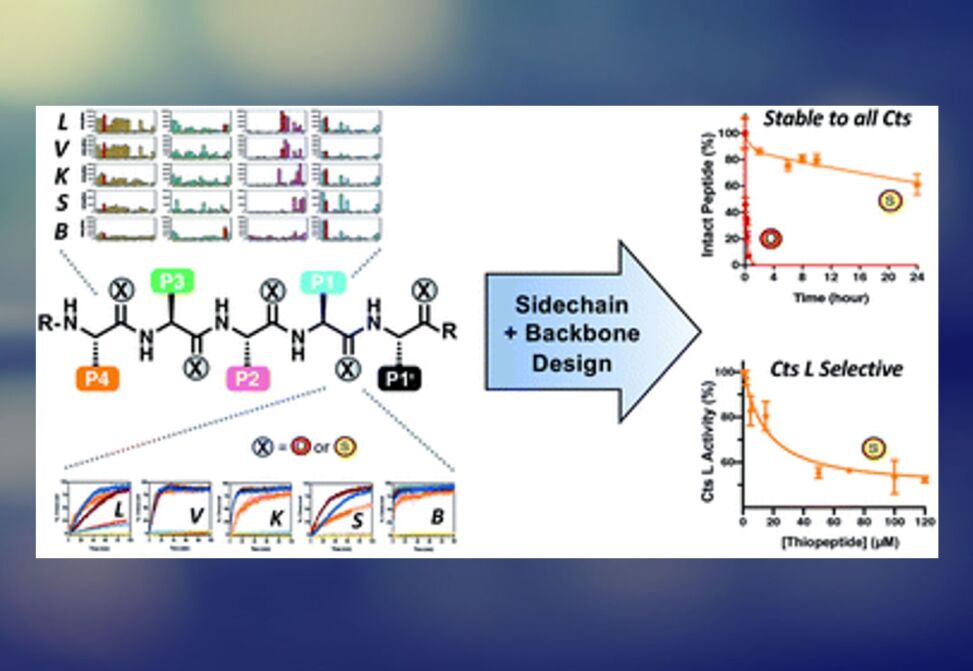
Reflecting recent work in the Petersson lab
Aberrant levels of cathepsin L (Cts L), a ubiquitously expressed endosomal cysteine protease, have been implicated in many diseases such as cancer and diabetes...
Protein Mimic

Reflecting recent work in the Arora lab
Members of the Arora lab constructed a synthetic Sos protein mimic that engages the wild-type and oncogenic forms of nucleotide-bound Ras and modulates downstream kinase signaling...
Rippled β-Sheet Motif

Reflecting recent work in the lab
In this conspectus, the authors give an overview of the early history of the rippled β-sheet and provide a detailed structural description/definition of this motif...
Peptide Cancer Vaccines

Reflecting recent work in the lab
In this article, Professor Pravin Kaumaya reviews his lab's approaches and strategies that focus on B-cell epitope cancer vaccines...
Production Technology

Reflecting recent work in the Schwarz lab
The production of peptides as active pharmaceutical ingredients (APIs) by recombinant technologies is of emerging interest. A reliable production platform, however...
Peptide Synthesis
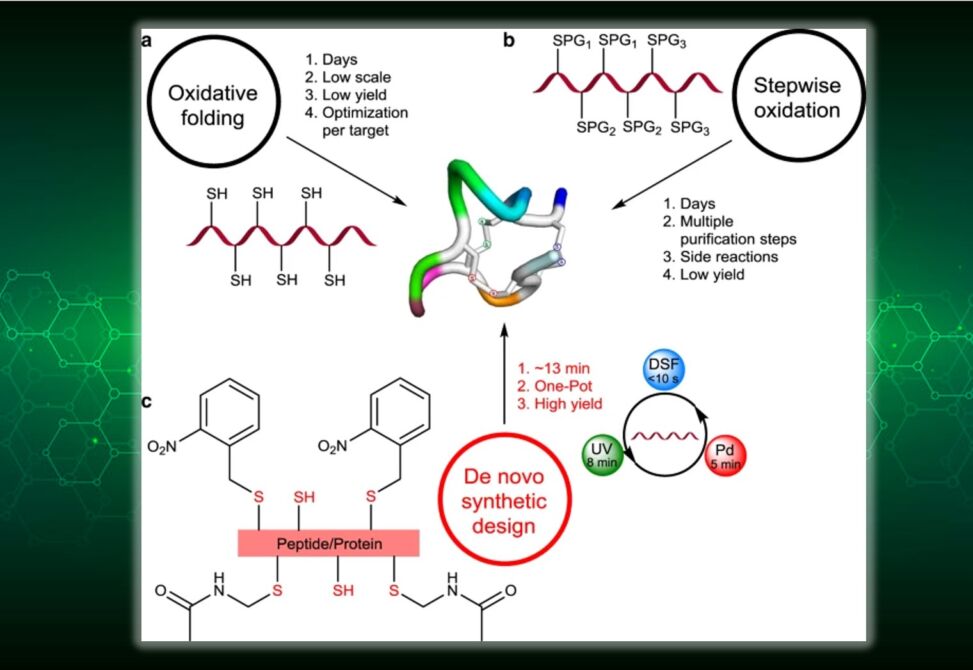
Reflecting recent work in the Brik lab
Despite six decades of efforts to synthesize peptides and proteins bearing multiple disulfide bonds, this synthetic challenge remains an unsolved problem...
Peptide-Based Vaccines

Reflecting recent work in the Lai lab
In this Review, the authors discuss peptide-based vaccines and their potential in three therapeutic areas: infectious disease, Alzheimer’s disease, and cancer...
Lariat Peptides

Reflecting recent work in the Lokey lab
Many lariat peptide natural products exhibit interesting biological activities, and some, such as griselimycin and didemnin B, are membrane permeable...
Endosomal Escape

Reflecting recent work in the Futaki lab
Endocytic pathways are practical routes for the intracellular delivery of biomacromolecules. Along with this, effective strategies for endosomal cargo release...
DNA nanotechnology

Reflecting recent work in the Seitz lab
DNA nanotechnology is an emerging field that promises fascinating opportunities for the manipulation and imaging of proteins on a cell surface...
Cyclic Peptide Ligands
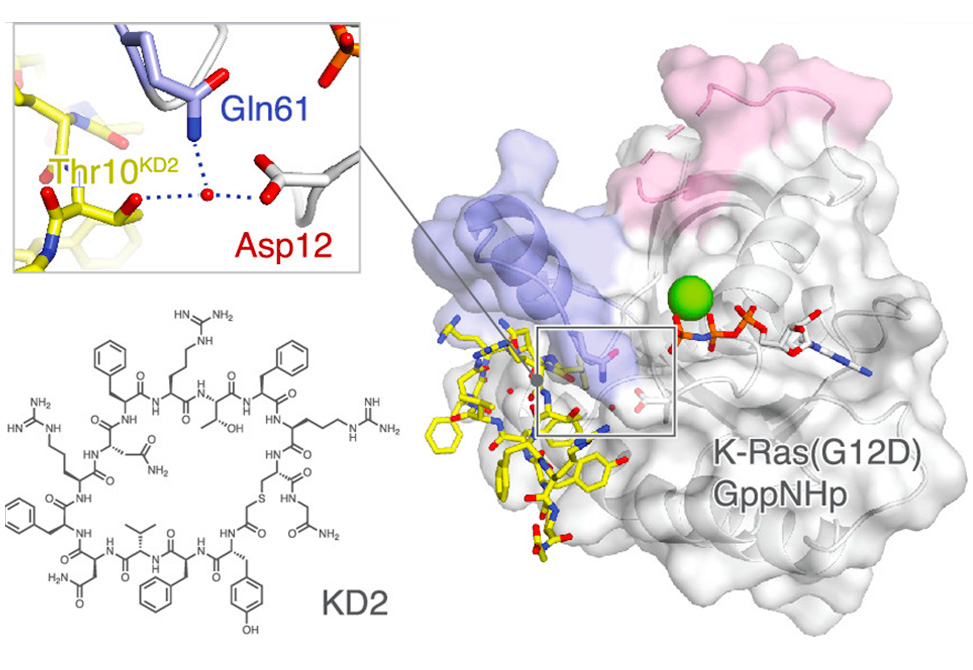
Reflecting recent work in the Suga lab
Herein is identified three cyclic peptide ligands of K-Ras(G12D) using an integrated in vitro translation−mRNA display selection platform...
Social Media Guide

Reflecting recent work in the Heemstra lab
An ACS editorial that provides scientists a guide to navigating and using social media to share ideas and enhance connections...
Membrane-Lytic Peptides

Reflecting recent work in the Schneider lab
Herein is described the use of peptide backbone N-methylation as a new strategy to transform membrane-lytic peptides (MLPs) into cytocompatible intracellular delivery vehicles...
Bioorthogonal Conjugation

Reflecting recent work in the Salmain lab
This minireview intends provides an up‐to‐date overview on the various bioorthogonal strategies implemented for the conjugation of transition organometallic entities...
Coronavirus Inhibitors

Reflecting recent work in the Hoffman lab
The novel coronavirus disease COVID-19 that emerged in 2019 is caused by the virus SARS CoV-2 and named for its close genetic similarity to SARS CoV-1...
Cell Permeability

Reflecting recent work in the Verma lab
In a larger collaborative effort, these researchers have combined the strategies to identify the first examples of all-D α-helical stapled and stitched peptides.
Stapled Peptide

Reflecting recent work in the Garner lab
Eukaryotic translation initiation factor 4E (eIF4E) has emerged as a promising cancer therapeutic target due to its role in the initiation of cap-dependent translation...
Protein Stability

Reflecting recent work in the Chatterjee lab
Abundant n → π* interactions between adjacent backbone carbonyl groups are predicted to play an important role in dictating the structure of proteins...
Modified Amino Acids

Reflecting recent work in the Wang lab
Herein, Wang et al. present a photoredox-catalyzed asymmetric method for the preparation of enantiopure β-thiolated/selenolated amino acids using a simple chiral auxiliary...
Tyrosine Sulfation

Reflecting recent work in the Payne lab
Researchers at the University of Sydney have shown that the evasin protein ACA-01 from the Amblyomma cajennense tick can be posttranslationally sulfated at two tyrosine residues...
Micelle-assisted Reactions

Reflecting recent work in the Devaraj lab
This publication shows that micelle-assisted reaction can facilitate native chemical ligations between a peptide-thioester and a Cys-peptide modified by a lipid-like moiety...
β-Turn Mimics

Reflecting recent work in the Thomson lab
Researchers report a simple reductive amination protocol to ligate two peptides, while simultaneously installing a β-turn mimic at the ligation junction...
Fluorescent Peptide

Reflecting recent work in the Nowick lab
Teixobactin is a nonribosomal antibiotic peptide that inhibits the biosynthesis of peptidoglycan and teichoic acid, however, teixobactin’s cellular site of action is unknown...
Molecular Transporters

Reflecting recent work in the Parang lab
In this collaborative study, researchers have designed a new generation of peptides based on previously designed cyclic cell-penetrating peptides. They have evaluated their cytotoxicity as well as uptake behavior...
C1B1 Inhibition

Reflecting recent work in the Pearce lab
In this recent publication, Puhl et al. have employed random peptide phage display to screen and select peptides that bind to the calcium and integrin binding protein 1 (CIB1)...
Cyclotide Production

Reflecting recent work in the Craik lab
In this manuscript researchers in Dr. Craik's lab describe a strategy to improve the production of cyclotides, which are usually produced and cyclized synthetically at a high cost and environmental impact for large scale.
Improved Thiol Protection

Reflecting recent work in the Distefano lab
Photoremovable caging groups are useful for biological applications because the deprotection process can be initiated by illumination with light without the necessity of adding additional reagents...
γ-Amino Acids Elongation

Reflecting recent work in the Suga lab
Because γ-amino acids generally undergo rapid self-cyclization upon esterification on the carboxyl group, for example, γ-aminoacyl-tRNA, there are no reports of the ribosomal elongation...
Nanosheet Fabrication
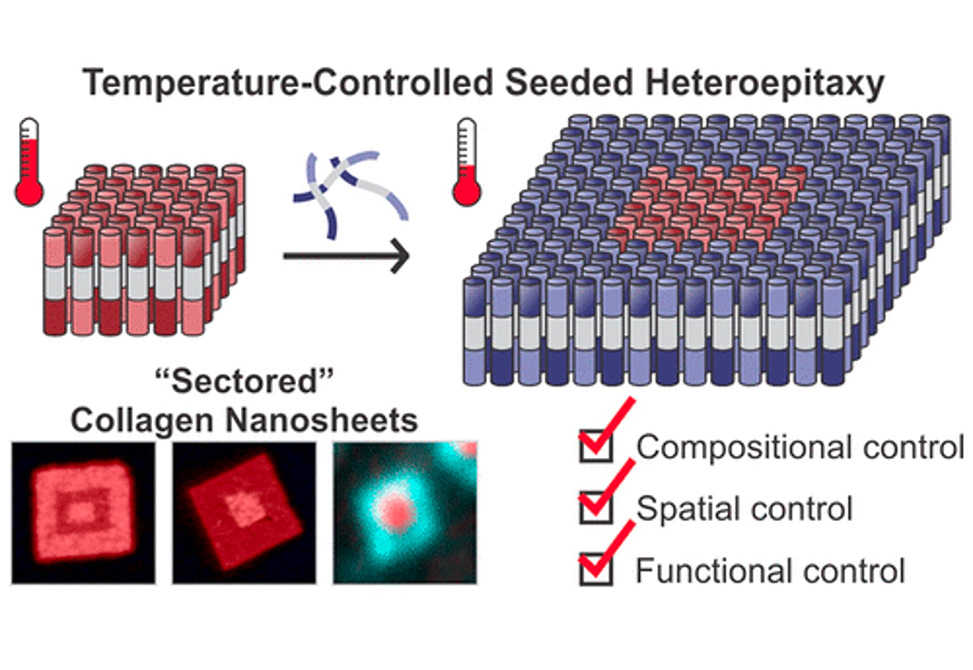
Reflecting recent work in the Conticello lab
Engineering free-standing 2D nanomaterials with compositional, spatial, and functional control across size regimes from the nano- to mesoscale represents a significant challenge....
Ice Nucleators

Reflecting recent work in the Derda lab
In a manuscript published in Langmuir, Yuki Kamijo and Ratmir Derda from the, University of Alberta, describe a screening system that employs the difference...
Ghost Peptides

Reflecting recent work in the Raines lab
A major hurdle in chemical biology is the delivery of native proteins into the cytosol of mammalian cells. Published in ACS Chemical Biology, and presented...
Short Peptides

Reflecting recent work in the Arora lab
Helical secondary and tertiary motifs are commonly observed as binding epitopes in natural and engineered protein scaffolds. While several strategies...
Roads to Rome

Reflecting recent work in the Schmidt lab
Ribosomally synthesized and post-translationally modified peptides, RiPPs, are ubiquitous natural products. Bioactive RiPPs are produced from a precursor...



